
Warning: I haven't yet optimized this webbook for mobile. You should be able to read it, but some of the formatting will be off. Also, the Table of Content, bookmarking feature and navigation buttons have been disabled.
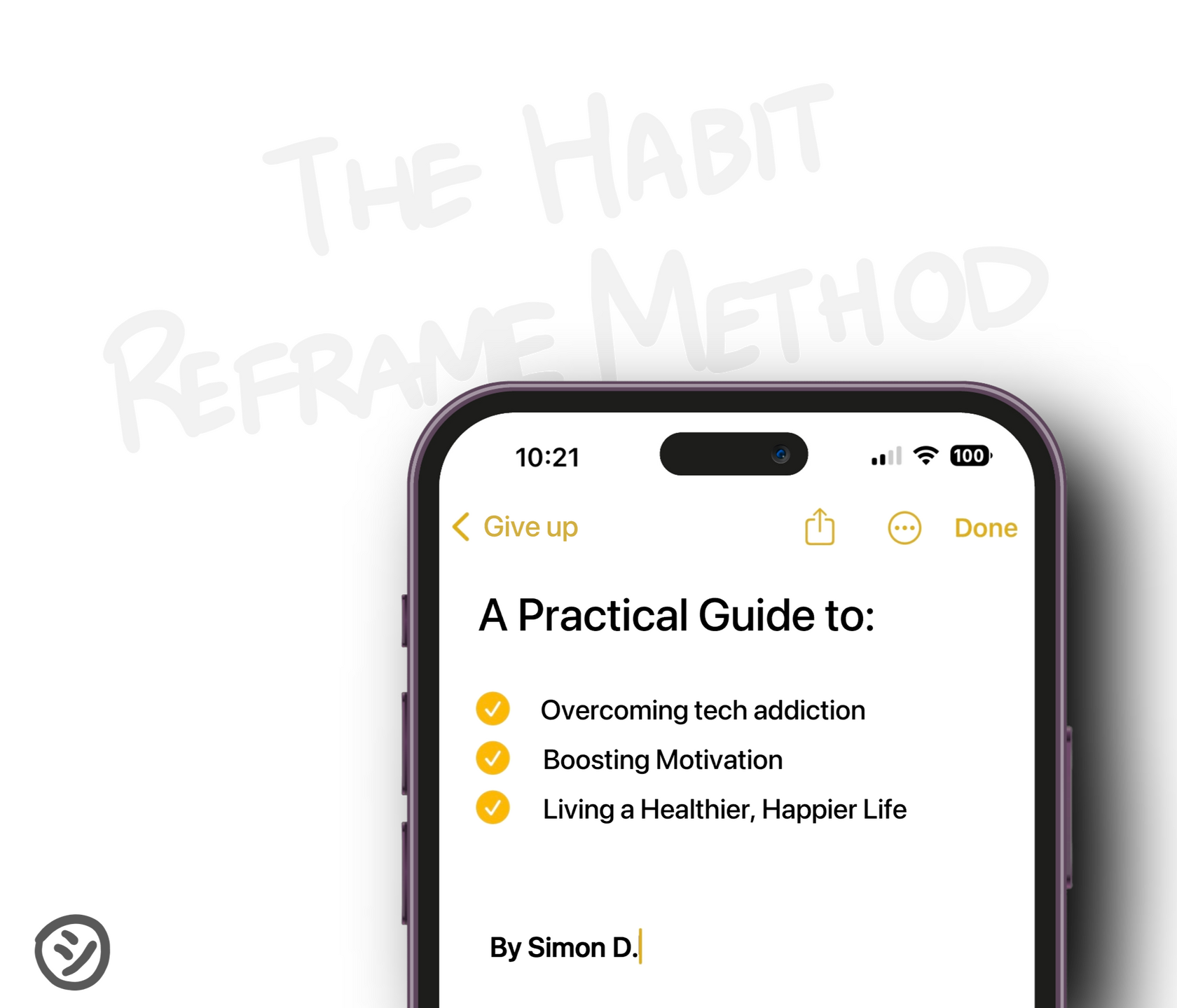
📌 Author's note
Hey there and welcome to the Habit Reframe Method.So this thing you're looking at—an ebook contained in a single webpage—doesn't have a name, so I'll go ahead and use the term webbook. My aim was to make it as self-explanatory to use as possible, but here are few housekeeping items.
On the left is a progress bar. Click it to make an interactive contents menu appear.
The yellow dot in the progress bar represents how far down the webbook you've scrolled. It's there so that, the next time you open this webpage, you can click it to return to where you left off.
After a few chapters, you’ll be introduced to this method’s workbook, which you’ll fill out using Notion (don’t worry if you’re not familiar with it—I’ll walk you through it). You can take a peek here if you’d like.
At the end of each chapter, you'll see a form box. I fully encourage you to drop a few words, or ask for clarifications or explanations. Your submission won't be posted.
The Q&A button up top is for more general questions and support. Use it when you get stuck... I'm here for that!
That's it for now. If you find a bug or something, please let me know (use the Q&A).All the best,- Simon D. ㋛
Part One - The Problem
Hidden Impacts
Surrounded by an astonishing panoply of recreational gadgets…
most of us go on being bored and vaguely frustrated.
— MIHALY CSIKSZENTMIHALYI
Technological progress has merely provided us with more efficient means for going backwards.
— ALDOUS HUXLEY
As he approached his eighteenth birthday, Noah Bradley—a self-anointed nerd into comic books, programming, and pixel art—sat down to figure out what to do with his life. He basically had three options:
Take the very safe path: take over his father’s construction business.
Take the decently safe path: pursue a career in computer science.
Take the patently unsafe path: become an artist.
Noah chose art.Almost immediately, fear began to seep in—like gas filling an empty chamber. Would he be good enough? Could he earn enough to survive? Would he crash and burn and end up an embarrassing failure?Those fears could’ve sabotaged everything. Could’ve paralyzed him with doubt, or nudged him toward distraction and avoidance.But they didn’t.As Noah explained in his autobiographical Medium article, “How I Became an Artist”, that fear propelled him. It lit a fire. He got serious. He sought out the best schools, the best mentors. He said yes to every opportunity to grow. He poured himself into his craft, determined to master it, whatever the cost.And so, the next decade played out like a classic hero’s journey—cue the montage:
Long, grueling lessons.
Tireless hours of training and practice.
Countless setbacks and disappointments.
Moments of self-discovery and accelerated growth.
In the end—and against all odds—Noah made it.He went from timid, no-name, and mediocre art student...


To a confident, skilled, and well-paid professional...

Getting commissioned by top fantasy brands like Dungeons & Dragons...

Magic: The Gathering.

Or else, working on his own world-building projects.


And with all that success, life, unsurprisingly, became pretty awesome. As he writes, he got to enjoy:
Comfort and gratification, earning a living doing what he loves.
Connection, status, and approval, being respected by peers and adulated by fans.
Thrills, pleasure, and excitement, traveling the world, meeting high-status people, and having fun adventures.
It may have taken a decade's worth of effort and perseverance, but for Noah, it was all amazingly worth it.
For most people, reading a story like his can be beyond inspiring—especially if they, too, have creative or entrepreneurial ambitions.I remember reading it for the first time a decade ago. And yet, as much as I admired his journey, something about it stung.It's like I wasn’t reading anything new. I already knew that to achieve my goals, I had to hustle, focus, and grind for years. I already had a strong work ethic and believed in sacrifice and practice and showing up.But that belief never got me to stick with the process. It didn’t matter how bad I wanted it. Didn't matter what method I tried or tools I used.For me, getting exposed to success stories like Noah’s—and I came across many given my social media feeds—always seemed to inflate a bubble of hope… Only for it to pop the moment I'd remember how utterly inconsistent I was. How I couldn’t ever follow through.Looking back, sometimes it felt like nothing mattered.Throughout my twenties, I was plagued by apathy and lethargy—toward my career, my creative projects, my daily life. My motivation and focus would drop off a cliff a few seconds into any work session. It felt like I just didn’t have the grit. Or resolve. Or even care.I was stuck in a miserable rut. And I had no idea why or how to get out.It wasn't until years later, after learning everything I could about motivation and how it actually happens in the brain, that I came to see the true cause of my eternal stagnation.And the clue was hiding in plain sight—right there at the end of Noah’s story.
The Real Reason You Waste Time
Step zero of the Habit Reframe Method—before we talk strategies or routines or website blockers—is this: letting go of the belief that you are the problem. That you are to blame for all your time-wasting failures.Because you’re not.You’re not broken. You’re not damaged.You are not the problem.You, in your efforts to improve yourself and your habits, have simply been working off the wrong assumptions—assumptions about why you procrastinate, why you break promises, why you coast and underachieve.And that why is not you.My hope is that this notion began to seep in as you read the 20-Minute Motivation Method PDF. I hope it made it past your defenses, giving you a rare moment of self-compassion—a moment like:
Okay, maybe that makes sense... Maybe all that stuff about vices and shortcuts to rewards... maybe it actually explains why I waste time and procrastinate so much. Maybe I’m not so fundamentally flawed after all.

But... if it didn’t, or if you went on to doomscroll for another 8 hours, effectively erasing the notion from your mind... that’s okay too. Because when it comes to self-compassion and kindness, we’re not done yet. In fact, we’re just getting started—it really is the foundation of the entire method.We’re going to turn all those ‘maybes’ into an absolute certainty. I can promise you that.But, hey. I’m getting ahead of myself here.Let’s back up for a minute. Let's restart with a quick recap of what we’ve learned so far and where we got stuck. We'll then take it from there.
The True Cost of Rewards
For the vast majority of humanity's existence, pleasurable rewards had to be earned through meaningful effort. Hunting. Building alliances. Contributing to your tribe. Every reward came at a cost—physical, emotional, or social.
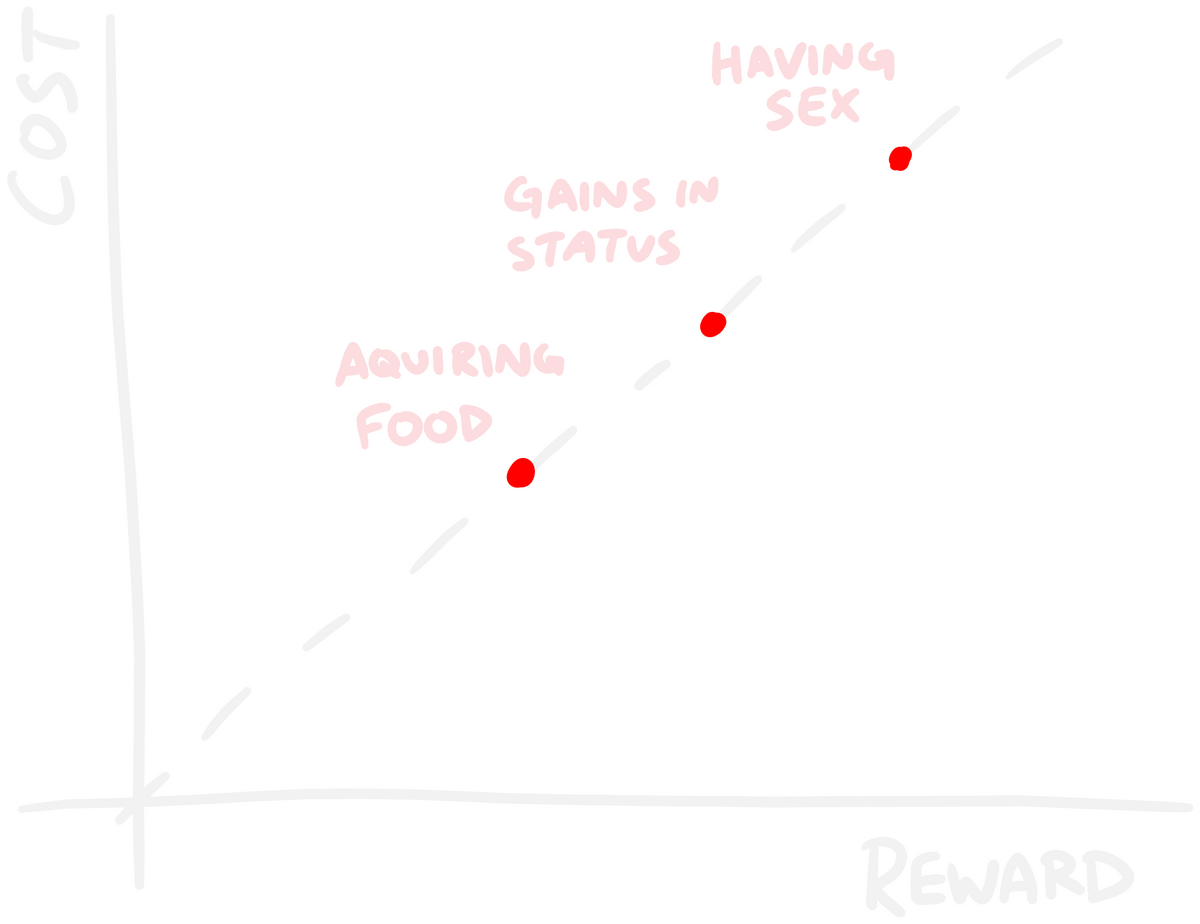
And that reality still holds true. Take, for example, Noah's journey. After putting in a decade of hard work, Noah got rewarded. He got rewarded big with tons of very pleasant sensations.Comfort. Approval. Connection. Gratification. Excitement... Pleasure.And that's great and all for Noah... but just think about those feelings for a second.As much as we crave them, they aren’t exactly foreign to us, are they? Truth is, we're getting to experience them every single day—and it's not as a result of patience and years of hard work.No. We're getting them from our vices.When we feel down, we order our favorite childhood junk food—instant comfort and excitement.When we're stressed or overwhelmed, we scroll Reddit, Instagram, Twitter, TikTok—little bursts of approval and connection.When we can't bring ourselves to work, we binge YouTube, sitcoms, movies… and fine, some porn—hitting the same reward circuits for gratification, pleasure, even affection.

The reality is, both us and Noah are getting to experience the same visceral feelings. The same rewards.But our brains don't know our version is fake. That it's all happening through cheap, artificial shortcuts—through simulations with zero substance.And that right there is the heart of the problem.
Shortcuts to Rewards
Us humans... we’re not so different from other animals. We need a carrot on a stick to take action. We need the promise of a reward, otherwise, we’d sit around doing nothing all day, conserving our energy. Which makes sense given how we all evolved in an environment of extreme energy scarcity.And vices? Vices are all about that promise. They provide easy shortcuts to reward.
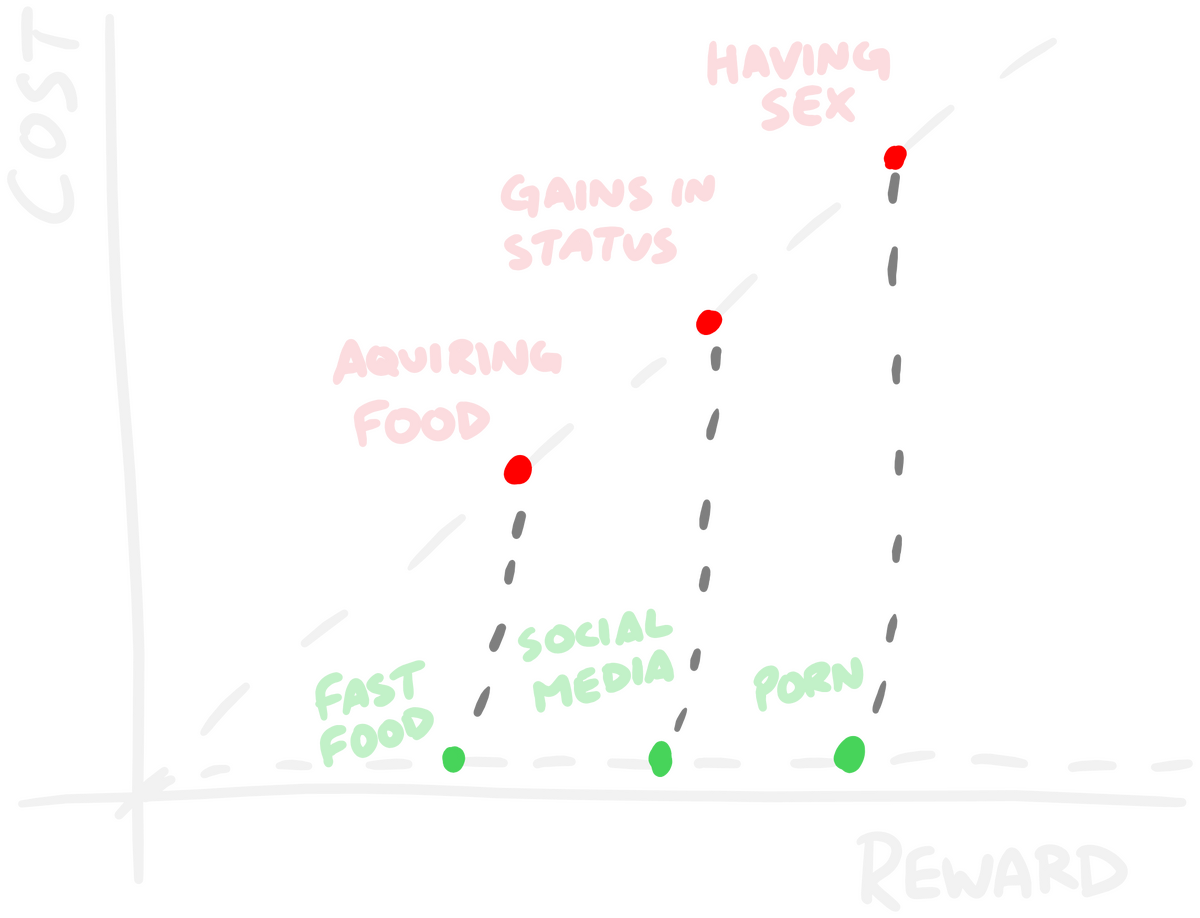
On the surface, that all seems fine—great even, when you consider how nice it is that we can, say, pop on a video game to enjoy the thrill of adventure... rather than trekking into the wild and risk twisting your ankle on a protruding root.But when you overdo it—when you flick your way through reward after reward, hour after hour, day after day...
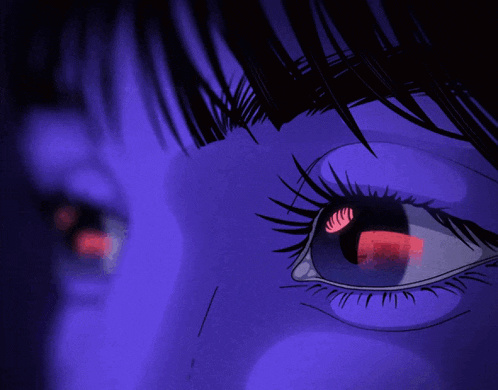
Your brain gets gaslit into believing you're surviving exceptionally well. That, thanks to social media algorithms, you’re already living your precise dream life.So when it comes time to actually do something hard—to work, to create, to take real action—your subconscious pushes back.It’s like:
“Uuhh... didn’t you get the memo? We’re good. We’re living the dream. Look at all the accomplishments and rewards we just felt.There’s no way I’ll approve the burning of more precious calories. You need to relax and recoup."
And that’s when you get slammed by soul-crushing resistance. By that heavy, unrelenting “ugh, I just don’t feel like it” sensation.That’s why you’re stuck.
The (Other) Impacts of Vices
When it comes to the overuse of vices, motivation isn’t the only thing that takes a massive hit—although it’s most critical and will remain the focus of this webbook.

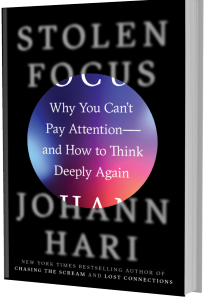
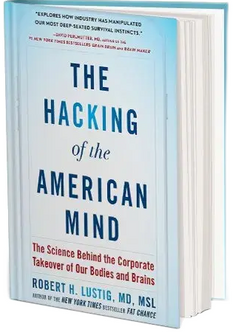
So what you’re dealing with on a daily basis is actually a cluster of symptoms: a set of psychological effects that build up and feed off each other. We're talking:
Lethargy and a chronic lack of motivation (we've covered that already)
Apathy and a lack of happiness
Anxiety
Attention and deep-concentration issues
Disinterest in what was and should be interesting
And that’s what you’re dealing with. That’s what has you stuck in a rut of inactivity, unable to focus, weighed down by chronic low-grade dysthymia, depression, apathy—unable to break out.
The Poison Drip
Low mood. Scattered focus. A lack of drive and motivation.All of that sucks… but like, what would your local podcaster say about it?
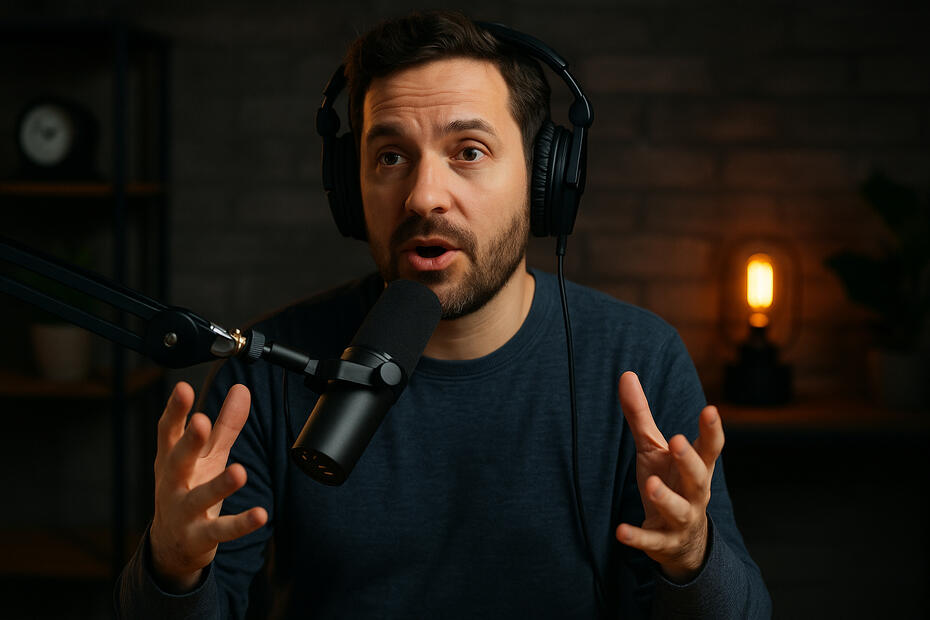
"So what? Don’t be a victim in life.You think I feel "motivated" when I wake up at 5am for my 5k run and 5-hour writing session? You think I “feel like it”?No. I just show up and do it. Motivation follows action, so stop making excuses, get your life in order, and just do it."
Okay. That’s fair, actually.Because, at the end of the day, you do have free will. No one’s forcing you to procrastinate or waste your life. You can use willpower. You can use discipline. You can, for once in your life, get your act together and get something done.But let me ask you (or the podcaster) this:What if you met someone suffering from heavy exposure to a toxin—let’s say lead. They’re showing clear signs of lead poisoning: lethargy, brain fog, and low mood.Would you tell them to get their act together? To push harder? To use willpower and stop being a victim? To just do it?I hope not.Well, your thing isn’t all that different. It’s like you've been hooked up to a poison drip—one you don’t notice. It doesn’t knock you down all at once. But over days, weeks, months, it builds. The symptoms... they creep in ever so slightly.
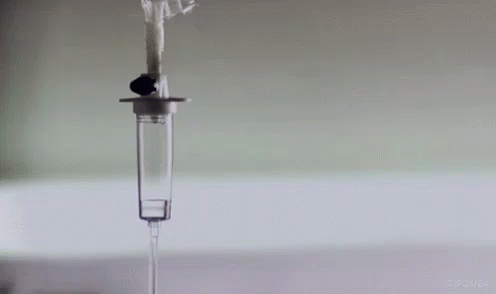
Eventually—and inevitably—those symptoms start shaping your behavior.Sure, you can push through for a while. You can force it. Muscle through with grit. But when the symptoms of VIDS are constant and unrelenting… you just burn out. So you stop showing up. You stop doing the work. And you start procrastinating, doomscrolling, numbing out—all while hating yourself for it.And in a way, your situation is worse than the toxin example. Because the resulting behavior itself becomes part of the exposure. It’s like if one of the symptoms of lead poisoning was an irresistible urge to lick lead paint.That’s Addiction 101: two-way causation leading to a trap of recursive degeneration.
So once again—the way you've been acting is not about you being weak or pathetic. It's not you having a major character flaw. It’s definitely not about you being lazy.It’s about living with a real syndrome. With real symptoms. Symptoms that quietly wear you down and drain your ability to get anything done.And yet, you never see it happening... because you’re too busy blaming yourself. You keep thinking it’s you. You and your lack of self-control. You and your failure to “just do it.”You keep thinking the answer is more inspiration. More “wanting it.”A better productivity app. A better routine. Some magical new habit system.But that’s not it. It never was.Because it’s not you.It’s not your fault.It’s not you.It’s not your fault.It’s the VIDS.It’s the vices.
The “Just Stop” Solution
Your decisions are strongly prepared by brain activity. By the time consciousness kicks in, most of the work has already been done.
— JOHN-DYLAN HAYNES, NEUROSCIENTIST
Alcohol: the cause of, and solution to, all of life's problems.
— HOMER SIMPSON
If the problem is the overconsumption of vices... what then is the solution? What's the cure to VIDS?Well, let’s go back to the toxin analogy.If your walls are full of lead paint, the first step is obvious: Rip them out. Stop with the damn exposure.Same thing here.Cut out the vices.Give your brain time to detox (as much as I dislike that word) and reset.Without vices, your VIDS symptoms will start to fade. You'll feel lighter. More clear-headed. Just all around better. And as that happens, your natural motivation will creep back up to a baseline.
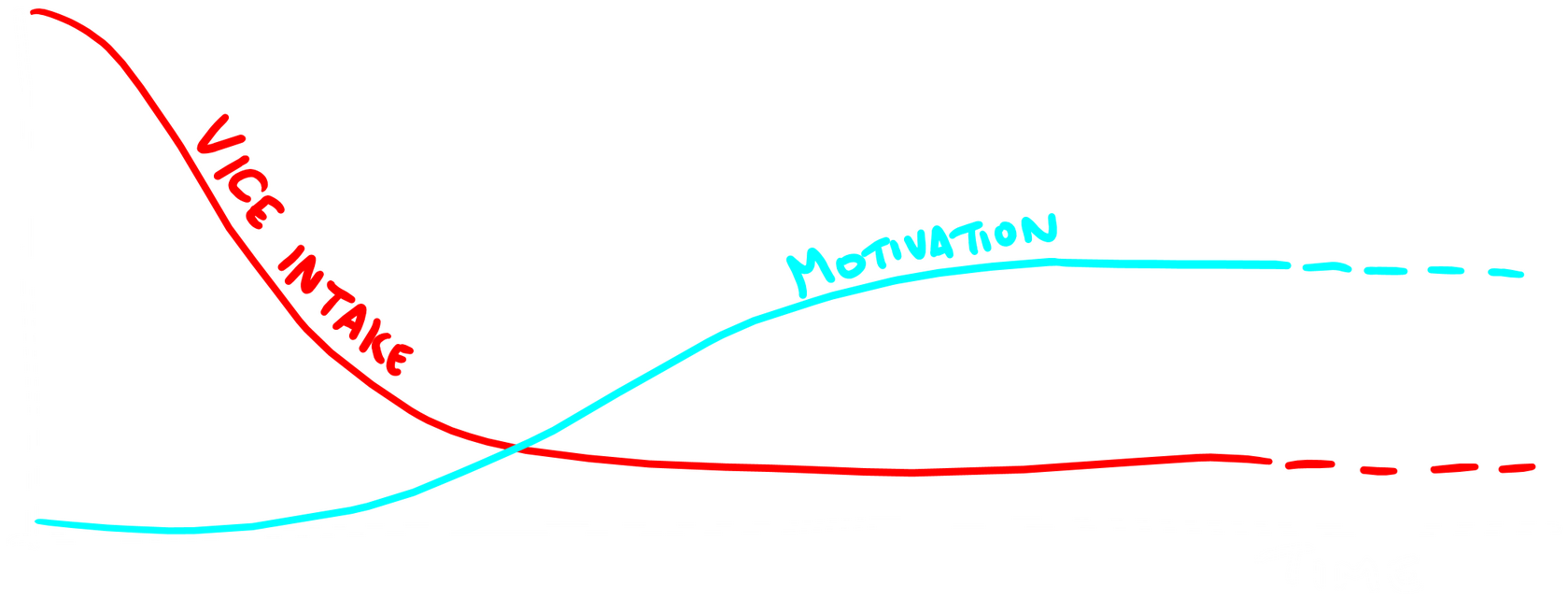
And that’s when your behavior shifts.You'll start doing the work. You'll start showing up.You'll start building good habits.
None of it forced. None of it through willpower. Just honest, natural, uncoerced effort toward real rewards and real benefits.That’s the cure. That's how you go on to live your best life.Simple, right?But as we’ve already established… that first step, stopping the vices, is 784x easier said than done (I measured it).So, this won't be your first rodeo. You’ve already made the promises to quit or cut back on vices—if only because they waste so much time.But it never sticks. You keep going back—even when you know better. Same old habits. Same patterns. Same loop. Same regret.The question is why?
Why You Keep Coming Back
The answer to this all-important question is found by considering the life and times of... a moth.

You see, during the day, our little moth friend hides and sleeps. It's at night that he comes out to find food and go through his mating ritual.But it's dark, and his little bug eyes don't provide the best vision. He's come to rely on the brightest object in the sky for orientation, which is usually the moon.

Now, if we were to observe this moth, we might define—at any given moment—an action path. It's the path that best keeps him safe from predators or else moves him toward food or a potential mate.We might call this the "Is Right" path.

Thing is, our little moth friend isn't actually thinking about any of this. He’s not weighing pros and cons or consulting best-practices flowcharts, trying to arrive at an optimized Is Right direction.No. Taking the path that Is Right—the one that’s best for survival—has simply come to feel right.In other words, through millions of years of evolution, the path that Is Right is now tightly aligned with the path that Feels Right.
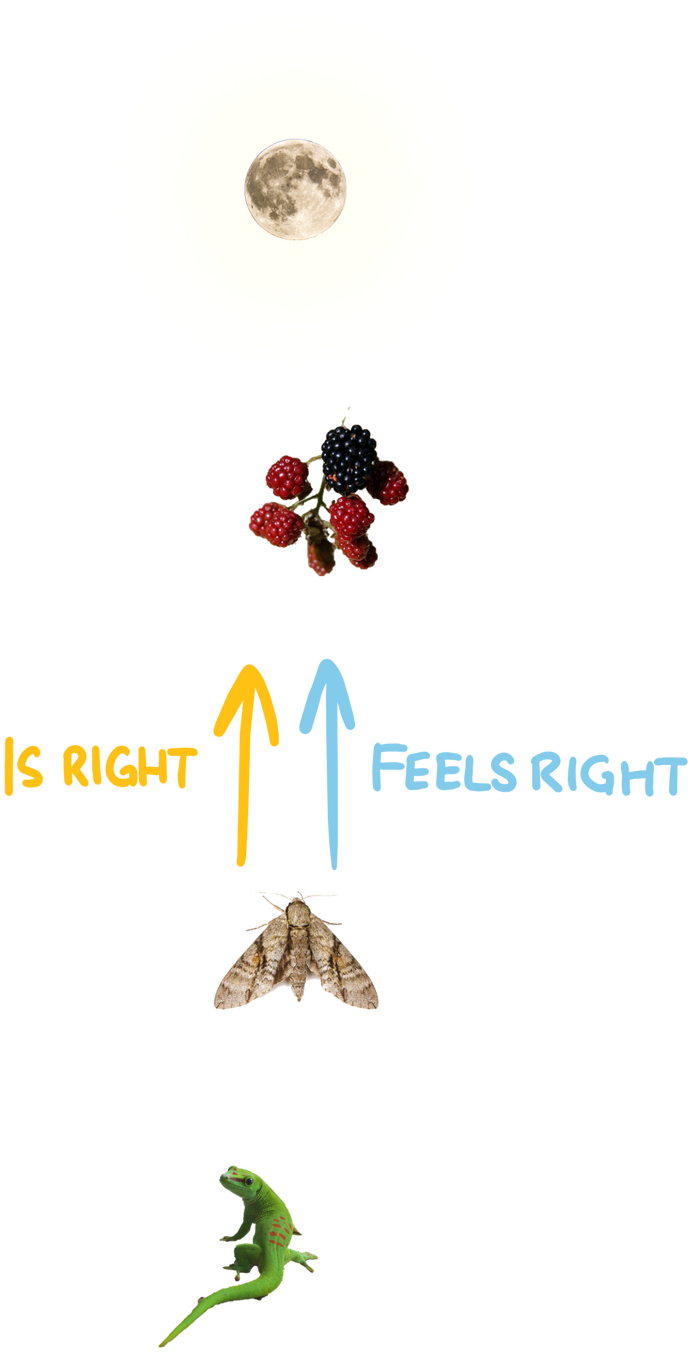
How do I know all this?Like, how do I know moths aren’t secretly skilled in critical thinking and change management?Well, it’s because humans came along and introduced something entirely new to their environment. We added artificial lights.
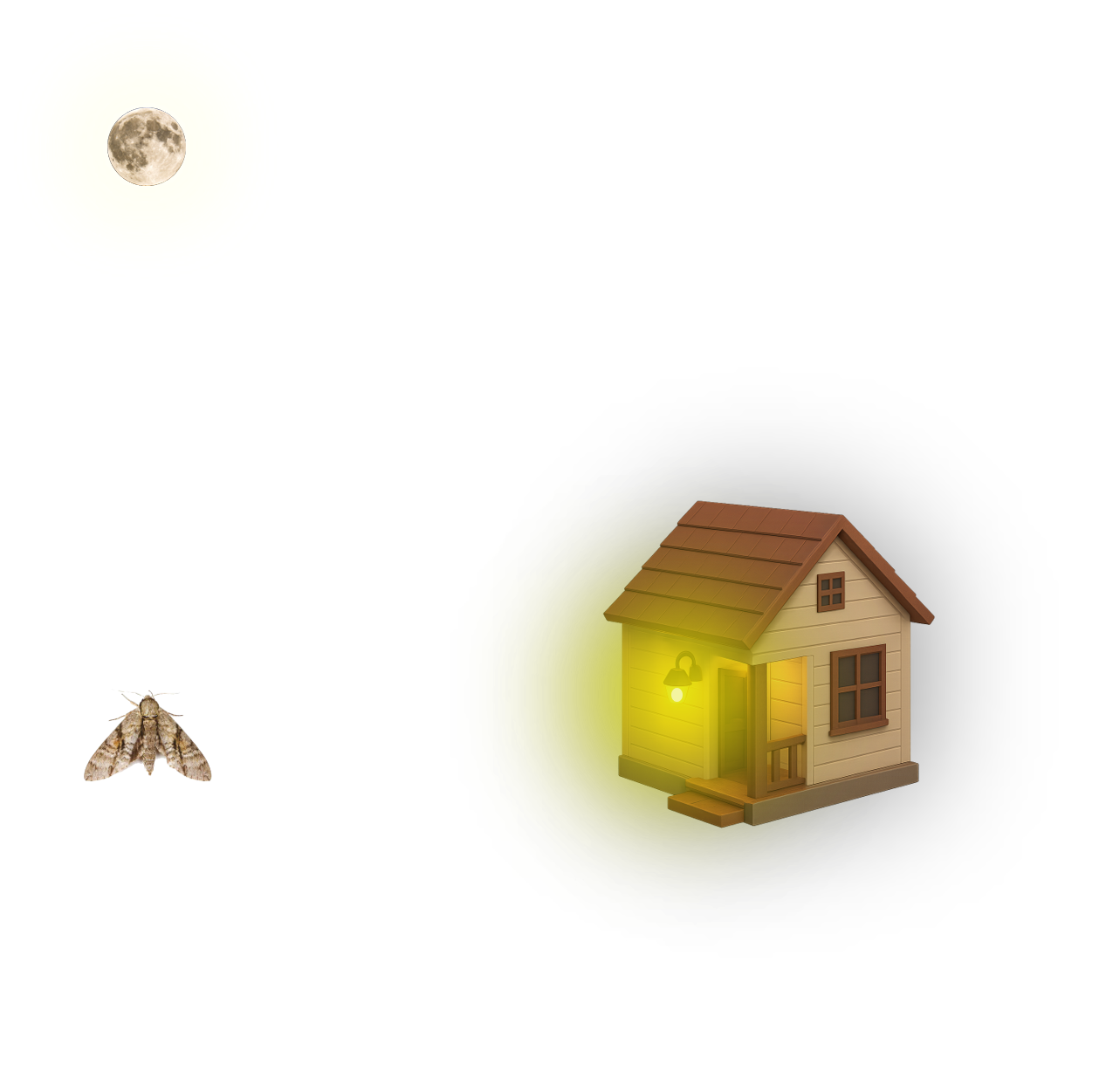
With these lights, nothing fundamental has changed.Food still needs to be found. Mates still need to be courted. Predators still need to be avoided. The moon's still happily glowing bright in the sky.The path that Is Right—the one that ensures survival—stays exactly as it was.Yet what has changed for the moth... is what Feels Right.

Artificial lights are brighter, warmer, and closer than anything else in the night sky. As such, they disorient the moth, causing it to fly in erratic loops as its reference point—once steady for millennia—just won't stay put.All the while, he’s super confused. Because, at every moment, he's still doing what feels right. His looping feels purposeful. It feels like survival. It feels like his only way out.But it’s not. In fact, it's the opposite. And he's not surviving—rather, he's at risk of collapsing from exhaustion or else getting tangled up in a cleverly positioned spiderweb.Simply put: the path that Is Right—the one aligned with survival—has been wrenched apart from the path that Feels Right.Millions of years of painstaking evolution... undone with the flick of a switch.
Misaligned Paths
It’s easy to scoff at the irrational behavior of moths. It's like, c’mon man… clearly that bright, hot light isn’t the damn moon. Why don’t they ever learn and adapt? Moths are pretty stupid.Okay, sure… but, are humans really that much better?
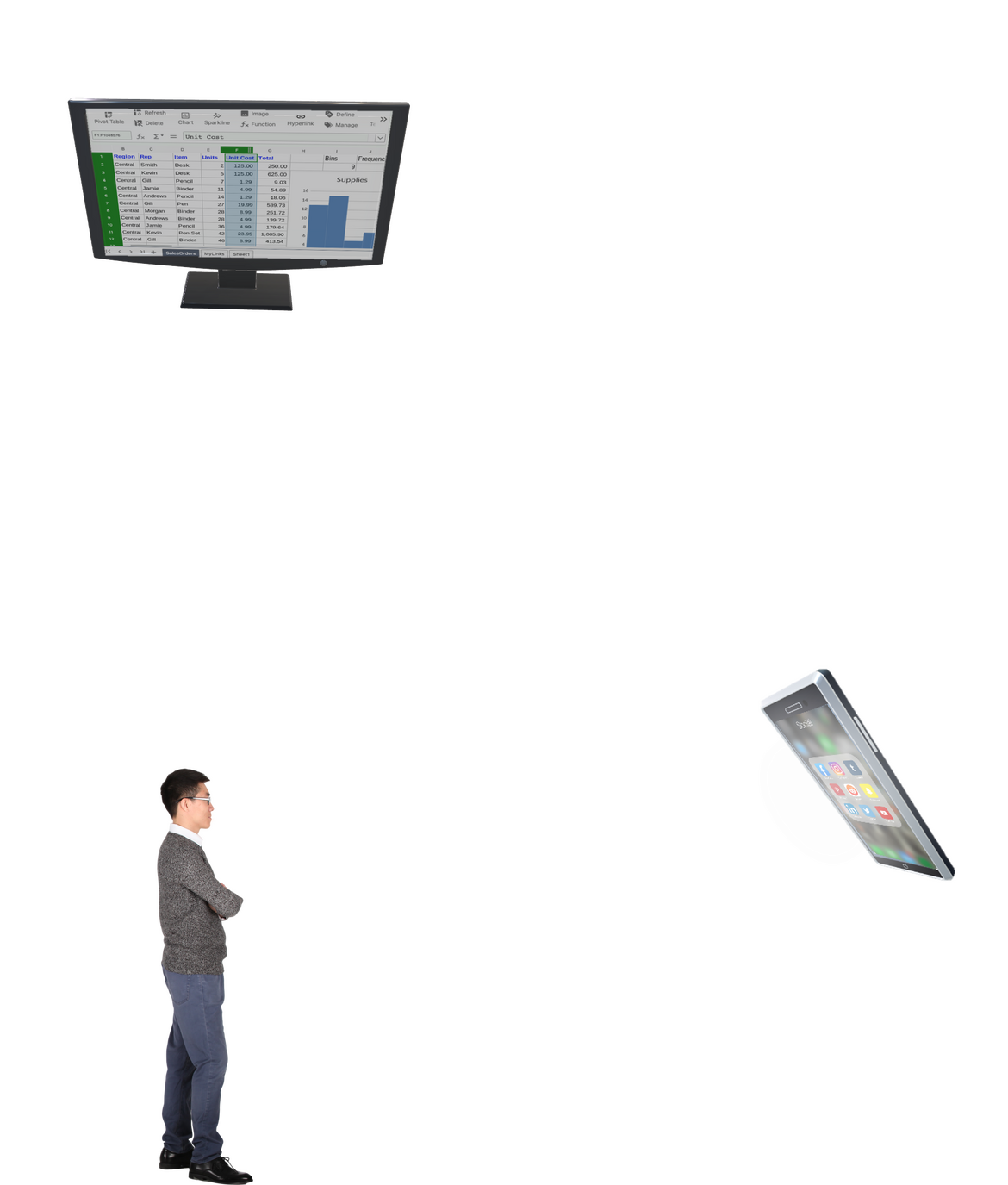
But let's back up a bit—lay some groundwork for that punchline.Yes, as humans with big human brains, we’re more sophisticated than moths... but only in the way that we don’t use a physical point in the sky to orient our actions.Instead, we direct ourselves with a metaphoric one—one we might call our North Star.

Our North Star represents our highest ideals and values. It’s what we believe will guide us to our aspirational identities, to our goals and ambitions, to the most meaningful experiences and satisfying rewards life has to offer.Having that kind of internal compass, oriented towards our ideal future, is also an evolved survival adaptation. We’re tribal by nature—so whether our goals are vain (like acquiring and displaying material wealth) or selfless (like caring for the vulnerable), it’s all to our species’ greater benefit.So, through millions of years of evolution, the path that Is Right became tightly aligned with what Feels Right.

Which is great—because humans, like all animals, are driven to act based on quick visceral feelings, not on slow logic. We act on what feels right—not what’s rationally best.That system worked beautifully for millions of years… that is, until we introduced something to our environment that’s as new, foreign and disorienting to us as artificial lights are to moths.We introduced vices.
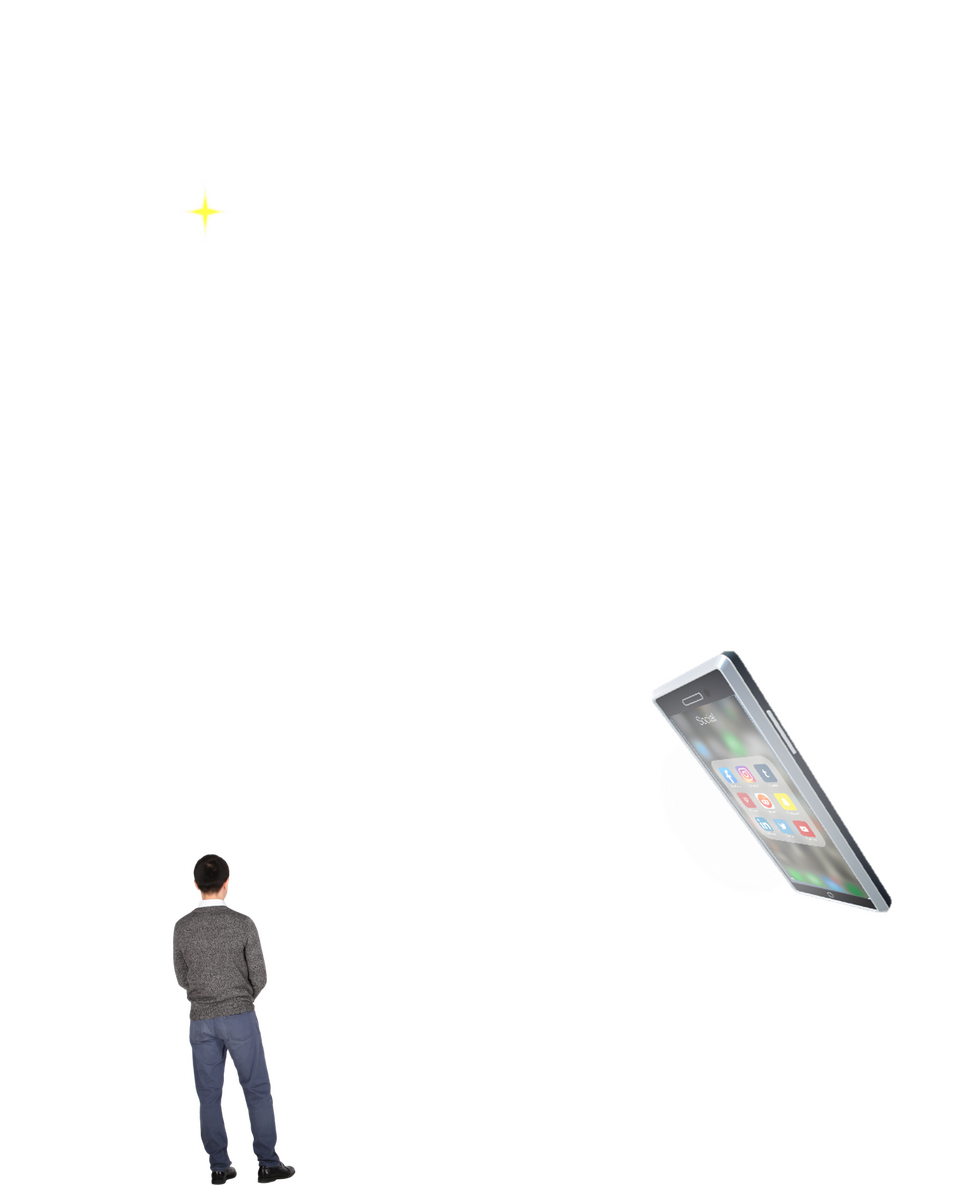
Vices are infinitely brighter, warmer, and closer than our faint and distant North Star.They've come to pull our sense of what Feels Right completely out of alignment with what Is Right.
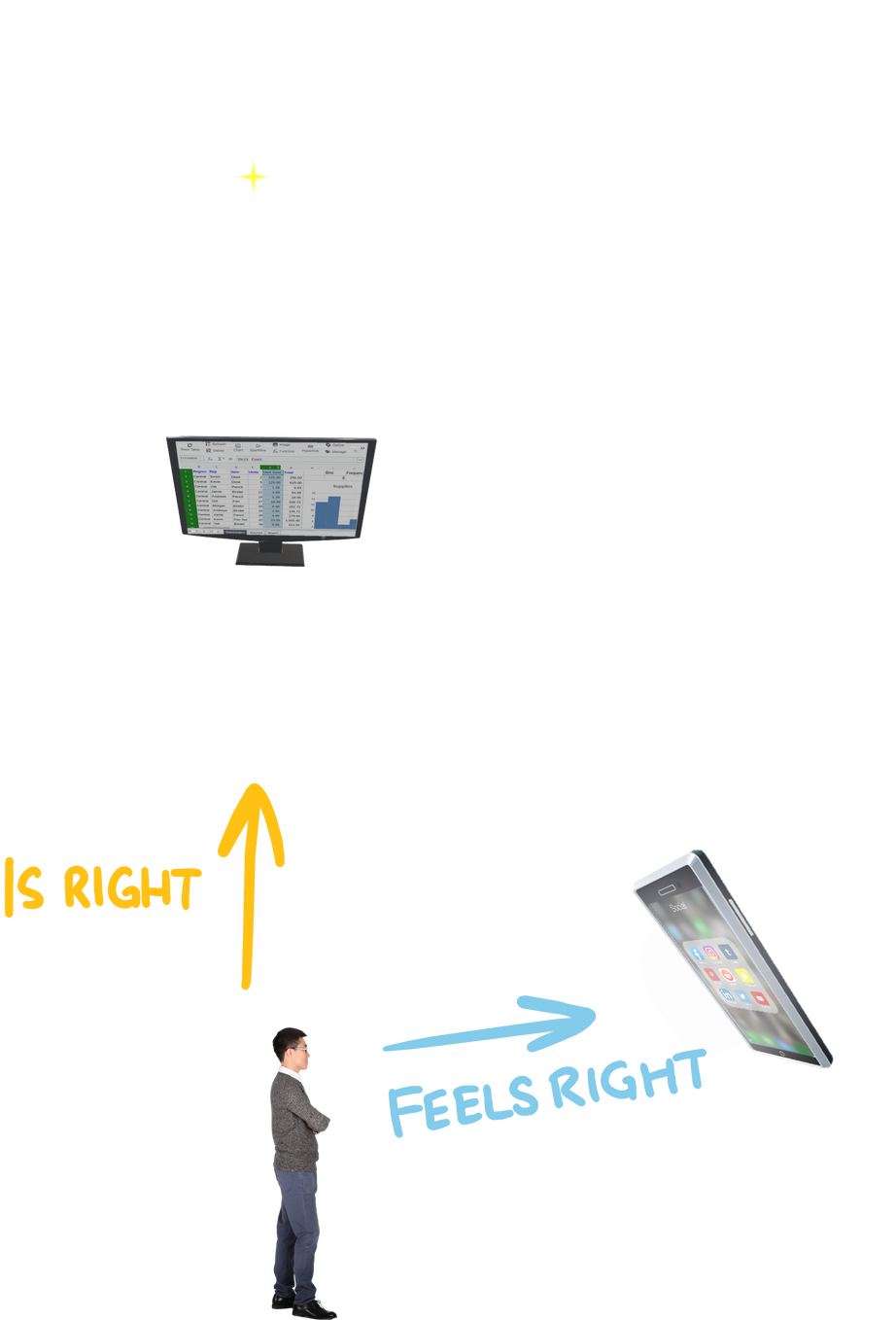
And not unlike the moth circling a porch light, this gets us ensnared in endless dopamine-driven loops of wanting, approaching, and consuming.That's because, there’s nothing to pull us away. No sense of completion. No finish line. On the contrary, it continues to feel more and more right—despite all evidence to the contrary—so we keep chasing and looping and doomscrolling until we collapse from exhaustion.This is super important, so I’ll say it another way:With vices, the signal for reward—and survival—is loud. Louder than the quiet pull of our North Star. So it feels right to go after it. It lights up our dopamine pathways and proves its worth with every instant hit of gratification.
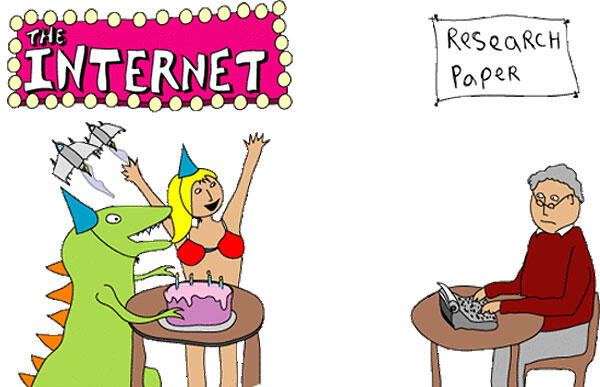
But the actual potential for survival benefit? It’s nonexistent. There's no actual substance to gain. Not only that, it can lead to survival detriments. To stress and anxiety. To the risks and harms of procrastination and underperformance.Vices lead to survival threats.And so, just like our moth friend, we circle back to eliminate the threat. Because doing so feels right. Which then amplifies the survival threat, so it feels more right and we return once again.Then again. And again. And again.

Until... well, there is no "until". Some of us can spend our entire lives aimlessly circling around vices.
What's Actually Changed
Despite everything—despite the vices, the loops, the binges, the self-reprimand—your North Star hasn’t changed.Sure, your belief in yourself—your confidence that you can actually reach it—may be completely shot to shit. But trust me on this: your star is still there, waiting for you to use it. It might be hidden behind thick clouds of depression, self-doubt, and apathy… but it’s still there.What has changed, though, is what Feels Right. Because of vices, what feels right is no longer even remotely aligned with what Is Right for you.And that right there is the core of the problem.That’s the problem—why you can’t just “stop it” with your vices.Because stopping vices always feels wrong. And we operate based on feeling. That’s not weakness—it’s biology. It’s how we evolved.
Your Turn: Defining Your North Star
You did this to yourself. You picked up yet another self-improvement product thing, knowing full-well that all self-improvement product things inevitably ask you to do some exercises.Meanwhile, you've got the VIDS, so you probably don’t feel much like it.But don’t worry—there’s no vision board or values assessment here. We’re just going to quickly jot down a few thoughts about your North Star, which is an essential step in this method. You could even copy and paste the example I’ll provide, or ask ChatGPT to flesh it out for you.
It’s like: “Here’s how I live. Here’s how I set goals. Here’s my process. Or here’s what successful people do.” You see it right there in the titles—The 7 Habits of Highly Effective People, 12 Rules for Life, Do Hard Things, Relentless…
And look—I’m not knocking that. Most of those books are great and deserve the hype. But what they often don’t explain is how to get yourself to actually do those things consistently—especially when you’re not already the kind of person who can stick with anything consistently.
It’s all useful “side-thruster” material that just doesn’t work for us grounded folks.
That’s where this method picks up the slack. I’m not in the business of redefining or optimizing your destination. Productivity gurus are infinitely better equipped for that. My goal is to help you fix the core problem, get your engine working, and then you're free to fuss about about fine-tuning your destination.
Exercise Time 🙄
Click the icon below to open this method's workbook.
Follow the instructions there.
Your Brain on Vices
Maybe you’re not yet buying what I'm selling just yet. Maybe some part of you is still like:
"You know, there's a lot of talk about feelings. About how we're driven to act based on what "feels right".But you know what? F#ck my feelings. I'm able to override them. I can think. I can reflect. I’m not some dumb moth circling a light—I can analyze patterns, see vices for what they are, and change my behavior.”
I mean, that voice makes sense.Because we all have this amazing prefrontal cortex, capable of high-level cognitive functioning. We can do stuff like analyzing, planning, and decision-making. We should be able to use it to override our base instincts, right?I've thought that way too—that it's all about self-discipline—until I came to see exactly why it’s not that simple—why self-awareness, logic, and a willingness to use willpower and self-control aren’t enough to get us out of this situation.You see, despite our apparent intelligence, human behavior is still overwhelmingly driven by a primitive mammalian brain.

Modern neuroscience has evolved well beyond this simplistic model. Today, the term “Reptilian Brain” serves more as a metaphor for the various brain regions and pathways driving our instinctual, reward-seeking behavior, rather than pointing to a single, specific brain structure.
Sure, it evolved over millions of years to be sophisticated enough to solve a Rubik’s cube (some of us, anyway), but all that newer evolutionary goodness was just tacked on top of an impulsive, highly emotional, and reward-driven core.
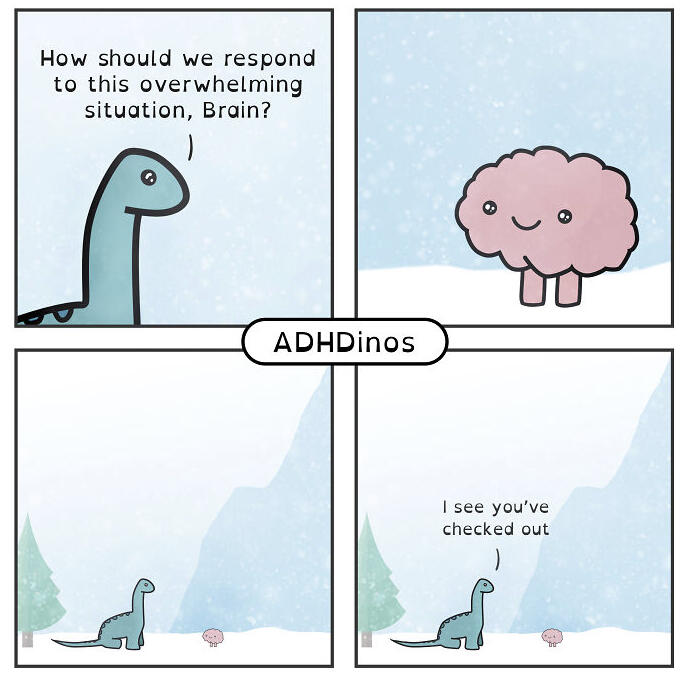
That core still thinks it’s 72,000 BC. It still thinks we’re living in the wild, where food is scarce and threats are everywhere. So it reacts—by secreting chemicals like dopamine, cortisol, and adrenaline—to prod and cajole you into quick, decisive action. Action it assumes is necessary for survival. Action that feels good and right.But it’s blind to the outside world.The only way the Reptilian Brain knows if an action is survival-related is if, in the past, it’s given you a big, satisfying reward. So when it senses the opportunity to repeat the action (what's referred to as a “cue”), it makes the action feel super right, then motivates you to act quickly before it vanishes.
As discussed previously, that system has worked amazingly well for our species. It led to survival benefits. And so, through countless generations of natural selection, what Feels Right had become oriented towards what Is Right.Of course today, in this age of ubiquitous vices—of artificial shortcuts to reward—our survival instinct gets hijacked. The assumption that “reward = good = survival benefits”—as proven and reinforced through thousands of years of survival—no longer holds true.
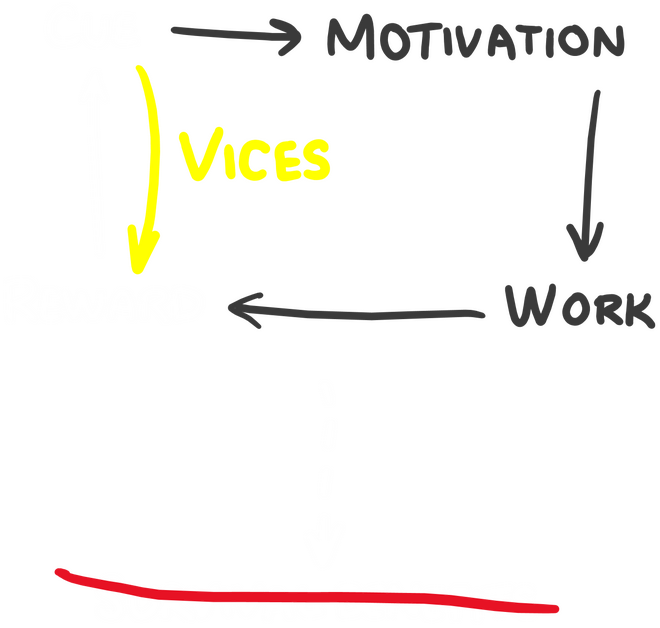
But there’s no way to "explain" that to our primitive brains, just like you can't "explain" artificial lights to a moth. So it keeps pushing us towards vices. Over and over. Feeling right the entire time.
Let's make this more concrete with an example. I want you to imagine yourself spotting a big bowl of gummy bears at a party.

Because you’ve had rewarding experiences with them before, your primitive brain immediately lights up:
“Hey! It’s summer! Berries are in! Go, go, go! Eat as many as you can before they’re gone!”
So you saunter over on autopilot and start picking at the gummies, stopping only when it no longer feels socially acceptable (i.e. the Feels Right drive has ended).This isn’t a design flaw. It’s an evolved survival instinct. Your brain is hardwired to push you to eat more than your immediate needs, so that any excess energy can be stored as fat. This process allowed us to survive long, cold, berryless winters: the eventual "survival benefit" of the action (the reward being the pleasing taste).But your subconscious doesn’t know we're a quarter through the 21st century. Its software hasn’t updated for a world of ultra-processed foods and high-fructose corn syrup.There’s no built-in “stop” instinct. No voice saying, “Okay, enough. You don’t want type 2 diabetes, do you?”The same goes for social media, porn, TV, and video games. Your primitive brain doesn’t know they’re vicarious or fake. It doesn’t understand screens or algorithms.All it knows is that the shiny rectangle thing delivers bursts of survival-affirming reward.So when you see it, your brain compels you to pick it up. It feels right and it feels good. Which only reinforces the mistaken belief that it’s essential for survival.
“OMG! Look! We're partying with hot, high-status people?!We did it! We connected with the popular group of the tribe! We’re safe! And all we had to do was hold this thing and flick our thumb a few times?!Amazing. Do it again. And again. And again. WTF—why are you telling yourself to stop?!”

Like I said. The Reptilian Brain. Dummy Extraordinaire.
The Conscious Override
Your subconscious drives a huge portion of your behavior. It acts fast and without your permission. And when a reward isn’t available, it makes you crave one, leaving you miserable until you satisfy it.
But you also have a conscious mind. You have free will. You have the ability to direct your actions and make value-driven choices. You can use self-control to override irrational impulses. And willpower to ride out discomfort.But there's a catch.Your conscious mind—the part that plans, weighs pros and cons, and makes reasoned decisions—it's still wired to the Reptilian Brain.And the Reptilian Brain? It doesn't just make you feel things—it manipulates you.The deeper, emotional parts of your brain have neural tentacles that reach into your rational brain. They influence how you think, feel, remember, and justify. Not unlike a parasite, your subconscious tricks you into thinking you’re calling the shots—when really it’s pulling the strings from below.That’s how you end up sauntering back to your most self-destructive vices, all casual and nonchalant… as if they haven’t been ruining your life… as if you didn't, like 2 minutes earlier, make a desperate plea to avoid them like the plague.
“Lemme, check TikTok real quick—get it out of my system. It’ll help me focus.”
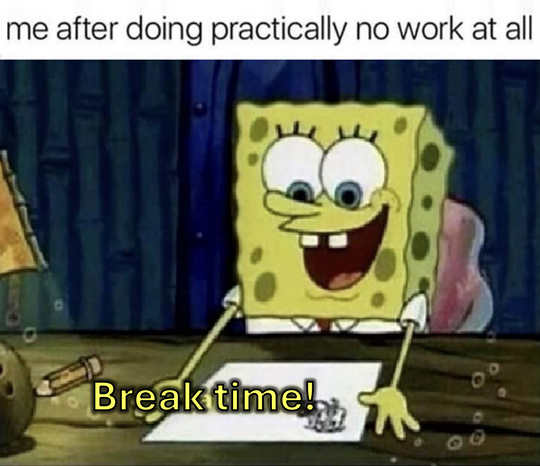
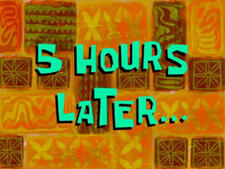

“Again? I doomscrolled... again?! I'm such an idiot… I knew this would happen! What the heck was I thinking?!”
Well, you weren’t thinking. Not clearly, anyway.Your thinking was biased. Twisted by emotional signals. Something deep in your brain convinced you it was a great idea—then used your rational mind to seal the deal with a story that felt true and rational.
Hot Cognition
You—the real you who observes, reflects, and sets long-term goals—aren’t broken. You’re being manipulated by an older, more primitive part of your brain, one still running outdated programming. That part of your brain believes, wrongly of course, that vices are essential. That they’re the best way to gain survival benefits while also conserving energy.This leads to a "Feels Right" trifecta of phenomena that drive impulsive action:
Subconscious compulsions that get you to act swiftly.
Conscious/subconscious cravings that create urgency and discomfort.
Conscious rationalizations that neatly justify the indulgence.

Together, they push you into action before you’re ever given the chance to consider otherwise. There's no hesitation. No internal debate. No angel and devil on the shoulders, you weighing the options.There's just action. That feels right. That feels logical. That feels effing good.Psychologists call this Hot Cognition: a state where your thoughts, decisions, and perceptions are heavily shaped by emotion. It’s what pulls you toward instant gratification, bypasses slower rational thinking, and fabricates justifications that feel logically sound.So when you reach for your vice, it doesn’t just feel right—it also feels reasonable. As if it’s the smart thing to do.And that’s why you keep going back. That's why you can't "just stop".
Coping mechanisms
It doesn't end there. Because life has a knack for throwing curveballs at you.Your boss sends a scathing email questioning your commitment.Your crush leaves you on 'read' for the second day in a row.Your sister makes that passive-aggressive comment about your weight at dinner.In these moments—or what I call Big Triggers—your brain doesn't calmly think, "I should process these emotions in a healthy way." No—it screams for immediate relief.It screams for vices.
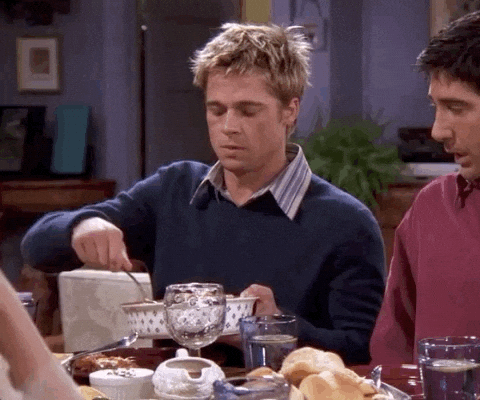
Understand: you began your bad habits for a good reason. They started long ago, when you discovered that your vices could provide an escape from everything that troubled you: insecurities, stresses, worries, anxieties... trauma, abuse, neglect... or else just the crushing weight of parental or societal expectations.Or maybe it didn't start that way at all.Maybe, like me, you started playing Mario because playing Mario was fun. But it didn't take long before your subconscious began linking 'fun' with 'escape' and 'relief'.In short, you developed a coping mechanism. And that's 100% understandable considering you were just a kid, trying to make it through the day.
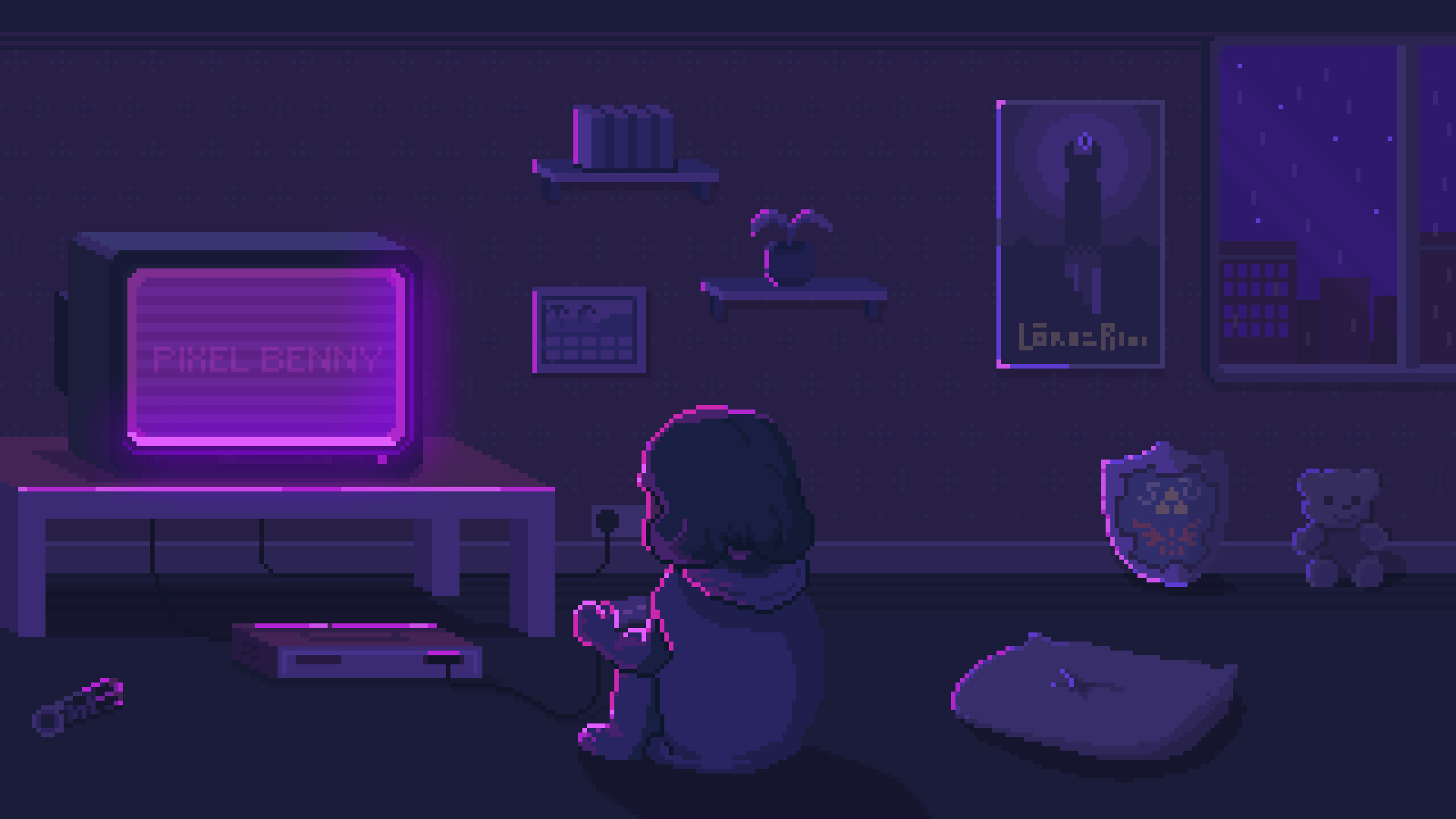
Problem is, you're still using vices as a coping mechanism. As a way to escape and relieve and distract when you get triggered.So let’s say you do come to see vices for what they are: empty hits of gratification tied to the very symptoms that have you coasting and underachieving. Let’s say that insight becomes strong enough for you to start resisting them. Great. That’s how you begin to heal.But it just won’t last.Because sooner or later—and it’s always sooner—life throws a Big Trigger at you...You get the stressful email.You feel the sting of rejection.You glance at the stack of bills.Something happens that spikes your stress and leaves you feeling vulnerable and threatened.And when it does, your brain lights up with Hot Cognition. It Feels Right to escape. It also feels urgent and justified and smart. So you grab your phone, TV remote, or pile carbs on a plate.
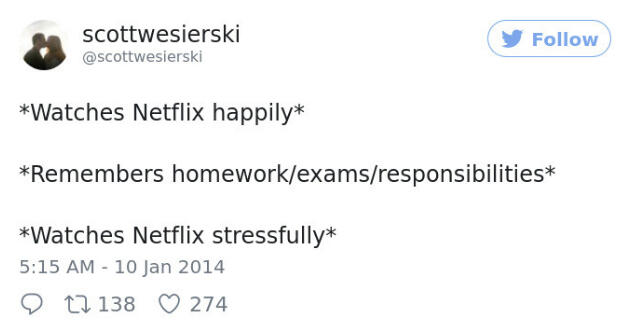
You cope to deal with the threat.You indulge... to survive.
At some point, though—maybe the show’s season finishes, maybe your eyes start to dry out—you’ll surface to the present moment. And that’s when reality hits.
“What the hell am I doing? I’ve screwed myself over. Again.”
You throw the phone down. You stuff the remote between the couch cushions.With the deadline looming closer, cortisol floods your brain. You feel stress. Anxiety. Panic. Doom.Your brain kicks off a barrage of self-criticism:
“I’m such an idiot. Why do I always do this? What is wrong with me?”
It's uncomfortable. It’s overwhelming. It physically hurts.So what happens next?You get some sense knocked into you and you get to work, right? You do the damn work... the one thing that'll actually relieve the stress?Nope. You get hit with intense Hot Cognition (compulsion + craving + rationalization) to do something—anything—to escape the discomfort.And wouldn’t you know it… the very thing that can deliver just the right kind of relief... yeah, it’s still sitting right there beside you.A moth to a fucking flame.
This behavior doesn't mean you're flawed or a bad person. On the contrary—this is your survival instinct kicking in when it senses a threat.To your brain, stress and anxiety = danger. And danger must be eliminated immediately. Sitting down and doing the work? That takes time. Effort. Energy.Your brain is programmed for efficiency. It's made to jump at the fastest and most reliable path to safety. And, for you, that path leads to vices.It’s messed up, right?The cause of the bad feelings—the stress, the anxiety, the panic… what's even behind much of the shame, depression, and regret that weaves in and out of your life—is the same thing that's incredibly effective at instantly relieving all those bad feelings.It becomes a cycle of distraction, pain, relief. Distraction, pain, relief. You become trapped in a vicious feedback loop, which rapidly transfixes you into a zombie-like state of auto-compulsions.
I call it the Doomscroll Feedback Loop.
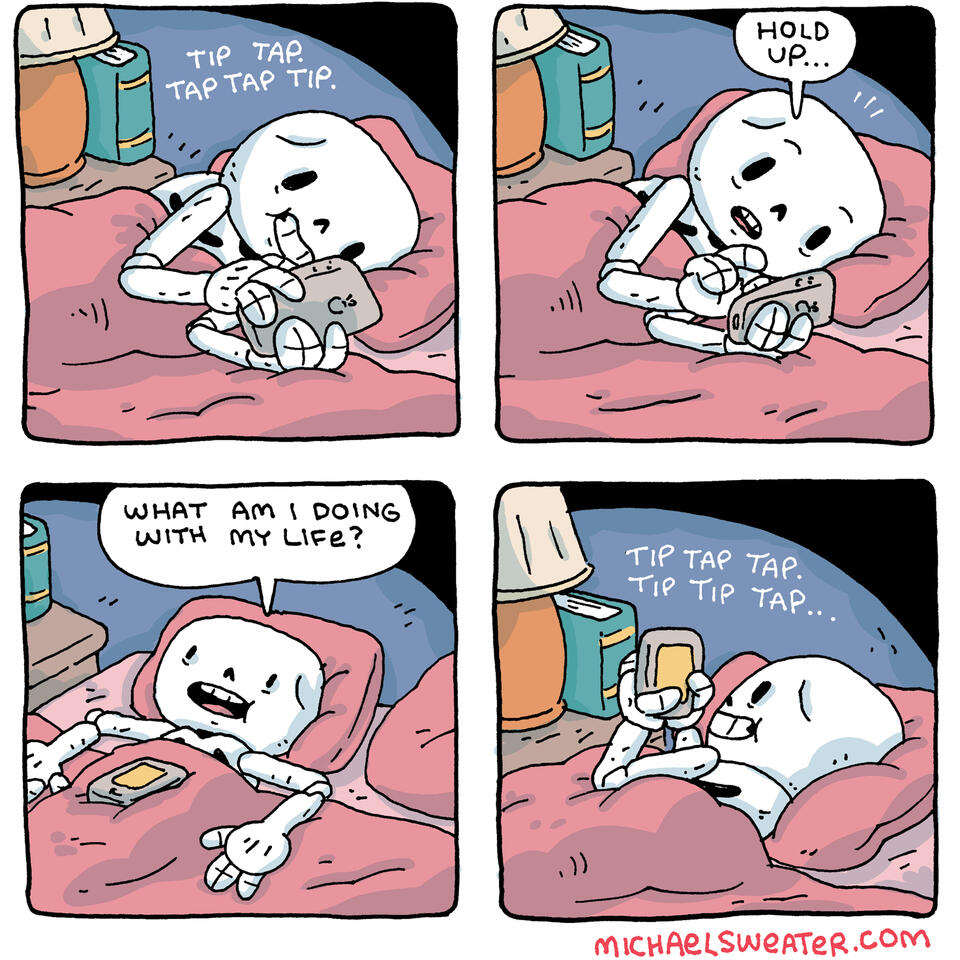
As with all addictions, the drug both causes and cures the disease. The poison is also the antidote.
The takeaway is this:You, the real you, are not flawed or defective (I've said that, haven't I?). You’re just operating on ancient software that’s been hijacked by modern vices. Just like a moth circling around an artificial light, you're always just trying your best.The key then isn’t to beat yourself up for slipping when you do something that feels entirely right. The key is to understand the mechanism behind the slipup. It’s to see how your primitive brain fires up the craving, the compulsion, and the rationalization into a seamless autopilot routine.From there, you can put in play a process to reprogram that routine. To realign what Feels Right with what Is Right.And that’s exactly what the Habit Reframe Method is about.Let's get to it.
Part Two - The Solution
The Habit Reframe Method
Virtue consists, not in abstaining from vice, but in not desiring it.
— GEORGE BERNARD SHAW
The goal of the Habit Reframe Method is simple and singular: to realign what Feels Right in your life with what Is Right.In other words, I don't just want you to be productive... I want you to want to be productive. To want to take healthy action.I want you to feel like doing your assignment. To feel like grooming yourself and dressing well. To feel like exercising and cooking decent meals. All of it grounded in self-love and self-respect. No force or coercion required—just Hot Cognition taking you in the right direction.
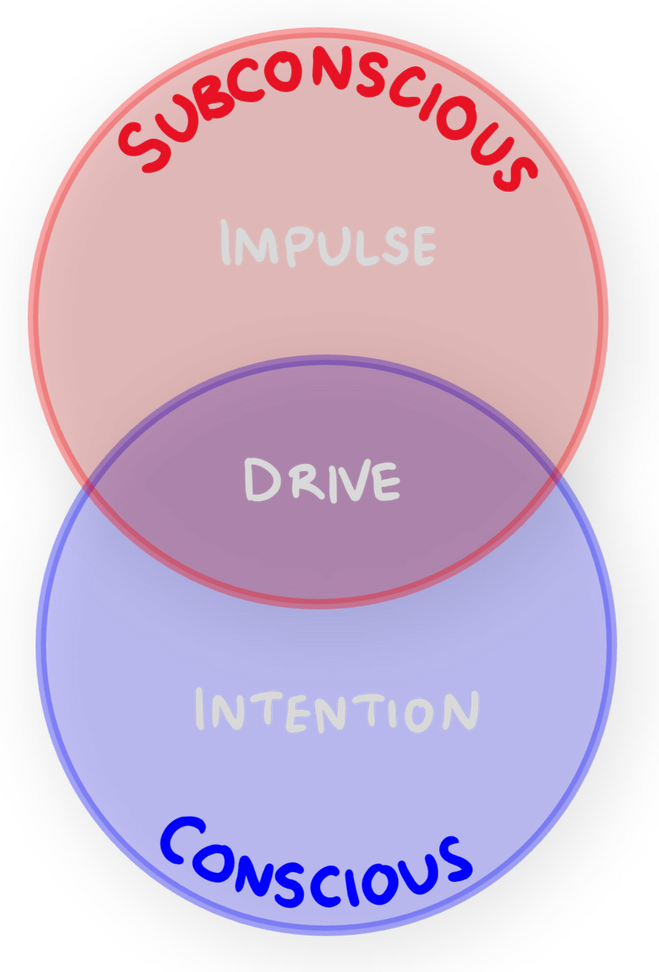
That shift happens naturally as your VIDS symptoms begin to fade. As your motivation and well-being rise back to a solid baseline from a lack of vice exposure. As they continue to rise with motivation-nurturing actions.That shift happens as your survival-obsessed brain gradually accepts that it needs to return to the old-fashioned way of surviving and thriving. That your Hot Cognition needs to be directed, not toward vices, but toward healthful habits and meaningful action. Toward your true North Star.And when it comes to vices? The goal is to find yourself... just not really feeling like it.

At least, not when you’ve got real, meaningful work to do. Or else when it’s time to be active, to socialize, or to unwind with something calm and low-stimulation.But sometimes, you do feel like it. And that’s perfectly okay too. So you'll indulge in an engaging, enjoyable vice when it’s legitimately aligned with what Is Right.
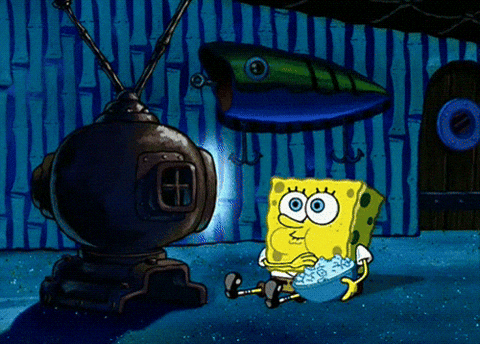
Then, when the time is right... you'll just stop. You'll move on—simply because continuing starts to feel wrong.It's like you're abstaining or else moderating... all sort of by accident.And that, dear reader, is the promised land. That’s you living your best life—where what feels right happens to also be right.It's a life with you constantly chipping away at your obligations and your aspirations—not by brute force, but with alignment toward your true North Star. It's a life free of endless sacrifice and deprivation. Free of the exhausting, never-ending battles of self-control and willpower. Free of forcing yourself to take actions that, while they may be right, viscerally feel wrong.That’s the dream destination.Now, onto the tricky matter of getting there.
Leaky Buckets
I started the 20-Minute Motivation Method by talking about the importance of clarity—about setting goals, mapping out your dream life, spelling out your deeper "whys".
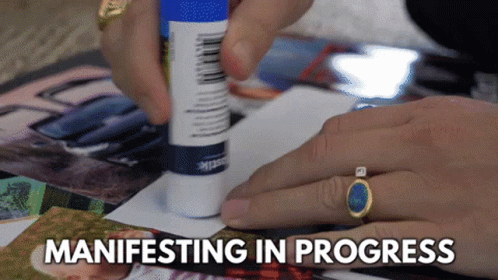
I did this to set up a reveal, showing that such tricks can be a shallow fix. That it only really provides inspiration, which isn’t the same thing as motivation. And without motivation—without having the subconscious green light to expend energy on work—you’ll never end up doing anything… no matter how “clear” you are about your goals or how bad you want them.Does that mean thinking deeply and gaining clarity is useless? Or that translating your goals and ambitions into a plan and a daily process is a big waste? No, actually. In fact, as you’ll see, doing such foundational work is a key piece of the method.It just means they aren’t the solution—they're just part of it. And the same goes for every other aspect of this method.I used to get frustrated by this. I clung to the belief that I would find the one magic bullet: the tactic, tool, program, or whatever that would finally catalyze my transformation and keep it going forever.But that’s a fool’s errand.Because a solution made of one singular intervention just doesn't exist. And it never will. The jam we're all in is too complex, too persistent, and too deeply rooted for it to be solved with some 14-days-to-a-better-you™ linear program.Turns out, fixing our core problem can only happen by stacking the solutions.
Imagine you're in a house with a leaky roof, but all you have to catch the water is a pile of wooden, crack-riddled buckets. So you position the first one to catch the initial stream—but that leaks. You place a second bucket underneath, but that leaks too. So you add a third, and so on.

Solving the water leak problem this way is impossible—unless (and forgive the physics of this) you set yourself up with a closed system: the first bucket catching the leaks from the last.
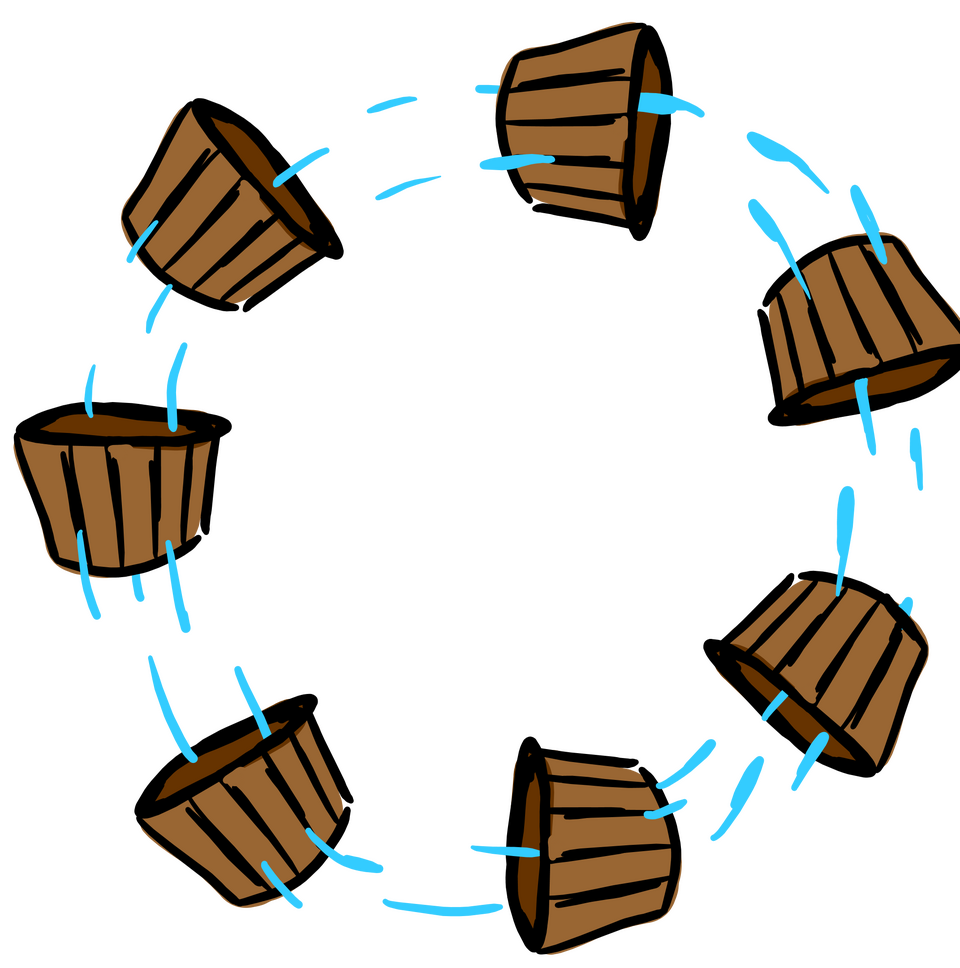
In that case, the intervention, though imperfect in its parts, becomes perfect as a whole.That’s the core idea behind the Habit Reframe Method.It’s built around four interconnected “buckets.” Each one on its own is leaky. Incomplete.
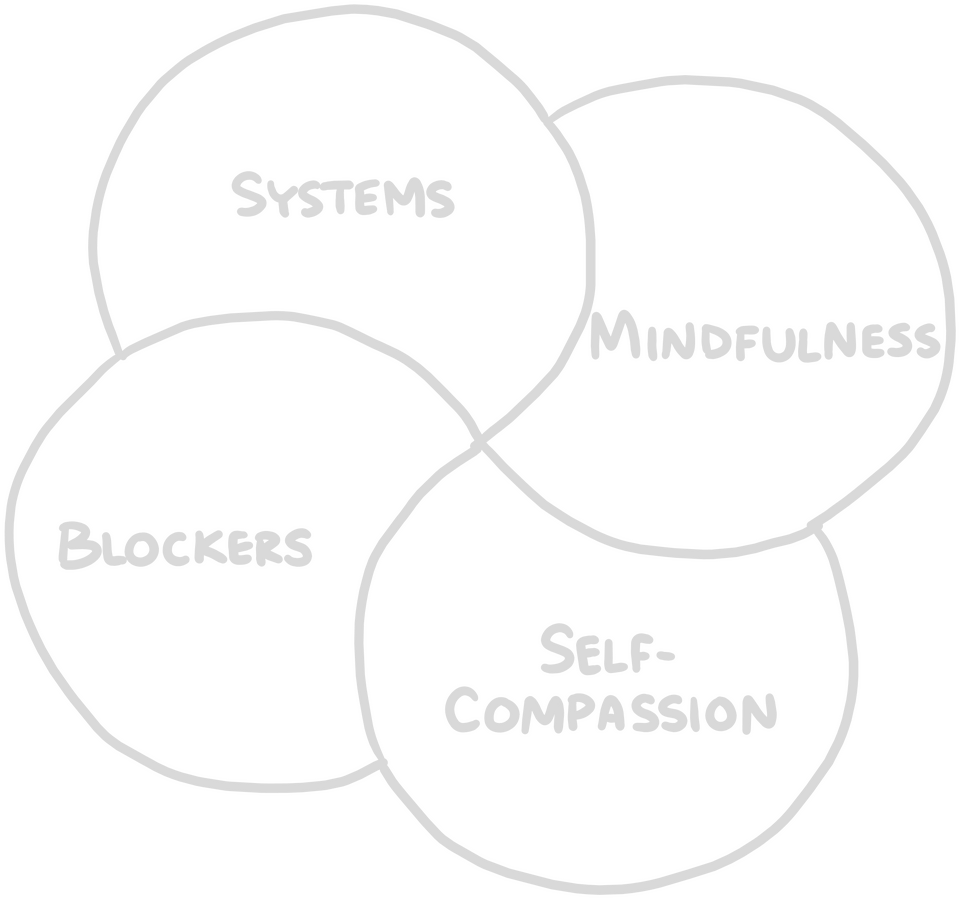
But together, they form a whole where the weaknesses of one are compensated for by the strengths of the next.

That's the method, and we'll go through each one in detail, ending each with its drawbacks and how the next one works to compensate.Let's start with the first: Systems.
First bucket: Systems
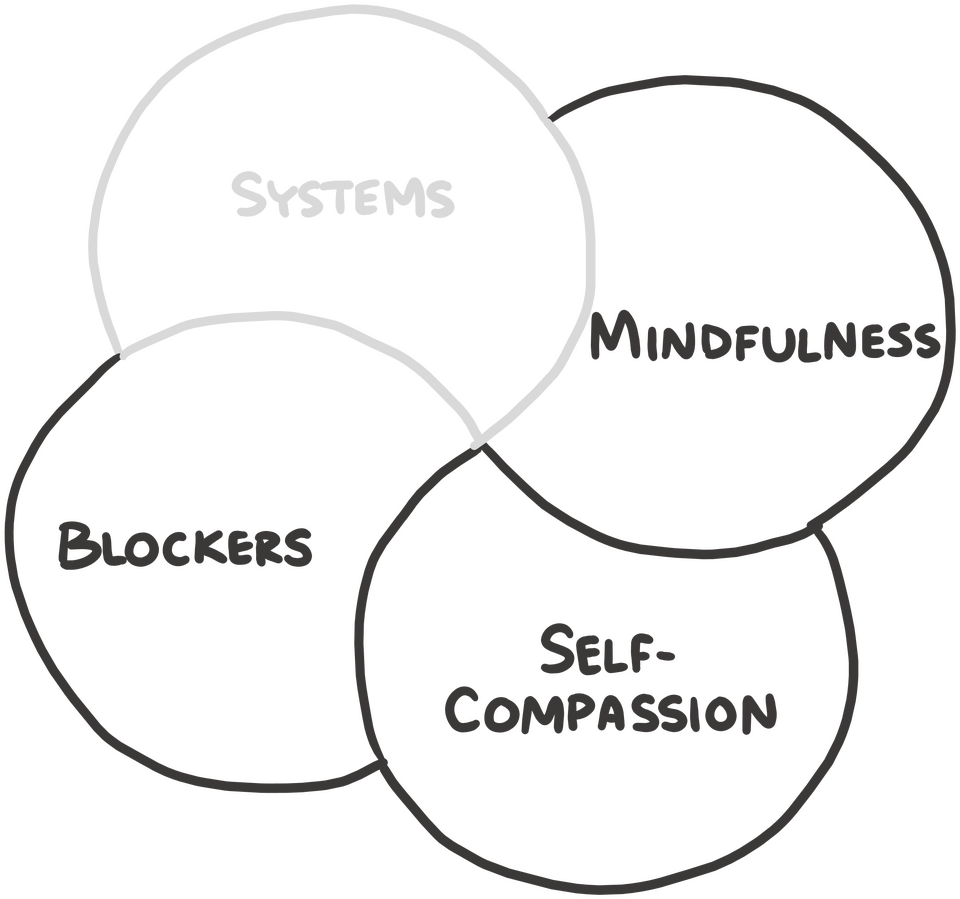
You do not rise to the level of your goals. You fall to the level of your systems.
— JAMES CLEAR
How you do anything is how you do everything.
— MARTHA BECK
I was good for a while, hitting the gym regularly, working on my goals, consuming my vices more or less in moderation—then the pandemic hit, aaaand everything went to shit.It was a paradox.I had more free time than I’d ever had before.More time to go for runs, do my yoga, knock out bodyweight exercises. More time to get ahead on work or chip away at side projects. More time for leisure—not mindless internet crap, but actual leisure: interesting books, insightful online courses, fun hobbies.I had more time, more time, more time…
The pandemic lockdowns impacted our lives in countless ways. Sure, we were subject to severe spatial constraints, but our temporal freedom was unprecedented.No commutes. No appointments. No social obligations. That meant more time, more opportunities—and more excuses—to procrastinate.And yet, I’d had a decent workout habit going before lockdowns began. Plus my job already let me work from home when I wanted. So what had changed, really?Why did more time, freedom, flexibility, and opportunity—the stuff I’d assume was needed to start and sustain a habit—lead to a complete collapse of my habits?The problem, I realized, was the excess of decisions I now had to make.Say I woke up with the intention to go for a run. Here’s how that played out:
8 am: “Nah, too early and cold."12 pm: “After lunch."1 pm: “Ugh, too bloaty. I’ll go before dinner.”4 pm: “Lemme just finish this one thing.”6 pm: “Shit, it’s already six! I forgot. I’ve got to make dinner… I’ll just go tomorrow.”
Rinse and repeat, every day.So... several months in, I decided to look back, asking myself: What exactly had changed? What had made me consistent before?The answer was simple: Every weekday, during my commute home, I walked past the gym. That meant I had exactly one moment to decide whether to exercise. And if it was a gym day, three times out of four, I’d go.Without realizing it, I’d built a system.I had an external constraint that nudged me toward consistency.
Defining a System
In most self-help contexts, a system is a structure, routine, or other intervention designed to make starting (and sticking with) habits easier.At its core, a good system:
Minimizes decision-making
Provides the needed cues for action and habits
Surfaces important information at the right time
Helps you stay organized and priority-focused towards a goal
That could mean a workout schedule and regimen, a weekly meal-prep plan, a pre-work session ritual, or even something as simple as leaving your guitar on the couch so you’ll pick it up more often.In my case, the circumstances of my daily commute had naturally checked the first three boxes. So, after several months of inaction, I decided to simulate that.I found an anti-snooze alarm app that required me to take a photo to shut it off. I then set a 5:15 pm alarm for Mondays, Wednesdays, and Fridays. When it rang, I was forced to walk down to the basement and snap a pic of my kettlebells.This didn’t mean I had to work out. It was that I had to show up. Adamant about simulating my previous once-a-day decision-making window, I also forbid myself from working out at any other time.And you know what? It actually worked.It worked because I stopped relying on vague desires and good intentions.
As a writer who’s always wishing there were more hours in the day, reframing the question from “Should I go exercise?” to “Now that I have to go, how do I get there on time?” has been a game changer.
I use the Alarmy app, if you’re curious. I’ve pinned a QR code on a bulletin board at the gym. When my workout alarm rings, I allow myself a single 20-minute snooze—just enough time to get to the gym and scan the code.
I also keep a separate code glued to a magnet on my fridge, so I can “force” myself to get up for breaks and stretch.
Oh—and I paid for the premium version of Alarmy, which fines me if I try to bypass an alarm by turning off my phone or deleting the app. In the words of Wade Watts… This is some sadistic software.
Your North Star Prompt
Systems are how you go from being a leaf in the wind—tossed around by impulses, interruptions, and shiny ideas—to becoming a sturdy oak, rooted in personal values and a long-term vision.They’re often what separates people who make consistent progress from those who start strong enough, but end up abandoning everything by week three.And that's how most productivity programs sell themselves:
If you just build the right system, everything else will fall into place.
Such is the gospel of Notion dashboards, habit trackers, bullet journals, and time-blocking calendars.But in practice? That only works when you already have a baseline level of energy and motivation. And for someone dealing with chronic Vice-Induced Depressive Syndrome (VIDS), that baseline just isn’t there.So in taking on the Habit Reframe Method, you’ll need a different approach when it comes to building systems. Because for us procrastinators—for those of us not already out in orbit (to reference a past metaphor)—the conventional systems mindset leaves out a key truth:You won’t always have enough motivation to run your system.You can have the best workout program, the prettiest planner, the most satisfying task board…And still spend the entire day glued to your phone, feeling like trash.

So, we’re starting small.The goal right now won't be to teleport you to our destination. It’s to stop you from falling backwards while slowly teaching you how to walk forward again.So for now, you'll start with the bare minimum of a system. Just one thing: a quick morning routine called the North Star Prompt. It takes about 2 to 5 minutes. It’s low effort, low friction, but the payoff is solid.
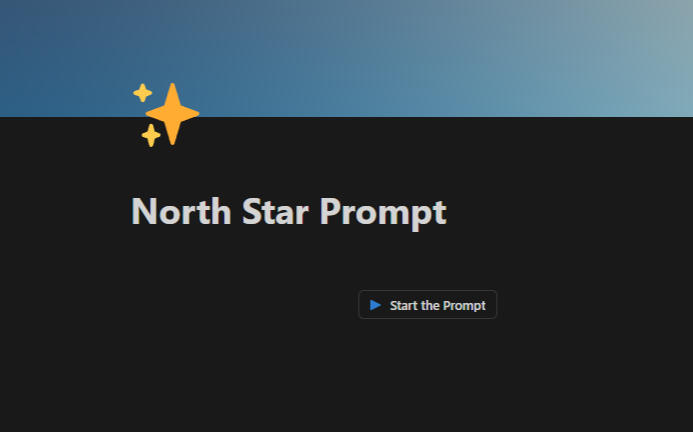
Your North Star Prompt
The North Star Prompt consists of a series of one-button interactive pages you'll go through in sequence. There are six segments—each designed to help you check in with yourself, remind you of what really needs reminding, and set you up for a productive, priority-focused day.Here’s an overview of each segment, with example screenshots:
Body and Mind Check-in - Part 1
The prompt begins by guiding you to become aware of what’s happening inside—mentally, emotionally, and physically.You won’t be asked to fix anything. The point is simply to notice what might be pulling your attention or shaping your mood before the day even begins.
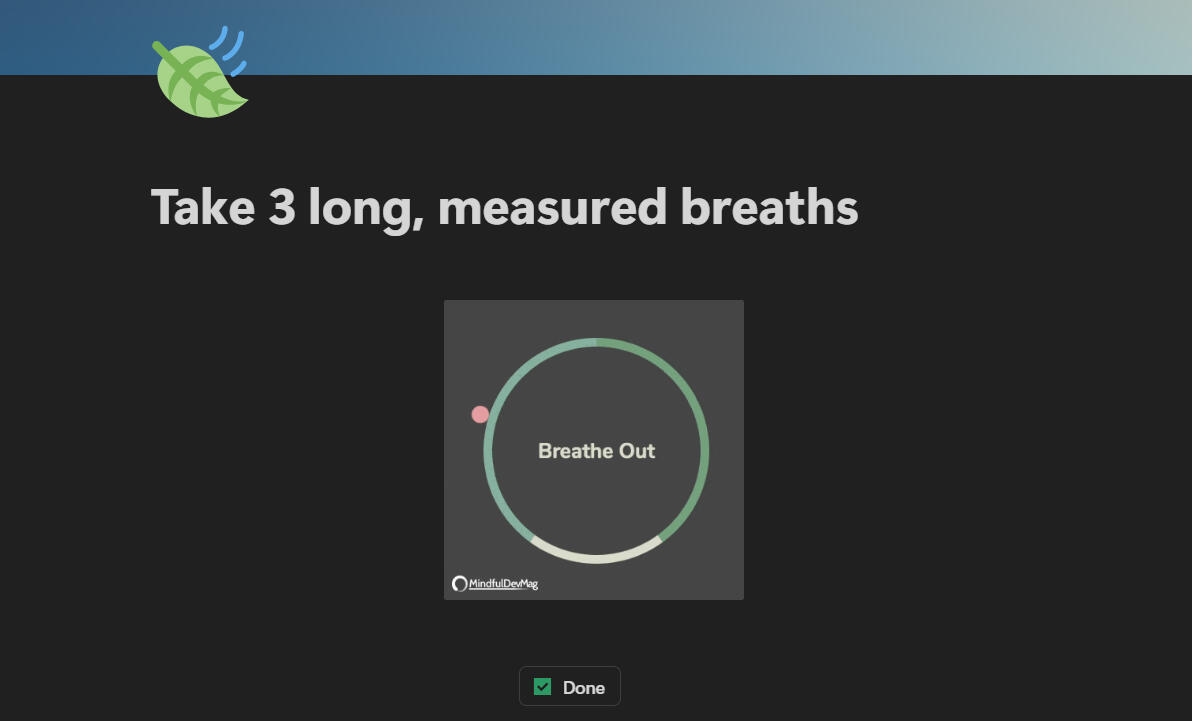
North Star Reminder
This is you, looking up towards what you want to guide you throughout your day. It's a reminder of who you want to be and what you want to achieve; your best and truest self.
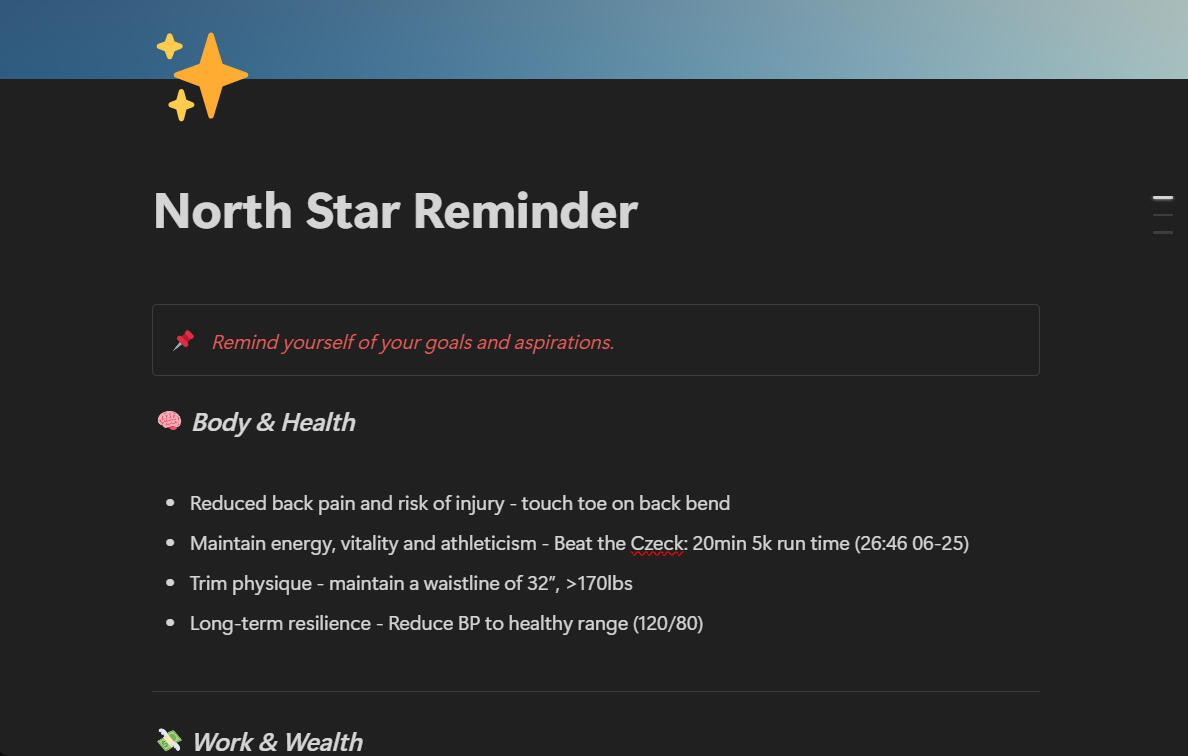
RC&AE Review
These are your personal Rules, Commitments, and Accepted Exceptions—the routines and boundaries that reflect your best self in action. It defines your Is Right path, as directed by your North Star.
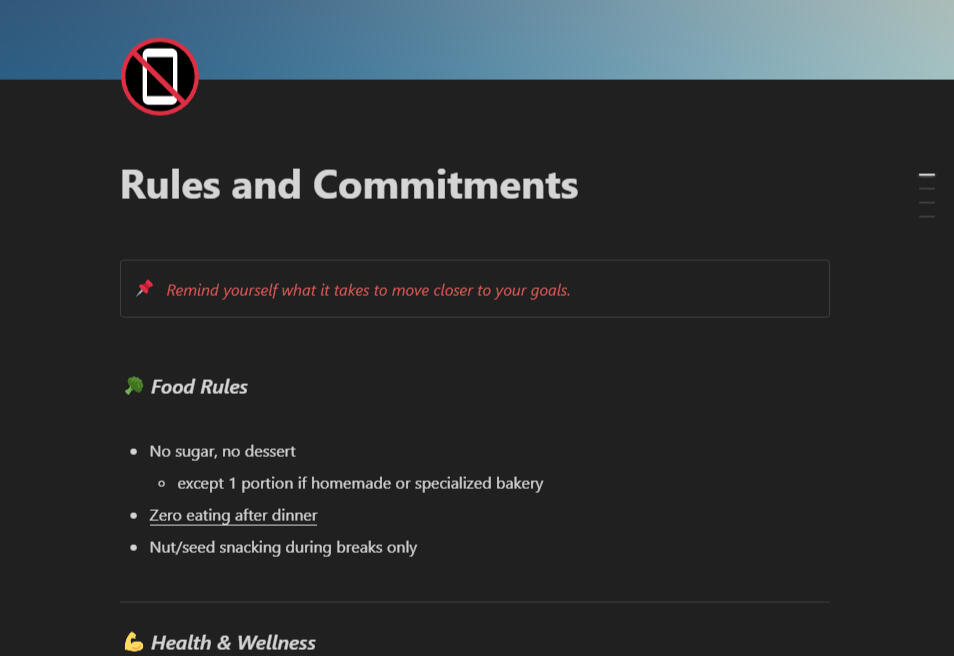
Wisdom Bank
This section is for short, punchy notes and mantras to your future self. It's the stuff you want to repeat to yourself every single day; the ideas you want hammered deep into your psyche, especially the ones that are too easy to forget.
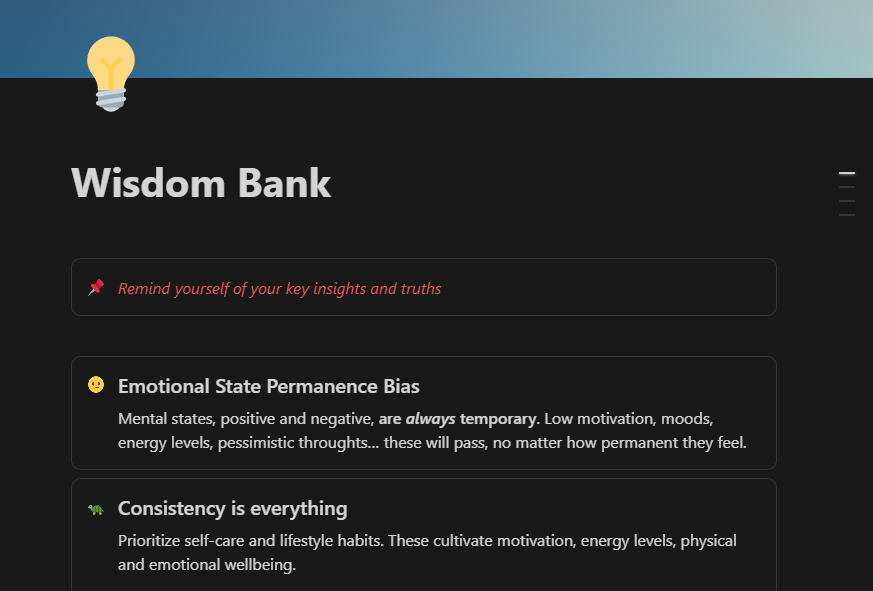
Time + Task Planning
This is your space to sketch out a plan for the day: tasks, priorities, and scheduling.You'll come to customize this part over time. It can be as simple as a three-item to-do list (and that’s how I insist you start)… or as structured as a time-blocked schedule with a priority-based project and task management setup. There’s no single right way to do this—just a system that makes sense to you and your projects.

Body and Mind Check-in - Part 2
The prompt wraps up by reconnecting you to the present moment. You’ll also assess your current motivation level, which is then tracked on a calendar.
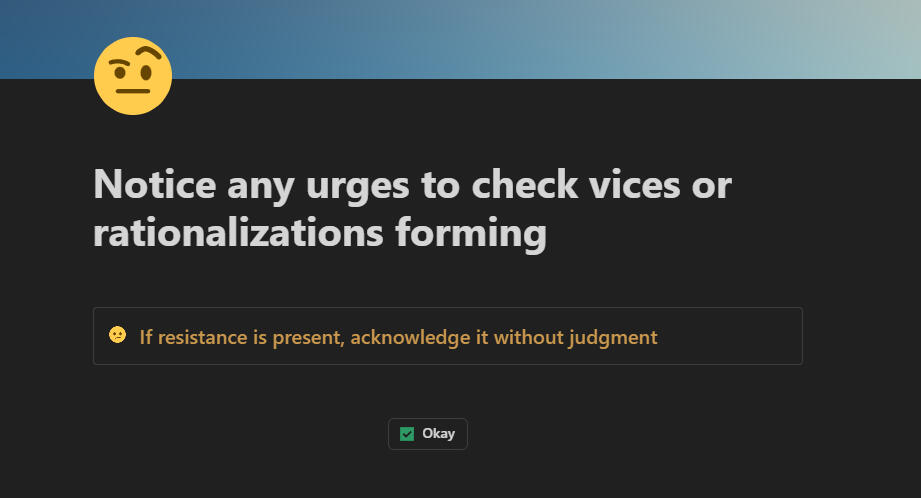
Your Turn: Defining Your RC&AEs
You’ve already started setting up your North Star Prompt with the exercise you completed earlier.Now, we’ll keep it going with this next step: writing out your Rules, Commitments, and Acceptable Exceptions.
Exercise Time 🙄
Open your workbook (the duplicated version stored in your private Notion workspace).
Scroll down and click the "Exercise 2 - Setting your North Star" button.
Limitations of Systems
Systems are indeed great. They’re wonderful and awesome and amazing.They’re the one thing that’ll lead to you achieving your goals and living your dream life. But there’s one minor little detail: You actually have to respect them.Day in, day out, you have to follow the rules and stay within the boundaries you’ve set. And for us procrastinators, that’s infinitely easier said than done. Because we’re going to get hit with a barrage of self-sabotaging thoughts, emotions, and drives.And it's the worst around vices. Temptations, cravings, excuses: our Hot Cognition working overtime to make us forget our rules—and coax us toward reckless indulgences.

But that’s okay. Because as a first line of defense, you’ll have the next bucket in place, Blockers.Blockers are designed to guard against those emotional and visceral experiences that systems alone can’t do much against.
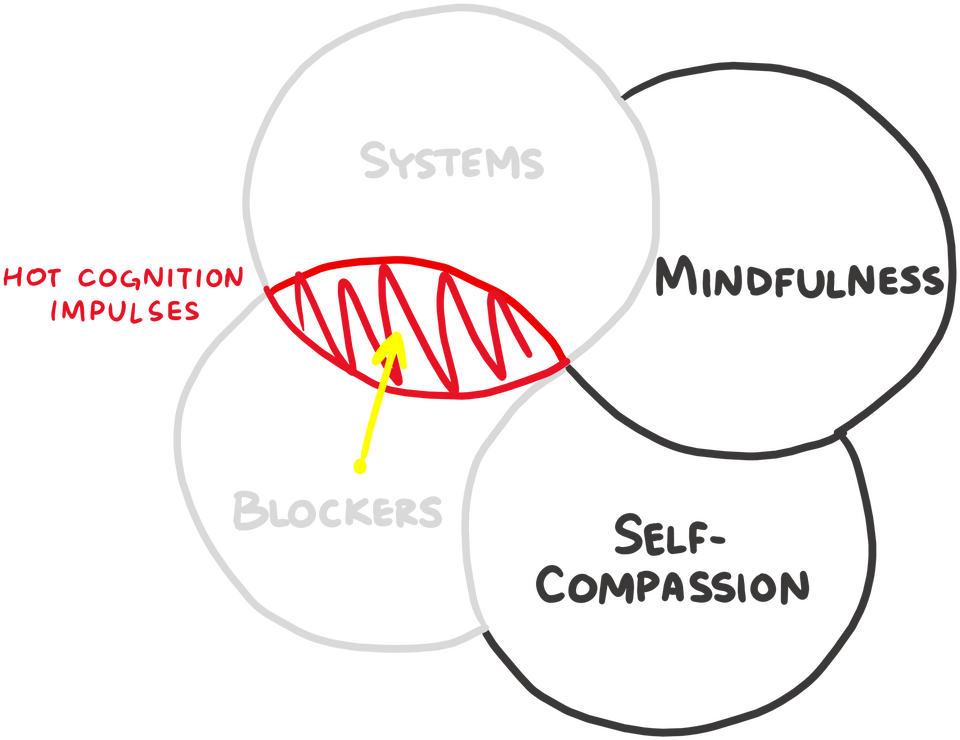
In other words, when your system leaks, blockers catch the drip. We’ll explore that next.
Second Bucket: Blockers
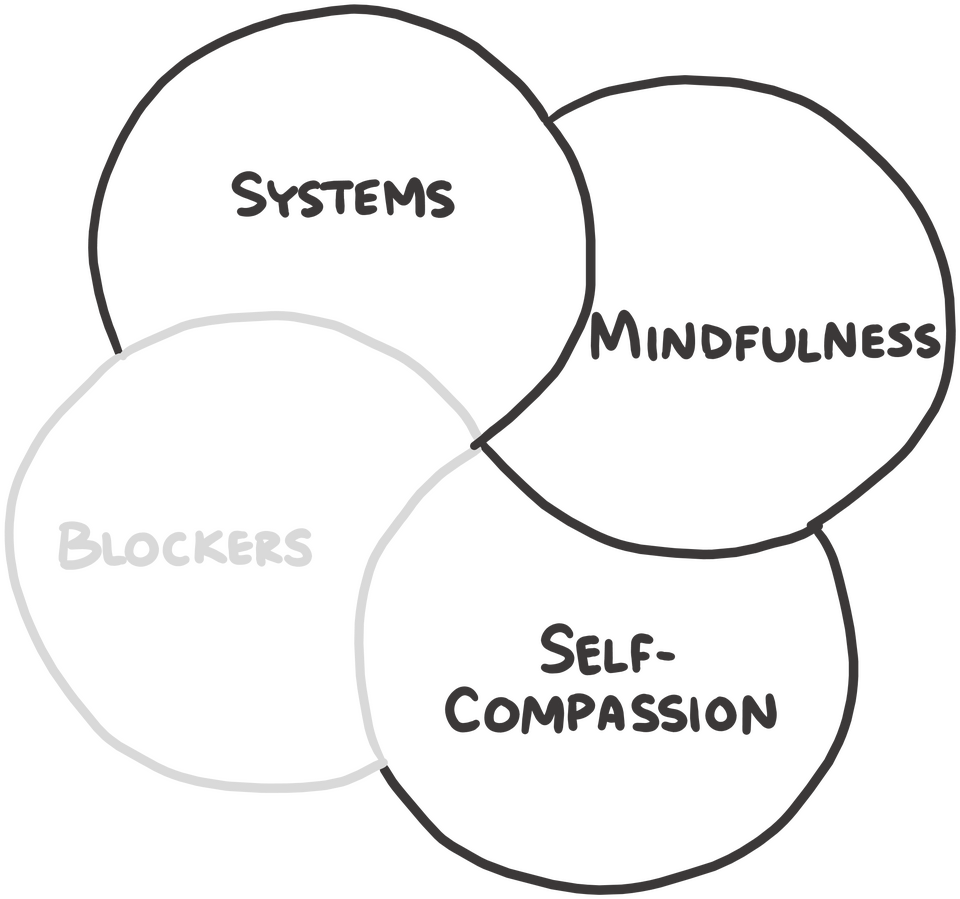
Therefore pass these Sirens by, and stop your men's ears with wax that none of them may hear… Get the men to bind you as you stand upright on a cross-piece half way up the mast… If you beg and pray the men to unloose you, then they must bind you faster.
— HOMER, "THE ODYSSEY"
Each year, the corporate titans behind TikTok, YouTube, Instagram, and Reddit pour billions into their platforms.They hire the world’s top programmers, data engineers, and behavioral scientists. They work relentlessly to attract and retain an army of content creators—the people who actually fill these platforms with content—rewarding those who produce the most addictive, enticing, and sometimes even emotionally manipulative material.All of this expense and effort is aimed at one thing:To get you hooked. To sell more ads. To keep enriching their already-rich shareholders.It’s pretty messed up when you think about it. And I’m sure you do think about it, given that life has become an endless battle between you and megacorp Goliath.
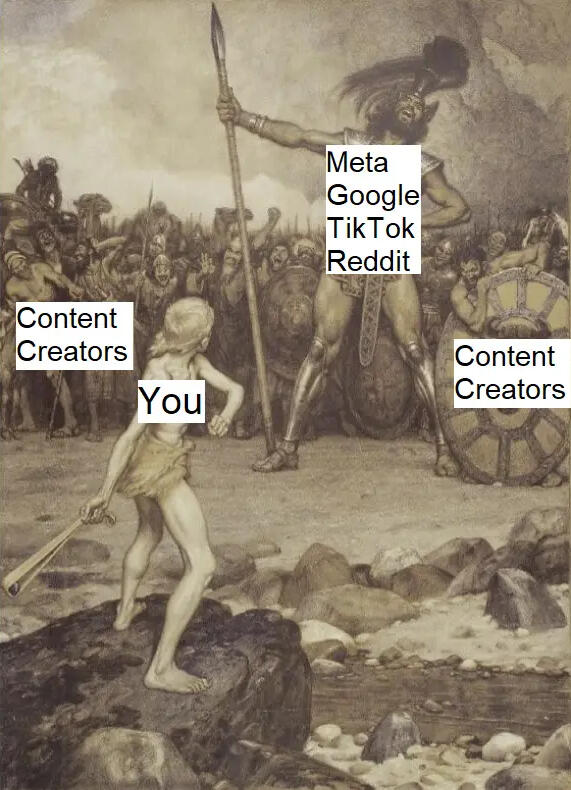
So what can you do about it? How can you win this fight?Well, the bulk of this method is you playing offence (systems being an important piece)... but you can and should also set up a solid defense.You can do the equivalent of tying yourself to the mast while having to sail past today's endless sea of Sirens, the symbol for vices in ancient mythology.

Just like in The Odyssey, this is us pre-committing through physical means, making it harder for our future self to act through “Feels Right” Hot Cognition.This is us setting website blockers and screen-time limits.
The Two Criteria for Effective Blocking
So, I have a looooong history with website blockers. And for the longest time, I thought about them in a strictly binary way: either you set them loose and flexible… or you make them ironclad and unremovable.Most of the time, I saw my compulsions and rationalizations as so irrational and insurmountable that I believed I couldn’t afford even a smidge of flexibility. I simply couldn't trust myself, so my blockers had to be on the ironclad side: no disable buttons, no overrides, no way to uninstall. Total lockdown.But then—inevitably—such a system would cause problems.I’d need YouTube for tutorials. Or Reddit, given how key threads would show up in search results. And blocking Instagram or LinkedIn meant missing out on opportunities to network or collaborate.Sure, with fancier software, I could set up exceptions and allowances… but sooner or later, I’d hit a situation where my initial setup would stop working for me and my goals.So I'd find myself swinging in the opposite direction. I'd decide that, you know, my real problem is the rigidity of my blocking system—and how they were eroding my sense of self-trust.If I tell myself I can't trust myself around vices... it just becomes a self-fulfilling prophecy.I’d then back up my files, reformat my devices to get rid of the blocks, then install a few basic browser extensions. Nothing major. Just soft gates to check my autopilot impulses.Of course… eventually, something Big Trigger would hit. I’d rationalize disabling the blocks, just for a minute...
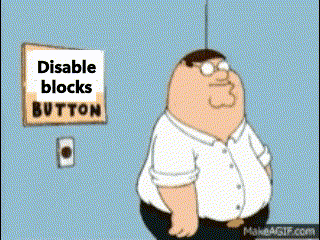
And well, you know the rest.
It never occurred to me that the real solution lies somewhere in the middle of these two extremes. That website blockers need to be flexible enough to account for my legitimate needs for access—whether that’s for productive purposes or for healthy leisure… and rigid enough to hold strong when faced with ill-advised Hot Cognition.In practical terms, your blocking system needs to satisfy two essential criteria:
It needs to be lockable 🔒
Meaning: it can’t be disabled, removed, modified, or circumvented on a whim. If your blocker folds the moment you feel a flicker of temptation, it’s useless. This is the “tie yourself to the mast” part.
It needs to be unlockable with friction 🔓
Because yes—there will be times when you need to make a change. Maybe it’s for work. Maybe it’s research. Maybe it’s just to unwind with something intentional.And that’s fine. But the key is: it can't be instant and effortless. It can't be done in a few clicks or by waiting for a countdown timer to elapse. It needs to require some actual effort. It needs a bit of friction.
Friction Blocks
As I like to say: don’t solve a problem by creating another one.With friction blockers, you can solve the problem of compulsive action—without the problem of stifled access for acceptable use.So this is what you need to see when you try to access a vice:

And this works because, when you’re just starting out with the method—when your VIDS symptoms are at their highest—your motivation will be low, if not at a dead zero.In that phase, your so-called 'laziness' becomes a strategic advantage. The effort to disable your blockers will feel like too much work.
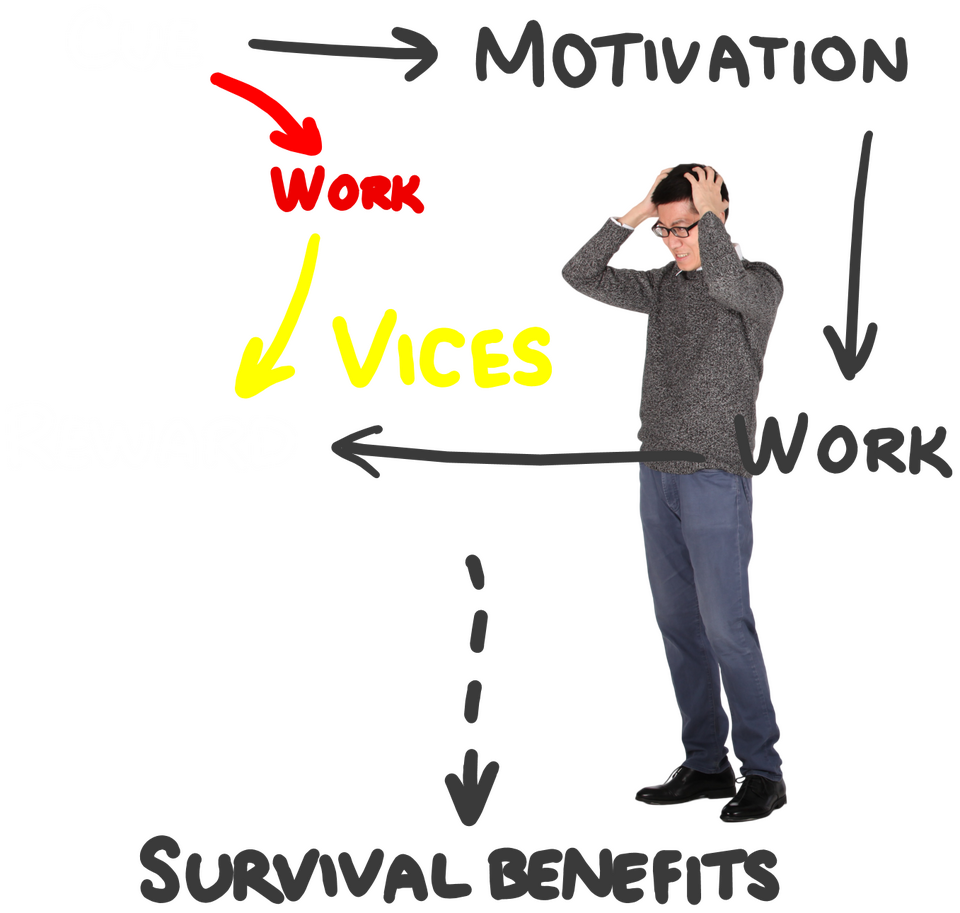
But later, once you’ve made progress, once you do have legitimate reasons to disable a block, you’ll have the motivation to go through the friction. And that'll work out just fine—because you'll set it so the blocker re-locks on its own when the tab closes or after a set time.

What’s key about this system is that it’s the best of both worlds. It's rigid enough to hold strong during moments of Big Triggers—those times when something sinister and urgent is driving you toward your vices. And flexible enough not to stifle you or block your ability to get things done.More importantly, it preserves your self-trust and self-image.You’re not telling yourself you can never be trusted. You’re simply recognizing that you need to guard against a certain part of yourself—that primitive, impulsive core that didn’t evolve in our new era of abundant, instant-access vices. But beyond that, you can trust yourself to do the right thing.Sure, in some moments and with this system, you might still take advantage and end up bingeing.But, and this is key, you also won’t take advantage and binge during all the other moments. Each time you stay true to your intentions—each moment that passes where you could waste time but decide, Nah, too much work... I’d rather stay on the Is Right path anyway—you’re nurturing and building your self-trust.Because the truth is: you can trust yourself.But self-trust isn’t simply a decision. It’s something you earn and grow with repetition... lots and lots of repetition of doing the right thing. You just need the right tools and mindset to make that happen.
Productive Loopholes
Friction blocks are great, but sometimes you need quick, focused access to certain vices.Maybe someone sent you a link to a Reddit thread. Or you need to watch a YouTube video to learn how to patch a hole in drywall. In such cases, having to go through the rigmarole of a friction system can be too inconvenient and cumbersome.In this case, you can employ productive loopholes.With sites like YouTube or Reddit, you can set things up so that one and only one video or post link can be accessed—without the risk of tumbling down an algorithm rabbit hole. I'll show you how in the process below.
Your Turn: Setting up your content blocking system
Time now to set your content blocking system. I'll provide instructions first on setting up your computer, then for mobile devices like your phone, tablet, toaster oven, and whatever else you use to access vices.
Content Blockers 1: Computers
Step 1: Install Effective Software
There are quite a few options out there. But honestly... just go with Cold Turkey.It’s free for our purposes (and reasonably priced if you want advanced features—plus, it’s a one-time purchase, not a subscription, which is rare and awesome). It works well on both Mac and PC. It’s nearly impossible to override or uninstall without a complicated process, and it includes all the customization features you’ll need.The interface is simple and intuitive.
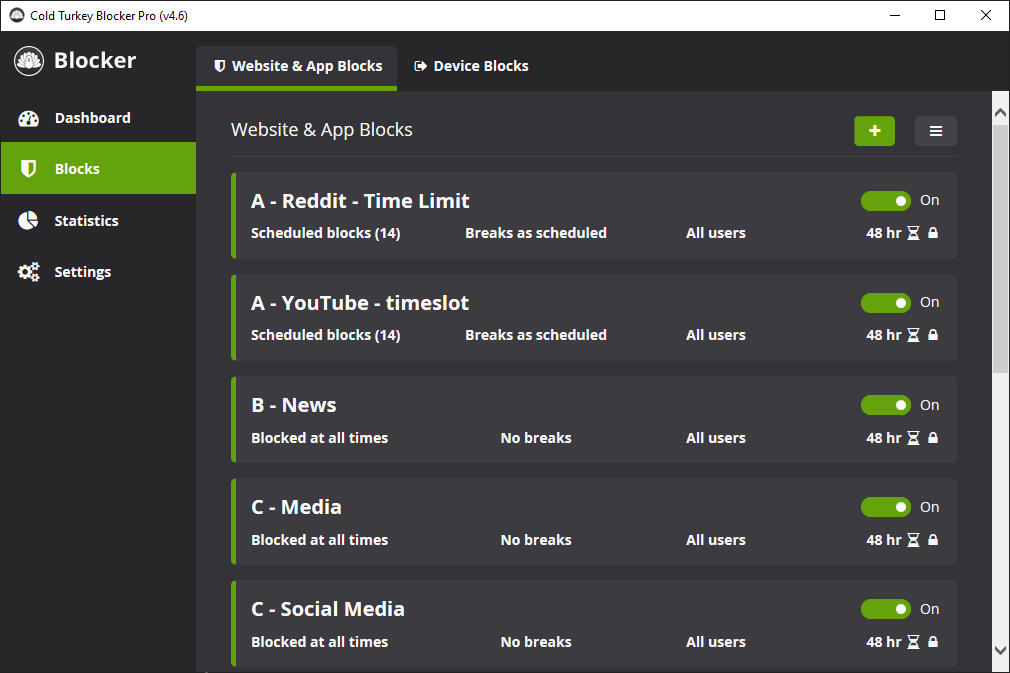
You basically set yourself up with a collection of “blocks,” each of which can be programmed to block a list of domains, subdomains, keywords, or apps.From there, you can customize each block—things like which user on the device the block applies to, or parameters like daily allowances or custom blocked periods. The user guide provides more details if you’re interested. Most of that is only available in the paid version, but we’ll just be using the free features for this method.
Step 2: Set up your blocks
Think of all the problematic sites you tend to visit when procrastinating. Then think about how you can group them.You can group them by category—one block for news, one for social media. Or you can create one block per site, which is what I do for the more problematic ones that I also frequently need access to, like Reddit and YouTube.For each block, add in the applicable websites.
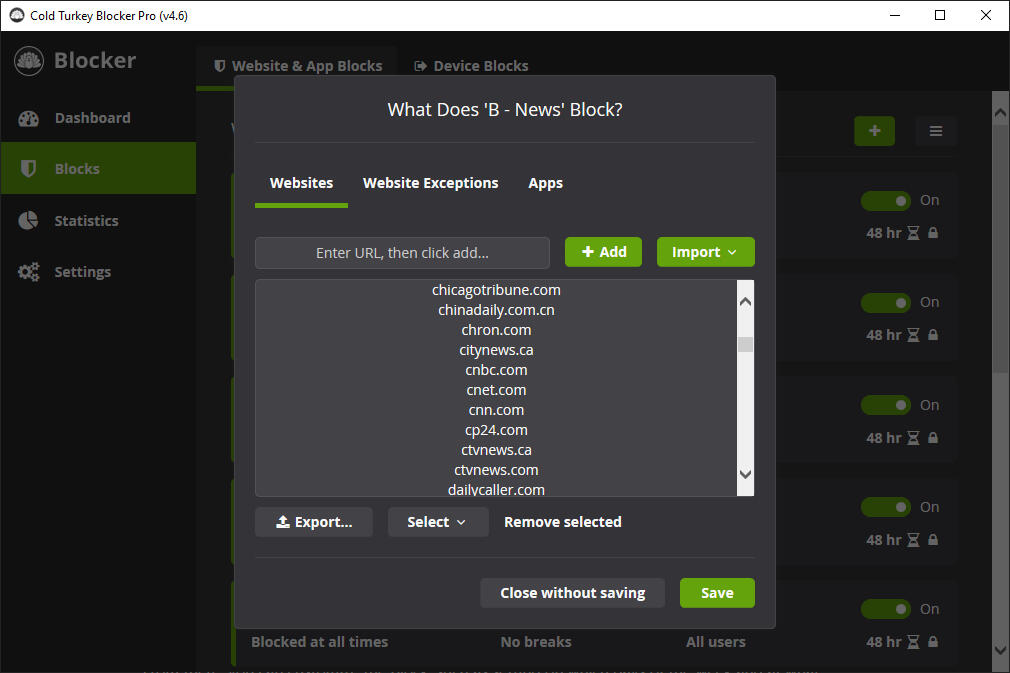
Some notes and tips:
For something like news, you can manually type in the sites you visit. Or click the Import button to pull from pre-made lists. The “All search containing” and “All URLs containing” filters in the import menu work really well for keyword-based blocking.
Try to keep it organized. Cold Turkey lists blocks alphabetically, so you can add a letter prefix (A, B, C, etc.) to sort them the way you want.
You can block specific subdomains (
www.###.site.com) and paths (www.site.com/###) without blocking the entire site. This is useful, for example, to block certain subreddits while leaving others accessible. (My trick is to keep two blocks for Reddit—so even if I unlock the mainreddit.comone, I still won’t have access to all the time-sink subreddits.)To block games and installed applications, you’ll need the paid version. Go to the Apps tab → click “Add window title” → type in the name of the game between asterisks (e.g.
*fortnite*). Not sure what the exact title is? Start the game, then hit Ctrl/Cmd + Escape. It’ll minimize to the taskbar, where you can see the window label—that’s what you type in.Struggling with porn? See this link for a detailed process to block adult content completely, including through searches.
Don’t want to start from scratch? Cold Turkey allows exporting/importing blocks. I’ve provided a downloadable set of blocks I use myself. Download it here, then go to the Blocks tab → burger menu → “Import blocks from another installation.”
Once done, your dashboard should look like this:
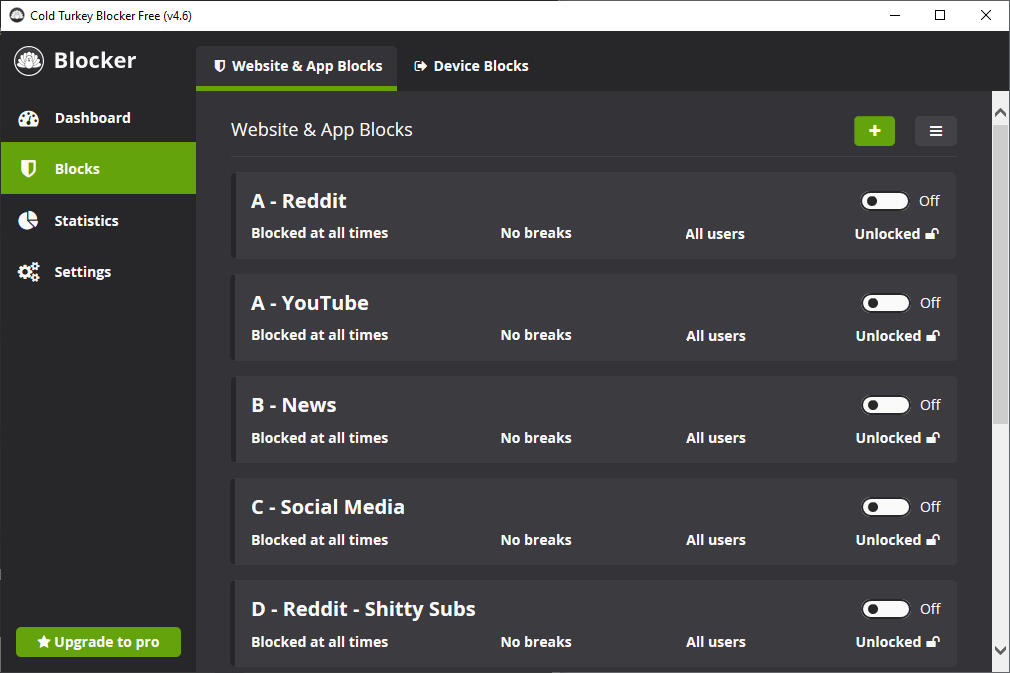
Step 3: Lock each block
In the main Blocks tab, click where it says “Unlocked”. Then select the “Random Text” tab.I suggest using 50 characters of random gibberish—but don’t go below 30. For blocks you know you’ll never/rarely need to modify (e.g. adult sites), go 100+.Note: another advantage of Cold Turkey is if you want to make a block more severe, say you want to add a few sites to a block, you don’t need to unlock it. So don’t worry about setting a high character count for these.Keep everything else on default.

After clicking Save, you’ll need to flip the toggle to activate the lock. Once confirmed, it should turn green.With all your blocks set and locked, your screen should look like this.

And you're all set.
How to access a blocked site
If you need access to a blocked site, open it in your browser and click the green Unblock Tab button.
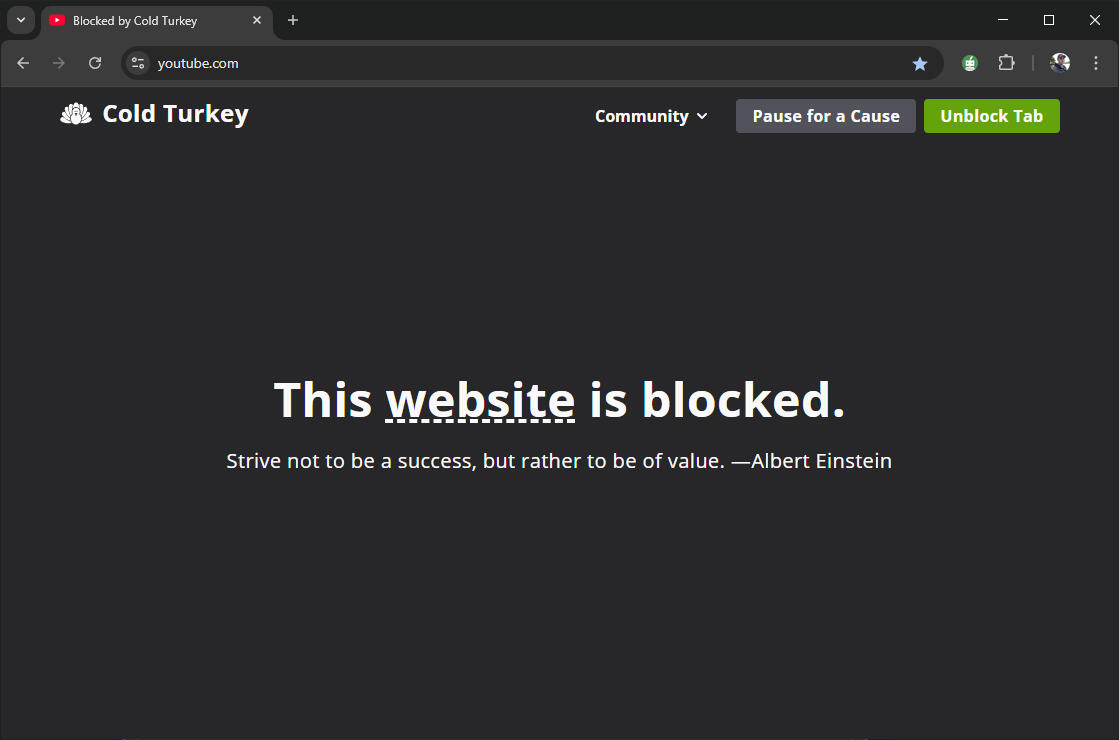
Choose a duration, and punch in the required characters. (That’s the friction part)
Reddit and YouTube Productive Loopholes
If you ever need quick, focused access to a single Reddit or YouTube link, copy the link URL and follow these steps:
YouTube: Go to video.link and paste the URL. It’ll strip out all the suggested video tiles and sidebar.
Reddit: Go to redditlink.carrd.co and paste the URL. It’ll show you just the post and comments—no feed, no home page.
I suggest adding both to your bookmarks bar for quick access. These sites also work on mobile, by the way.
Content Blockers 2: Mobile
iOS (iPhone + iPad)
Use the built-in Screen Time feature. It’s free, doesn’t require any sketchy, battery-draining VPNs, and is hard to bypass once locked.
🚫 1. block specific websites (and adult content):
Go to Settings → Screen Time
Tap Turn On Screen Time, follow the prompts
Go to Content & Privacy Restrictions → turn it ON
Tap Content Restrictions → Web Content → select Limit Adult Websites
Under Never Allow, add your problem sites manually
⏳ 2. time-limit apps or websites:
In the Screen Time menu, tap App Limits
Toggle it ON
Tap Add Limit
Select apps or search for websites
Set a daily timer (set to 1 min if you want to effectively block it)
Ensure Block at End of Limit is enabled
Note: If you’re planning to delete and block an app, set the limit before deleting it—or it won’t show up as an option.
🔐 3. lock the blocks:
Scroll to the bottom of Screen Time settings
Tap Use Screen Time Passcode
Choose a 4-digit code and try your best to forget it
Don’t enable an alternate Apple ID
🔓 To make a change (aka the friction):
Open Screen Time settings
Tap Change Screen Time Passcode → tap again
Tap Forgot Passcode?
Enter your Apple ID
Set a temporary passcode (e.g. 1111)
Make your changes
Re-lock using step 3 above.
Android OS
Android doesn’t offer a built-in Screen Time feature like iOS, but you can piece together an effective system.
🚫 For website blocking:
Install BlockSite or FocusMe.
After installation: Grant permissions → Add your problem sites to the block list
⏳ For app control:
Use Android’s Digital Wellbeing feature.
Open Settings → search for “Digital Wellbeing.”
Tap Dashboard to view app usage
For each problem app:
Set daily timer to 1 minute
Enable Focus Mode to enforce the block
Turn on Strict Mode to prevent easy changes (the friction)
Got an Android?
Unfortunately, my experience with Android is limited. The above instructions are based on some AI probing and public documentation.If you’re an Android user with better tactics—please reach out! I’d love to improve this section.
Limitations of Blockers
At the end of the day, unless you block the entire internet now and forever—a tempting idea, I know—it’s impossible to block every avenue of time-wasting, all of the time. When it comes to the Blocks bucket, there will be leaks.Sometimes it's the Whack-a-Mole effect: you block Reddit, only to find yourself wandering through Wikipedia. You block that, and end up cycling through news sites. You block those, and now you’re deep into Twitter threads. On and on it goes.
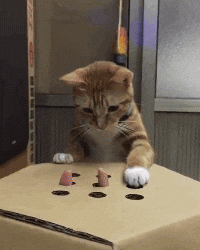
Other times, your environment limits your options. Maybe your work computer doesn’t allow installs. Maybe your roommate leaves their device out unlocked. Maybe your parents keep junk food stocked. Or maybe there’s some vice you allow yourself “just this once” for work or leisure… until it snowballs.Or else you simply take advantage. Your Hot Cognition takes over, lending you the motivation and few calories it takes to punch the digits to disable the blocks.Whatever the reason, some distractions will slip through.
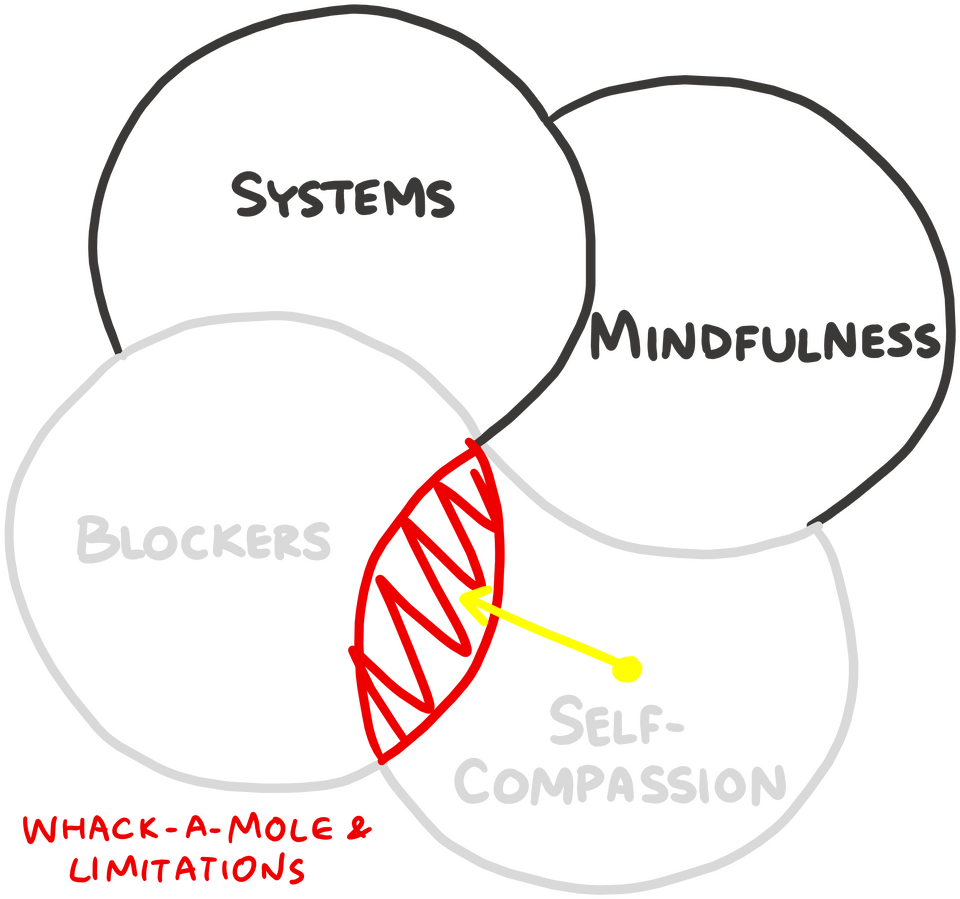
And when they do, there's no need to panic. No need to beat yourself up. Just catch and contain the leak using the next bucket: Self-Compassion.
Third bucket: Self-compassion
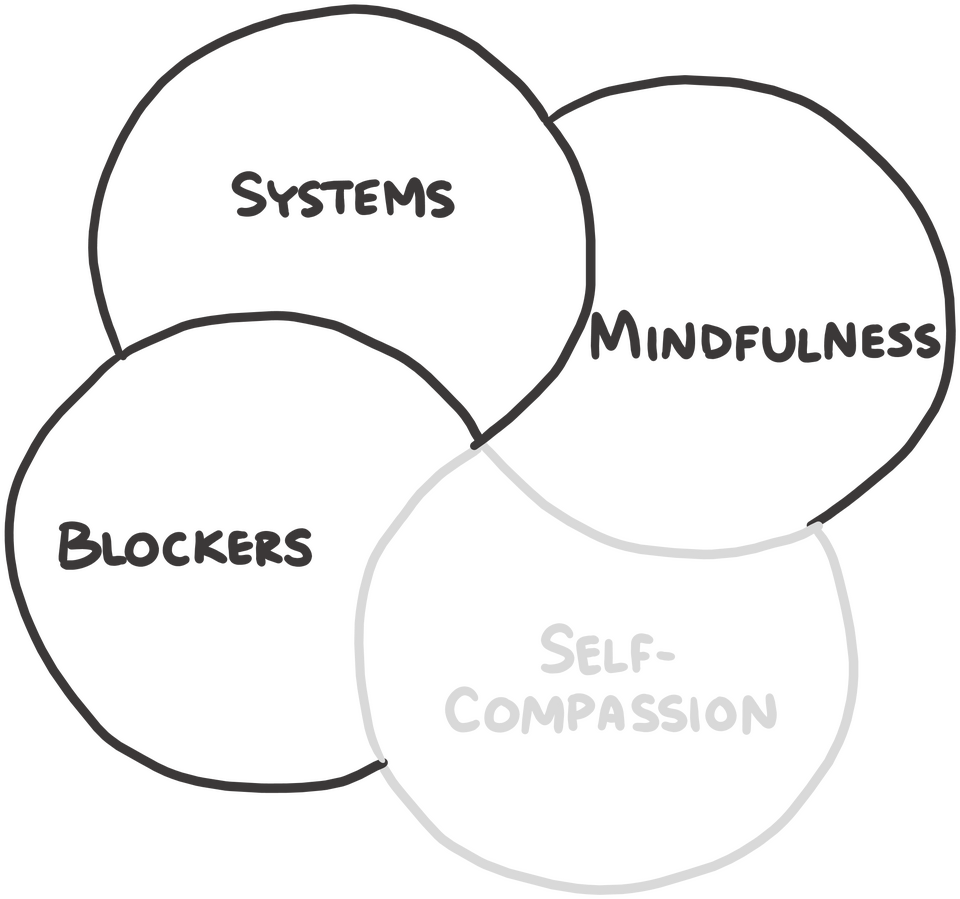
As is the case with all human behavior, distraction is just another way our brains attempt to deal with pain. If we accept this fact, it makes sense that the only way to handle distraction is by learning to handle discomfort… Time management is pain management.
— NIR EYAL
The rules of meditation are simple.Rule no. 1: Focus your attention on your breath.... That’s it.The genius thing about meditation, however, lies in its unspoken rule: you’re sort of allowed to lose focus.Of course, this unspoken rule directly contradicts the one hard rule, but somehow the practice still holds. That's because with meditation, it's not just okay if you falter; it's entirely expected. In fact, the act of "picking yourself back up when you falter" is itself the practice.With meditation, there's zero need for self-criticism. Because a side goal of the practice is to detach and observe firsthand the frenetic circus that is the mind. Random thoughts and reveries are natural and expected. Criticizing ourselves for this is like criticizing the lion for being ferocious. This is just its nature.No, our job with meditation is simple: sit and observe it all happening inside... then try your best to maintain focus, gently reining it in when it deviates.
The Meditator’s Mindset
If you want to break the spell of Vice-Induced Depressive Syndrome, you’ll need to curb your vice intake for a long while. No way around that.But, this ain't your first rodeo, is it?You’ve tried moderation—setting limits, strict allowances... and it didn’t work.You’ve tried gradually weaning down... and it didn’t work.You’ve tried going cold turkey... and it didn’t work.You tried cold turkey again, this time with fiery resolve—and still, it didn’t work.And now here you are, once again, hoping this time will be different. Hoping this time you’ll actually stick with it.And in a way, this time won’t be different. You’ll still have rules and commitments—clear boundaries you’ve set for yourself, based on your North Star.But what will be different is your approach.This time, you’ll carry with you the Meditator’s Mindset.This time, you’ll embrace the unspoken rule that says: it’s okay to slip up. It’s okay to deviate.You’ll let go of the fantasy of being perfect forever. You’ll stop punishing yourself for breaking a streak that no one’s tracking but you. You’ll accept—and even expect—that you’ll falter. That you’ll binge, scroll, or spiral. And instead of shame or reprimand, you’ll meet it with understanding and self-compassion.As with meditation, the skill to gain with the Habit Reframe Method isn't the ability to sustain perfect adherence to the rules. No, the skill is honing your ability to catch yourself when you deviate, and to return to the proper path as quickly and painlessly as possible.
“But hold on,” I hear you saying.“Won’t accepting my bad behaviors as inevitable and, like, “shruggable” just lead me to being careless and undisciplined? I mean, if I give myself permission to do whatever, am I not just giving up on my goal to stop procrastinating? Won’t I get all complacent and lazy and just sit around watching TV all day doing nothing?”

No, not at all.Taking on the Meditator’s Mindset doesn’t mean giving yourself a free pass to indulge your vices whenever you feel like it—whenever it Feels Right. Just like meditation still has its one hard rule (focus on the breath) you'll still have your hard rules (RC&AEs). You'll also have the protocols of your system.These are the boundaries you’ve set, the ones that reflect the life you want to live. They are non-negotiable.So, let me say it clearly:When faced with the opportunity to deviate—when the voice of temptation says “just this once”—you are not allowed. You don’t get to cheat. You don’t make exceptions. You don't have "permission". Just like in meditation, you’re not allowed to intentionally break focus.That said, you must carry the unspoken rule, the one at the core of the time-honored practice of meditation: unconditional, instant, automatic compassion when you slip-up.Whether it’s a two-minute unsanctioned email check, or a three-day binge watching police body-cam footage on YouTube (just me?)... the rule is the same:No shame. No guilt. No spiraling. Just self-compassion. Just you coming back to the practice.
The importance of self-compassion
The reason self-compassion is so central to this method is because it’s straight-up pragmatic.Sure, you'll feel nicer by stopping the self-hate and self-reprimand… but honestly, all I care about is what works. What actually produces tangible results.Like, if kicking yourself provided results, I’d be selling Habit Reframe-branded steel-toed boots. But, oh well, it doesn’t.The evidence has shown me that self-compassion is simply effective. And that's because it eliminates one of the biggest drivers towards vices.See, the rut you’re in isn’t caused by isolated actions. It’s not just one bad decision here or there. What keeps you stuck are interlocking feedback loops—a kind of ecosystem of self-sabotage.There’s the small loop. It lasts the span of a work session. You start with a minor indulgence—maybe a quick scroll. That sparks discomfort: either the itch for more, or a pang of guilt. That discomfort drives you back to the vice for relief. You waste more time, feel more stress and self-disgust, get more cravings… and round and round you go.Here’s that Doomscroll Feedback Loop diagram again:
Day after day, you get caught in these doomscroll spirals. And because they flood your brain with easy rewards, your survival system gets tricked into thinking you’re thriving. So your motivation gets suppressed. You feel lethargic, dull, uninspired. This is VIDS.But life doesn’t care about your motivation levels. You still have obligations and deadlines. So, each day, you dump a mountain of expectations on yourself to do better. To be better.But then... you get that ugh, I just don't feel like it" sensation, which causes an Expectation Gap:

Which leads to frustration, shame, and overwhelm—all which is just more fuel for the Hot Cognition fire of desire and compulsions.It's never long before you find yourself armed with a neat excuse, a reason to grab at a vice and “escape” the threat. But the threat is you. And you can’t escape you—not for long anyway.So the stress and judgment return, only more elevated... aaaand down you go, spiraling back into a doomscrolling oblivion.

It's like the little loop (spanning a few hours) is nested in a larger one (spanning weeks and months).It makes for a royal mess.But it’s a moving mess. A machine. And like any machine, it only runs if the gears are engaged and spinning.Self-compassion is your iron bar. It’s the solid spoke you can jam into those gears at any point in the cycle—instantly jamming it, stopping the forward motion, breaking the loop before it spirals out further.So when do you stick that iron bar into the machine?
Right after a slip-up, when the guilt starts rising
Mid-scroll, the moment you catch yourself
After wasting the day, as you go to bed
Towards the end of a prolonged binge, where it's like “I blew it again,” and you’re tempted to just give up entirely
Doesn't matter, really.Each of these is a moment where a gentle, intentional “It’s okay—let’s return” will do far more than self-flagellation ever could.
Don’t Get Mad, Get Data
When was the last time you actually asked yourself why a work session fell apart?And I mean really asked, like from scratch, making a concerted effort to set aside all the usual assumptions and “oh it's because I'm the worst, it's because I'm pathetic...” self-blame scripts.See, you’ve been telling yourself the same story for years. But you do have a choice: to not accept it as truth.In the aftermath of a completely derailed work session—or an evening of vices and binging—you can pause and take a cold, impartial look. You can come to a different conclusion about what exactly happened and why.And it’s not just that you can do this... I’d argue you must.Being able to scrutinize your failures in a detached, impartial way is essential if you want to improve your situation over time.And the only way to do that is through self-compassion.
Don’t get mad, get data.That’s the mantra I want you to take to heart.When you slip, don’t get mad at yourself. Get data about yourself. Take a moment to hear the emotional ramblings of your mind—I messed up again. I have no control. It’s hopeless.—but then move on to more objective signals:
What did you do the second you sat down to work? Did you skip or tweak a part of your system?
What was your emotional state? Were you feeling resistance but still expected yourself to plow ahead with heavy tasks?
Did something happen during the session?Did you experience a trigger, even a subtle one?
What you’re looking for are patterns.You want to spot the small, nearly imperceptible cues that usually get drowned out by emotional noise—but that show up again and again, and are responsible for things derailing.
Why is collecting data important? Well, like me, you’ve been obsessing over fixing yourself, which is fine. But it hasn’t been working because you don’t know the real reasons why you’re seemingly broken. You can’t find the solution if your assumptions about the cause of the problem are way off… which, as I told you right at the top of this webbook, they are. Trust me.Sorry to be the bearer of bad news, but the thing you bought this thing for—some perfected step-by-step method that’ll get you to instantly and forever change and somehow become more disciplined—it doesn’t exist.It can’t exist, because neither they (the people writing self-help stuff, myself included) nor you know the whole picture.You haven’t collected all the data points yet; the Hows and Whys and Whens and Ifs and other truths about your compulsive behaviors and derailed works sessions. You haven’t yet tracked the patterns.Figuring all that out requires two things: real experiences of failure (which you’ll have plenty of), then objective, calm, and dispassionate reflection (which you never do, but you can and should start doing today, using self-compassion).This was a huge breakthrough for me. Sorry if that’s tacky self-help speak, but it’s true.Suddenly, my derailed work sessions had meaning. They were useful. They were filled with crucial information—information I would need to better tweak my environment and manage my compulsive actions.With my commitment to unconditional self-compassion, I relinquished the expectation and fantasy that I was ever going to be perfect from some moment onwards, and I instead baked the idea of faltering and failing right into my personal self-improvement system.Time for you to do the same.
You Turn: Applying Self-Compassion
Here's a two-part exercise for you to do right now. And it requires zero work.
Forgive yourself for all your past failures, binges, mistakes, whatever.
Like, right now. Clean slate. Forgive yourself because you deserve to forgive yourself.
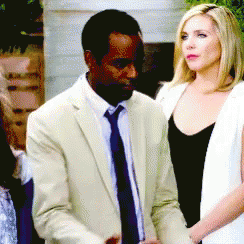
And if you're having a hard time with that—if you believe your past to be truly shameful and unforgivable—then the support and guidance of a professional is straight-up mandatory.Like you need to walk in and say, "here's what I hate about myself... Deep down, I truly believe it, even though on the surface I know it's all BS. But it's holding me back, and I want help in letting it go."
Make a promise to instantly and unconditionally forgive yourself for all your future failures, binges, mistakes, whatever.
Again, no matter the circumstance... instant clean slate. Instant self-compassion. Instant reverting back towards the path you know to be right.You need to forgive yourself because you deserve to forgive yourself.
Limitations of Self-Compassion
When taken to extremes, self-compassion can slip into complacency. Under the guise of “unconditional self-kindness,” it becomes a way to endlessly excuse deviations from your system—leaving you directionless. A leaf in the wind, carried along by fleeting desires.That wasn’t always a problem. We evolved to operate mostly on autopilot, drifting along the air currents of Hot Cognition. We grabbed at rewards before they vanished. We acted on instinct. We did what Felt Right—without needing to question whether it actually Was Right.And back then, that was fine. The Feels Right winds were mild, infrequent, and mostly pointed us in the right direction anyway.But today? It’s windy AF. All. The. Time. And the wind is almost never blowing toward the life we actually want.So we tumble into spirals we know are bad for us. And whether we soften the fall with self-compassion or not… doesn’t count for much if, deep down, we’re still wishing we were at least making progress towards getting better.Because that’s the real goal of the method: To realign the winds of what Feels Right with what we Know Is Right.So what do we do in the meantime?Setting rules and installing blockers is a great start. If the blockers hold, you’ll gradually reconnect with those quieter, natural urges to do something meaningful. And if they don’t? That’s when self-compassion catches you—softens the blow, keeps you from spiraling.But I know that isn’t enough. Not yet. Because until the winds shift, you still need a way to stay grounded in the storm.And you don’t just want to wait for change. You want to nudge it. To lean into the wind, bit by bit. To train your impulses—going from someone who reacts by impulse to someone who responds with intention.You want to slowly teach your brain that the path that Is Right… should also Feel Right.That’s what mindfulness is for.
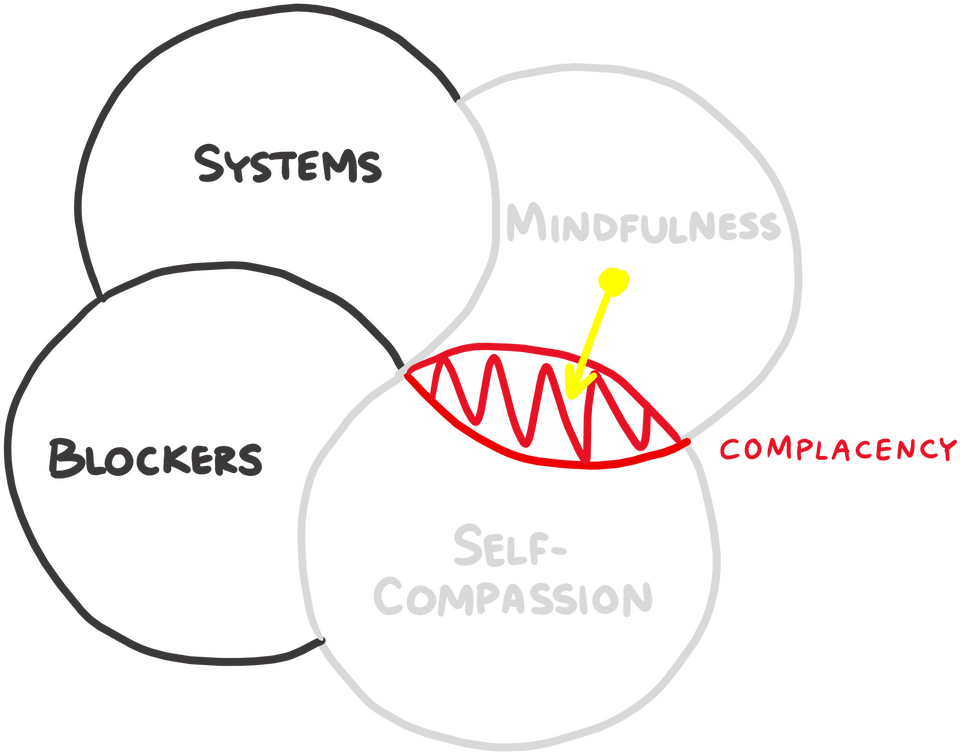
And that's our last bucket.
Fourth Bucket: Mindfulness
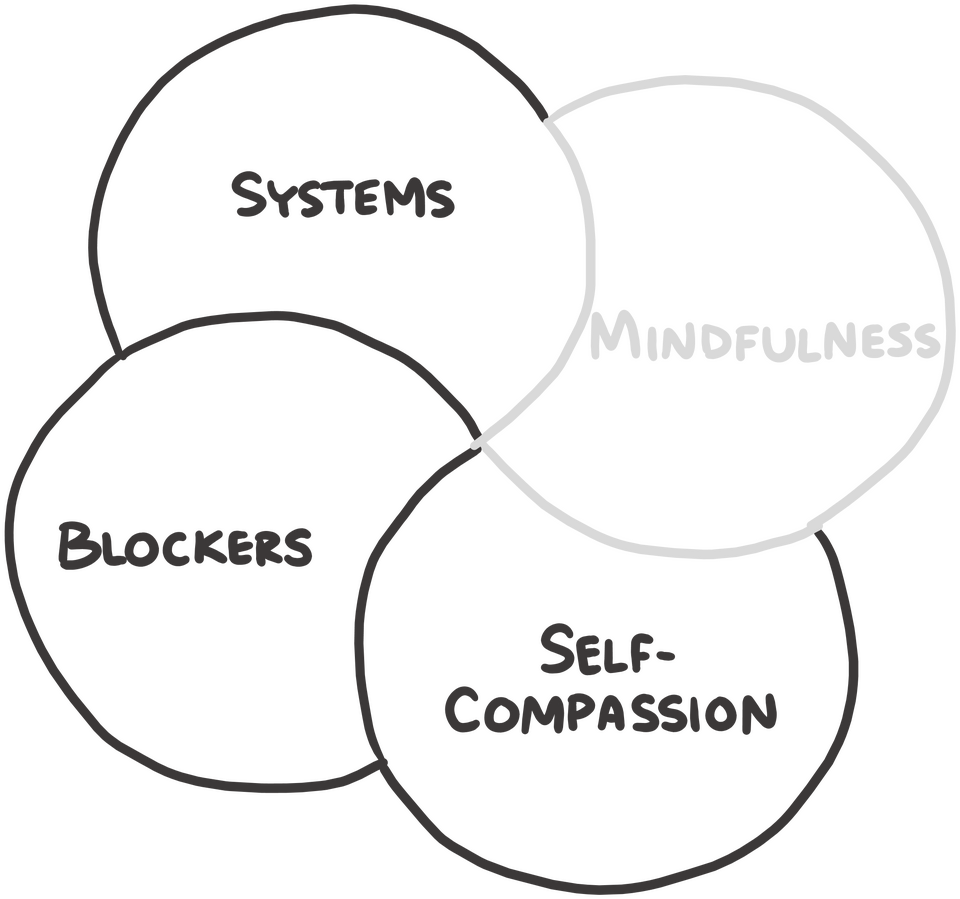
Mindfulness gives you time. Time gives you choices. Choices, skillfully made, lead to freedom.
— BHANTE HENEPOLA GUNARATANA
As you will see, in some cases, pursuit means actively doing nothing.
— DR. ROBERT LUSTIG
Sometimes even to live is an act of courage.
— SENECA
Computer is turned on. Check.Seat is ergonomically positioned; posture is straight. Check.Website blockers are activated and locked. Check.Desktop is clean and tidy, chhh—no wait the stapler is crooked. Okay, there—eck.Coding software is loaded and good to go.All systems check. Houston, we’re ready for takeoff.3...2...1...Okay, let’s do this thing—aaaaaaaaaand I don’t feel like it.Like I really don't feel like doing the work.C’mon?! Why is this happening to me?!What is it with this feeling?
Dealing with Resistance
By now, we know all about that demotivated feeling. About the dreary mix of lethargy and disinterest.I mean, it's frustrating as heck, right? Because you really can't afford to let some "feeling" sabotage you and your intentions to get work done. You—the adult with responsibilities and obligations and deadlines—really can't let yourself waste yet another work session on meaningless and juvenile garbage... all because you, like, "don't feel like it".So you tell yourself...

Maybe you have an important work or school assignment. Maybe the deadline is in 24 hours. And maybe you know it'll take roughly 8 hours.So, okay, you're not exactly screwed—not yet anyway. It'd be nice to, you know, not cram it all in an absolute last-minute frenzy. Be nice to forgo the stress and panic of procrastination—to say nothing of the risk of delivering a rushed final product.How can it be done? How can you overcome the resistance and get the work done without procrastinating until you feel the suffocating squeeze of an imminent deadline?Well, the way I see it, you have three options:
💪 Option 1: Power through it.
When you feel resistance, push through with gritted teeth. Tell yourself that motivation is overrated. You need to just sit down, shut up, and command your fingers to tap at the keyboard, letter by letter.This is possible. But, like wading upstream against a swift current, my-oh-my is it exhausting. Sure, ex-Navy SEALs can wrestle with resistance for hours... but mere mortals like you and I, we just won't have the stamina.
🍫 Option 2: Indulge your craving.
Just go with the idea to check LinkedIn or whatever else that’s not yet blocked... in the hopes that the resistance will pass, and you’ll be able to return to work with a clear head and more motivation and focus.Yeah. No.It never pans out the way you hope and instead snowballs out of control.
👻 Option 3: Apply the Ghost-House Technique.
Use a mindfulness-based practice to ease your way into a productive flow-state, without force, pressure, or coercion.
Option 3 works. Here's how it's done.
The Ghost-House Technique
You're eight years old again, in the basement, playing Super Mario. The Mario you're controlling enters a haunted house level (cue the door-creak soundbite)
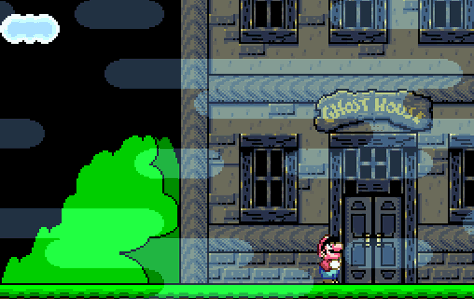
You advance a few paces when an angry ghost glides towards Mario from behind. This rattles you, but you manage to turn around just in time. Phew.
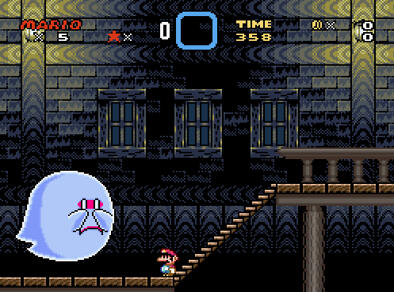
Here's the thing. Looking at the ghost doesn't make it go away. There's nothing you can do to eliminate it. Ghosts are immune to everything, including cape whips and fireballs. The only thing Mario can do is manage the ghosts by facing them and making them freeze.With the ghost immobilized, eight-year-old-you can take a breath and plan the next move.
Okay, I'll jump on that platform; hit that question mark box; run and duck under that flame... Then, I'll turn around to freeze the ghost again so I can regroup and replan.Ready, set... go.
Eight-year-old you then swiftly navigates the obstacles before turning around to face the ghost again. It takes a few stop-and-go cycles, but you manage to finish the level without losing a single life. Success.You can do the same thing with resistance.Just like with the ghost, resistance can only be managed. And this is also done by facing it.
Hmm, there it is again. That creepy ghost-like sensation called resistance.
'Facing' resistance doesn't make it vanish. Observing it is not some psychological fireball you can use to kill it. But, with it immobilized, you can plan your next move.
Okay, I feel the resistance. It is what it is and isn't going anywhere. Fine.
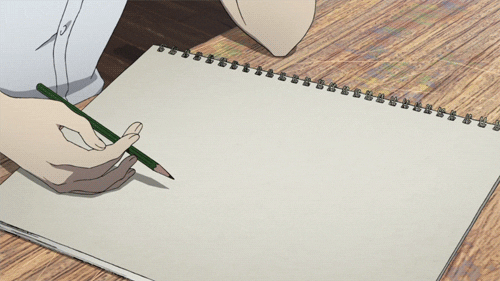
Now, first move: open my notebook, read what I wrote in class. Next, circle the argument I noted... From there, I can stop, regroup, and replan.Ready, set... go.
Then, mindful and present, perform your first set of actions diligently, carefully, and slowly.When you complete those tasks, or when you feel the intensity of ghostly resistance creep too closely... just stop. Turn away from the work. Look at the resistance ghost again. Take a few breaths. Plan your next move. Then move forward some more.Give yourself the liberty and self-compassion to go through as many "stop, observe, plan, go, stop" sequences as you need.Be patient with yourself. This is you lowering your expectations to work to meet your capacity to do work. It'll take some time.
With enough repetition, things may click, escalate, and become self-propelling. Eventually, you might find yourself in a state of productive flow.At the same time, if it's just not happening—if you're not gaining any momentum and the "ugh, I just don't feel like it" sensation is persisting and demoralizing you to no end—give yourself permission to unplug, get up, and go for a walk.Come back in a few minutes or so to try again.Do not force yourself to work.Not then. Not ever.
A Primer on mindfulness
In applying the Habit Reframe Method to your daily life, you’ll be leaning on a practice called mindfulness.The Ghost-House Technique applies mindfulness specifically to handling work resistance, but there are plenty of other valuable uses for it, which we’ll explore more in this bucket.As you’ll see, each application will follow the same pattern: when you’re in situation X, apply mindfulness in Y way.But the practice itself is quite simple.All it involves is deliberately paying attention to the present moment in a calm, detached, and objective manner. You’re just observing the flow of your inner experiences—your thoughts, feelings, and physical sensations—without judgment, and without getting entangled in them or what they mean about you.It’s super important that you’ve grasped the concept of mindfulness and can practice it independently, on command. So here’s a pair of quick exercises, first to help ensure the idea really clicks, and then to give you some direct, practical experience.
Let’s start with something that might seem odd at first—but please, just go with it.When you’re ready, I want you to say out loud the following phrase (or whisper it if you’re in public):There is a goat in the yard.Repeat it a few times...There is a goat in the yard. There is a goat in the yard. There is a goat in the yard…

Keep it going on repeat.There is a goat in the yard. There is a goat in the yard. There is a goat in the yard…Now, stop saying it out loud, but continue saying it in your head. See if you can "observe" that thought loop as it repeats.See if you can look at it.Focus your attention on the sound of the phrase—as if there’s a Bluetooth speaker inside or near you, looping the words constantly.There is a goat in the yard. There is a goat in the yard. There is a goat in the yard…Let it repeat a few more times. Keep observing.Boom.That right there is mindfulness at play.
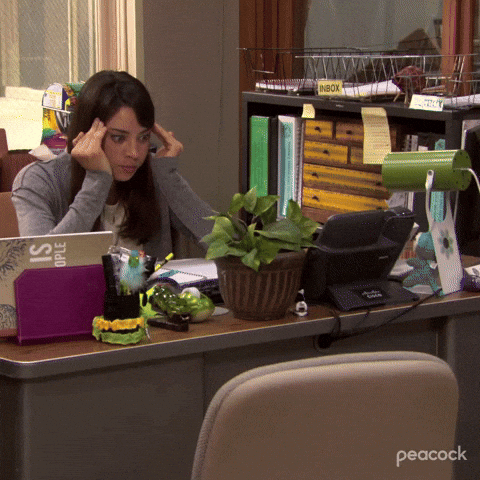
That’s you observing your thoughts in a detached way, like a curious bystander witnessing these mental sounds.And you can do the same with emotions and physical sensations.Like right now—stop to consider what it feels like for your butt muscles to make contact with your chair.Really. Just look at the sensation.Now take a look at your current emotional state (or lack thereof). Try to observe, say, your motivation levels. How does it feel?Again—that right there is you practicing mindfulness. That’s really all there is to it.
First, open your phone and set a timer for 20 minutes without starting it.
Now, consider your various school or work obligations… all the stuff you need to get done soon. Choose a task that’s important—maybe a little time-sensitive—but not overly taxing. Something that would take about 20 minutes. Or something where you’d feel happy if you made a solid 20 minutes of progress on it.
Minimize this tab and go ahead and pull it up in front of you—but don't start.
And remember, just like in Super Mario, the act of turning to face the ghost doesn’t make it go away. No fireball or cape-whip can destroy the ghost. All you can do is immobilize it—make it freeze.
It’s the same thing with resistance. There’s nothing you can really do to kill it or make it disappear. Mindfulness is not a zapping gun for negative emotions. No, with mindfulness, all you do is observe and let it be.
So that’s what we’re doing right now.
I want you to do what you can to face the resistance you’re feeling. Really take it in. Observe it from a detached, passive perspective, like Mario just standing there, looking at the ghost. Like, Huh. There it is—that feeling.
I want you to do the same thing now that you’re facing your resistance and it’s immobilized in time.
From here, see if you can mentally plan out a small set of steps to take to start up on the task in front of you. These should take no more than a few minutes of minimal effort.
So, think of those basic steps—and there’s zero way for them to be too basic. Like if all you plan to do is write your name and the date on top of a report, that’s 100% fine.
In a moment, I’ll be asking you to minimize this window so you can get started on that work, on the small task you laid out in your mind. But continue to just observe the resistance for a few more seconds. It’s you playing Mario, facing the ghost, summoning the nerves to advance a bit.
If you came back because the resistance was too much, notice if you’re experiencing any self-directed criticism or frustration. See if you’re feeling the urge to reach for a vice to escape. Do your best to observe all of that—without judgment. Then to offer yourself some much-deserved compassion.
If not, if you managed to get some work done, check whether you’re feeling a tinge of eagerness to get going on the rest of the task, or if the resistance has returned.
Just observe whatever’s there. As it is. For a few more seconds.
If at any moment you’re really not feeling it, pause the timer, get up and go for a short walk around the house—but continue to focus on your inner experience. Try your best to observe, then release, any negative sensations. See if you can offer yourself some self-compassion and kindness.
If you’re actually feeling quite alright, then continue on with your work session. But remember, each time the resistance creeps back in—or you run out of things to do and feel tempted to stop—observe the resistance, plan your next few moves, and repeat.
Do that either until the timer finishes. Or, you find yourself truly lacking the motivation to keep going. At that point, you’re good. You can stop and move on to the next part of this webbook.
Good luck.
Dealing with the very low motivation and mental states
You've put in the work. Fleshed out your North Star goals, rules, and commitments. You set up your website blockers. Deleted the social apps. Prepped your workspace.You sit down to work, take a deep breath, and of course... nothing."Just use the Ghost-House Technique," you tell yourself. So you do. You try to observe what's going on inside—to look at the resistance. Instead, you come up against something intense. It's overwhelming. Suffocating. Paralyzing.I... I just can't do it.What then?Like, what do you do when you just can't? When everything feels so utterly impossible and exhausting and hopeless?Because here's the thing: this mental state is a very real possibility. Especially at first. Especially when your VIDS symptoms are at their peak and stubbornly refuse to go down.Having lived through it countless times—without ever being able to neatly "hack" my way out—I’m not going to pretend I’ve got some miracle cure.If you have zero fucking spoons... you have zero fucking spoons.No self-help guru ever warns us about this. I mean, it makes sense, because 1) most have no idea what it’s actually like, having never gone through it, and 2) even if they did, in their distant past, deal with crushing motivation issues, no publisher would let them admit the sheer futility of the situation. If the advice is not all up-and-to-the-right linear progress—if it’s not a clean formula—it’s not making the final cut.But it is real. It will happen. It will frustrate and discourage you and make you seriously doubt whether you’re ever going to get better with this method or any other.
The Vice Flu
Laura McKowen, who is very much not a self-help guru, perfectly describes this sort of experience in her book We Are the Luckiest: The Surprising Magic of a Sober Life:
In the first year of trying to get sober, I was tired all the time. Not the adrenaline-fueled tired I used to feel when I was still drinking, but something more weighted and bone-level, like the flu... More than once, I called in sick to work because I simply could not drag my body there… I slept eight, ten, twelve hours a night… And although I would have occasional bursts of almost manic energy… mostly I felt like I was slogging through mud.I found this to be so frustrating and unfair because it seemed like now that I wasn't drowning myself in wine every night, life should automatically be… easier. Better.My body should feel like a demigod’s. I wanted the energy to do all the things lighting up my brain: write more, start a podcast, start my book, fix up my apartment, clean my car, paint my bedroom, find a boyfriend, live—but most days, I could barely make it through the afternoon without crying.

Now, I'm tempted to use the term "withdrawal effects," but that’s not quite what's going on here.Unless your application of the method involves giving up drugs, alcohol, or heaping amounts of sugar, you're not going to experience any physical withdrawal. And even if it were the case, withdrawal—while potentially intense and dangerous—is still a treatable phase of recovery.So what’s up with these sudden drops in mood and energy? What is it that weighs you down and renders you utterly paralyzed and unable to do any work?Well, remember—you’ve been leaning on your vices as a coping mechanism. You’ve been using them to numb yourself from life’s stresses, worries, regrets, insecurities, and unresolved trauma.So it’s natural that, once you quit using your vices for that purpose, the pain and discomfort they so expertly suppressed will creep back in—and amplify.And this creates an incredibly confusing, frustrating situation. Because by taking on this (or any other) method, the natural assumption is you'll get better. That’s the normal expectation…But when the exact opposite happens—when your motivation, happiness, and outlook plummet after quitting those vices (the very thing that was supposed to help)—it can feel like a cruel joke.And it’s in these dark moments of frustration and despair that the first spores of excuse begin to form—like mold and rot that only thrive in damp, vulnerable conditions.
You know… maybe this whole giving up social media, video games, and junk food thing isn't such a great idea.I mean, look at how crappy and tired I feel now. This feels so utterly wrong. I'm worse than before.Maybe I’d be better off—happier, more at ease, even more motivated—if I took back my innocent little pleasures. Maybe I don’t want to stick with these commitments after all.
And once you genuinely start to believe you’d be better off with your vices than without them—it’s only a matter of time. You’ll find yourself disabling your blocks. No amount of "willpower" or "self-control" will help.Then, after indulging, you'll instantly feel 10x better, thereby proving the theory.
I was right. I'm feeling much better. I like this.
But then the feedback cycles slowly get reinitiated...and before you know it, the old habits return.
If the problem is the sudden arrival of negative emotions, what, then, is the solution?As I've mentioned, simply becoming aware of this is extremely important. This whole phenomenon truly is unexpected. As you embark on the method, anticipate and brace for negative sensations and thoughts—which might only arrive on day two or three, and reappear sporadically in the weeks that follow.When it hits, treat it like the flu. Unplug from your situation. Let time pass. Give yourself permission not to start a million good habits, not to chase your dreams just yet, not to get all busy and productive just because you stopped with the bad stuff and that’s what everyone says you're supposed to do next.Whoever first said you need to replace bad habits with good ones was, for sure a mid-2000s Tumblr blogger giving advice to his tennis partner. Sure, that might work if you’re trying to stop biting your nails. But for those of us dealing with serious, years-long bad habits? Yeah, not so much.So don’t pretend to be all swell, chipper, and grateful for every blessing of a breath, just because you’ve convinced yourself that’s how you’re supposed to feel now that you’re “free” from vices.Just allow what is to be.Allow time to pass—and since that won’t always be easy, give yourself permission to “tier down” with your vices.
3 Tiers of Vices
I’ve noticed a common, yet oddly unspoken theme in pretty much every sobriety memoir I’ve read: once the writer gives up alcohol, they allow themselves to indulge in lesser comforts. Think Netflix binges curled up under a pile of blankets with a Costco bag of Sour Patch Kids.They do this to help cope with the bad feelings the alcohol once pacified—and it's okay, at least for a while, because all that matters is getting through the difficult early stages of abstaining from their worst and most impactful vices.You should do that too.To help navigate the pain and dreariness of these periods, or what I've come to call Sudden Mood Drops, give yourself full permission to "tier down" with your vices.
🥃 Tier 1: The Hard Stuff
Traditional, destructive behaviors—many of which have been around for millennia. These include alcohol and drug abuse, smoking, and gambling. Often highly addictive, with severe consequences to health and life.
📱 Tier 2: The Junk
Seemingly benign, but with insidious, gradual effects, aka VIDS. Think streaming shows, YouTube, Reddit, social media, junk food, and pornography.
📚 Tier 3: The Passive Stuff
Things like reading books, listening to music or podcasts, doing puzzles, engaging in hobbies, healthy snacking, or taking online courses. Not harmful, and often beneficial—yet still escapist when used to avoid discomfort.
So if your current vices happen to be Netflix and Sour Patch Kids (Tier 2), go ahead and tier down. Read a fantasy novel. Fix yourself a healthy snack. Lie back and listen to that old rap album you loved as a teen (Tier 3).
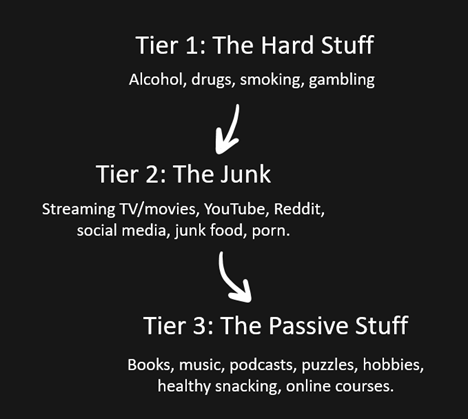
As you’ll see in the next section, dealing with the source of your bad feelings is going to be difficult and taxing. But no one has the stamina to grind through it 24/7. You can’t be faulted for needing a break—some relief.Just make sure the consequences of your coping vices are an order of magnitude smaller than the consequences of your original ones.That’s the key. When “tiering down,” what matters is that the medication’s side effects are tolerable compared to the disease.Sure, maybe you gain a bit of weight after quitting cigarettes—but that’s better than a tumor in your lungs. You can deal with that later. And yeah, you’re still procrastinating if you’re listening to podcasts instead of doing the work—but it’s way better than chasing continuous dopamine spikes from compulsive TikTok scrolling.All that matters is finding a way to let time pass—without making your situation worse.Because it’s only time that has the power to dissolve VIDS.
Unplug. Do nothing. Be Mindful.
If the second-best thing to do, during the Vice Flu and subsequent Sudden Mood Drops, is to kill time with a tiered-down vice, the first-best thing to do is... nothing.Sit on your couch and stare at the wall. Go for a long walk. Take a day trip out in nature.

From there, your only job is to let everything internal—the stuff you’ve been impulsively escaping from with your vices—surface and run its course.You do this by observing. Observing your feelings and emotions. Sitting with your frustrations, stress, regrets, worries, and fears. Listening to the thought loops without judgment.Feel the cravings. Get curious about what they feel like in your body. "Look at" the sensations of hopelessness, apathy, or depression itself.

Through this act of gentle but deliberate observation—mindfulness—you take a seat in the back row of your mind’s own three-ring circus.This is not how we normally live. Normally, yeah, we might "go" to the circus... but we end up tossed into the ring with the obnoxious MC, dickhead clowns, and hungry lions. This time, think of it as attending the circus—that mandatory human experience—but sitting way up in the stands, watching the chaos from a safe distance.After a while, if it gets too intense—or just boring and repetitive—step out of the tent. Go for another walk. Crack open a book. Listen to an old album.Then come back whenever you're ready for a bit more mindful self-therapy.
Emotional State Permanence Bias
You know what I find to be both the weirdest and most consistent thing about recovering from tech addiction and dealing with depression?When I wake up refreshed and optimistic—when I’ve strung together a few solid work sessions or workouts, made it ten days without overindulging—I genuinely can’t imagine feeling any other way. The idea of falling back into a dark, miserable rut feels impossible. The thought of binge-watching crappy TikTok or YouTube videos is repulsive.The reverse, though, is even more true.When I’m in the pit—when hopelessness, self-contempt, and apathy obscure everything good; when my motivation is buried at negative 1000 and I can’t imagine even trying to get out of bed—I become convinced that this is how I’ll feel forever. The idea that I’ll one day be energized, hopeful, and free from my compulsions? Laughable.In short: however I feel mentally in any given moment becomes how I expect to feel forever. Any other state is unfathomable.I call this Emotional State Permanence Bias. It’s a cognitive distortion where your brain extrapolates your current emotional state and assumes that's how you'll feel forever.But your inner state is never permanent. It ebbs and flows like the ocean tide.I bring this up to remind you these low moods won’t last, even if they feel like they will. And they will feel that way. But time will pass. So will the sentiment. So will the outlook.The Vice Flu and the many Emotional State Crashes that follow will suck. It'll be hard. It might feel like you’re stuck that way for life. But when you're caught up in it, try to remember: things will get better. Remind yourself of Emotional State Permanence Bias. Remind yourself that your thinking is biased and off.Whereas in the past, you may have reached for a vice to numb those bad feelings—only for them to come back worse—this time, you’ll just observe mindfully. You’ll let them run their course.This time, you’ll know what to do.
Dealing with Big Triggers
If you’re an aspiring artist, you know what it’s like to put something out there.It hardly matters what you tell yourself. That how people react, whether they like or dislike it, upvote or downvote it, has zero bearing on who you are as a person or artist. That whether this one piece “pops” on some algorithmic platform (which mostly caters to shallow garbage anyway) has no real say in whether you’ll ever “make it.”All that really matters is showing up, punching in, doing the work, releasing it, and moving on to the next one.Yet in the end, whatever you put into the world still feels like a piece of you. It’s you—naked and vulnerable. Exposed to criticism and hate. To comparison and rejection. Or worst of all, to the crickets of indifference.
I bring this up because, as an aspiring writer, the release part of the creative process has been, by far, my Bigiest of all my Big Triggers.It’s unreal how much it can affect me. I’ll get nailed with self-doubt and imposter syndrome the moment the response to whatever I put out doesn’t match my expectations.This, of course, has me reaching for a vice. But because the piece was at least tangentially about how not to reach for vices, the imposter syndrome only gets confirmed—spiraling me deeper into oblivion.But that’s me. All I know is you don’t have to be an aspiring anything to know what a Big Trigger feels like. Life dishes them out to all of us, and they can be absolutely brutal sometimes. So if we’re going to make it through this journey, we need a better way to deal.And that way is mindfulness.
The Mindful Way Through Triggers
You need to treat Big Triggers the same way you would with Emotional State Crashes. The same wiring is at play—but with triggers, the discomfort is sharper, the cravings are stronger, the urgency to escape is way more intense.In those moments, your brain’s instinct is to grab at the nearest Tier-2 vice. Doomscrolling, binging junk food, disappearing into porn or gaming—anything to numb the pain and just not exist for a while.And here’s the thing: it’s okay to want to escape when a trigger first hits. When you're under a threat, real or imagined, your nervous system will flare up as it seeks ways to escape and survive. You’re not “weak” for feeling that way. You’re just human, wired to avoid discomfort and danger—even if the “danger” is just emotional.The trick is not to force yourself to be all Zen while your nerves are on fire. Sometimes the smartest move is to head out for a long walk. Or to distract yourself with a Tier-3 vice.
When you're feeling a little calmer and level-headed, you can gently bring in mindfulness, turning toward the trigger and the accompanying emotions.
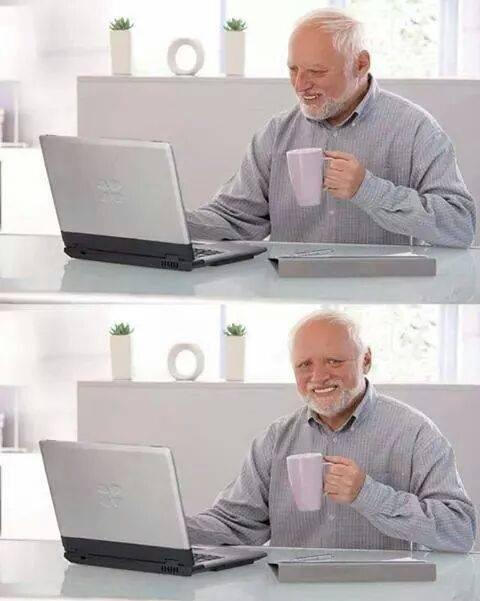
From there, you can ask yourself calmly and objectively:
What exactly happened?
What story is my mind spinning about this?
Is there anything real I need to act on—or is this just fear talking?
If there’s something to fix, you can fix it. If not, you can let it go. It’s like how that old prayer goes—the one that gets passed around recovery circles.
“Lord, grant me the serenity to accept the things I cannot change, courage to change the things I can, and wisdom to know the difference.”
Mindfulness gives you that wisdom. Not in some cosmic, mystical sense, but in the very practical moment where you're detached from the discomfort and you're able to make an unbiased assessment.That’s how you navigate Big Triggers. Not by suppressing your feelings. Not by pretending to be above it all. But by giving yourself the space to feel it safely, then deciding—deliberately—what comes next.
Dealing with depression
If you're someone who has struggled with self-control for years—if you've faced countless personal disappointments and failures—it's likely you're also someone who has dealt with depression, diagnosed or not. Along with it often comes anxiety, regret, and issues of low self-image and self-worth.If this is the case, then you'll find that the real work of the Habit Reframe Method comes down to this:Doing your best to confront, process, and (if required) act on painful emotions—rather than escaping them through your vices, relieving the discomfort, as you’ve been doing since childhood.This is the cost of freedom from the grip of vices. This is how you can begin to heal and gradually get better.Think of it as an exchange: more happiness for less pleasure. But the price of admission is to feel the discomfort. To live in for a while... which, of course, is best done through mindfulness.
☝️ Full disclosure: I’m not a mental-health professional.
If you’re battling something especially severe or persistent, I fully encourage you to seek professional help.Like, for real.I’ve sought help many times along my own journey—always with hesitation, but never with regret. A lot of competent, compassionate, and caring people work in mental health. They know how to help you.My hope is that we continue shedding the stigma around seeking support for depression, anxiety, ADHD, and other mental health struggles—and that governments and workplaces continue making it more accessible.You're not weak for seeking help, just like you’re not weak for going to a dentist or physiotherapist. Your mind is a physical body part—not unlike, your teeth and muscles. Sometimes things go off-track, and when they do, there are skilled professionals who know how to get you back in shape.I believe this webbook and its method can make an awesome companion to therapy. You can and should share anything here with the person treating you.
Much-needed and sincere disclaimer said, I can speak about depression because I know it well. I know it on an intellectual level, having read a lot about it over the years. More importantly, I know it on a personal level.Throughout my entire twenties, I went through some pretty harsh episodes. I became apathetic, passive, and unable to experience much joy or pleasure (this, I came to learn, is called anhedonia). I’ve often felt deep, unrelenting pangs of regret, longing, and hopelessness. Other times, I just felt nothing.Depression made my bad habits worse—since I was quick to reach for a vice to escape or numb the pain. Or maybe my bad habits fed my depression—because I couldn't stay away, and so they fed my VIDS and made me feel like a pathetic failure. Either way, the two—vices and depression—were fully entwined for most of my life.Thankfully, today, depression is no longer a defining feature in my life.I was taught, by a compassionate social worker I’ll be forever grateful to, how to use mindfulness to manage it.The keyword there is manage.
How to Manage Depression with Mindfulness
Depression, for me at least, is getting randomly struck with an unpleasant feeling. Often, there’s no reason for it. Like nothing happened, no trigger big or small, to make me upset or feel down. The feeling just happens—like a dark cloud drifting across an otherwise clear emotional horizon.The feeling might be sadness, regret, self-doubt, hopelessness. Sometimes it’s nameless—just heavy, dark, and negative. And pretty soon, my mind scrambles to make sense of it. It spins up a narrative: dredging up regrets, projecting future doom, replaying old mistakes.It sucks.But when I use mindfulness, those feelings and thoughts “suck” in the same way a dark rain cloud might “suck” for a guy at the beach. The cloud is real—it’s part of the scene—but it has nothing to do with him personally. It’s not about who he is, what he deserves, or whether he’s done something wrong. The cloud is just a product of wind, humidity, and air pressure patterns.It is what it is.He can’t will it away. He can’t solve it by getting upset. He can’t zap it with some cloud-blasting laser. It does indeed suck, but there’s nothing to do but watch and wait.That’s exactly what I do with the clouds of depression.I let go of the idea that this has anything to do with me as a person. It’s just a lousy brain-chemical thing. The product of neurons and synapses and other stuff I don't understand.Then I watch. And I wait. And I observe.
“Hmmm, there it is again. That familiar, creeping feeling... Okay."
I just look at it. I get mindful of it. And I wait some more.I don’t expect the feeling to go away just because I’m conscious of it. This isn’t a trick or a hack. I’m not using mindfulness as a way to zap away the emotion with focus.Instead, when I have the full thing within my awareness, I continue looking:
“There they are—the negative thoughts. Pointing at that mistake I made last Tuesday… something I’m apparently supposed to dwell on and regret... and now a memory of me chickening out on something last year... Thanks, brain… I guess.”
Once I take that detached stance—once I become the non-judgmental observer—I find I’m far less likely to spiral. I don’t ruminate as much. Things don’t snowball out of control.Oh—and I try my best not to make an identity out of it.I am not “depressed.” I can see, feel, and hear depression—but I am not it.
I am someone who experiences symptoms of depression.I mean, I sometimes feel happy too, but I don’t then call myself “happied.” It’s just a fleeting state. A thing that comes and passes.In the end, I still get wet when it rains. I still feel the cold. But I don’t suffer—not like before. With mindfulness, I can accept the negative emotions and discomforts as they are.So can you.
Last few words about depression before moving on.So this webbook isn’t intended to directly cure it or to deal with past trauma. But my hope is that by following the steps of the Habit Reframe Method—by managing your vices and building a positive, consistent foundation of self-care, lifestyle habits, and a meaningful work-life—your experience of negative emotions like depression will start to recede in some tangible way.It may take time—and it won’t always be straightforward.I mean, your external environment could be pristine. Your habits could be 100% in check. You might even hit a big North Star milestone in your life… and still, depression may happen. Unprovoked. Unexpected. Unreasonable.Maybe inner sadness, longing, and loss aversion are just part of the human condition—incurable facets of being alive. Or maybe it’s simply a chemical issue, and it’ll be up to you and your doctor to find an intervention that works.Whatever the cause, I’ve found mindfulness to be the best way to manage it. Not to fix it, not to cure it—but to live with it in a way that doesn’t consume you.And if you are someone who deals with depression, know this:You are not alone. And life does get better—especially when you create the right mental conditions to work on yourself and on something that feels meaningful to you.I’ll say it again: depression is not you. You are not “depressed.” You—the true you—are the observer of depression.You just happen to have a brain and body that operate in certain ways. Sometimes that includes a steady whooshing of chemicals (or lack thereof) that stir up bad feelings and thoughts.My advice—alongside seeking support—is to be mindful of the symptoms when they appear. Just as you’ve learned to do with resistance and cravings, you can do the same with depression.Observe the negative sensations. Don’t resist them. Don’t escape or distract. Just be present with them, as best you can.That little empty void we all have at our core is the most painful thing, while also being a teacher of compassion, love, and patience (Credit to Laura McKowen for that insight). That can only happen by observing it. By coming to terms with it. By realizing that it doesn’t define you—not even close.You’ll be okay.With mindfulness, self-care, self-compassion, and maybe a little help when you need it… things will get better.
Dealing with Doomscrolls and Binges
Your vices make you laugh. They entertain you. They distract you from stress, anxiety, or boredom. After years of these experiences, your brain now has these vices “pinned” to a variety of positive emotions.So they're enticing. They're attractive. The idea of grabbing at one of them just Feels Right.So, what can we do about that? How can we lessen the attraction to the point where it no longer nags at you non-stop? Where you'll be able to shrug and 'take-it-or-leave-it'?Logically, we need to start linking negative sensations to your vices. And the good thing is—and “good” is a relative term here—there’s usually a moment after you’ve gone too far with a doomscroll or binge when things don’t feel so good.It might be an emptiness. Or a spike of anxiety from procrastinating on something important. Or that sinking regret after wasting time you’d set aside to chase a creative dream. Even the bloated queasiness from junk food counts.In theory, your brain should pin those unpleasant feelings to the vice itself. It caused the problem after all, so it deserves the association.But that’s not what happens.Because of the disconnect between vices and their eventual effects (negative consequences in this case)…
The vices don’t get the blame. The hyper-stimulating algorithm and the chemicals in the junk food don’t get the blame.You do.You get blamed for the apparent self-control failure—and for whatever it cost you. Just look at the mental chatter that kicks in during those low points:
I faltered. I have no discipline. I am a slob. I'm wasting my time, wasting my life. It’s all my fault…
And so, instead of the bad feelings being pinned to the vice, they get pinned to you. They get attached to your self-image—which helps explain the chronic self-contempt and low self-esteem you've come to feel.Meanwhile, the vice keeps getting pinned with nothing but positive, pleasant, flowery emotions. La la la. So pleasing. So lovely. So great.And if indulging in vices creates more pain, well, it has the wonderful power to soothe that too.Your vices can do no wrong. It's you that does the wrong. It's you who's the problem.All of this... ↑↑↑... needs to stop. Now and forever.If you’re going to feel bad, and if it’s going to hurt, then you may as well leverage those bad feelings to your advantage.You may as well start 'pinning' the pain to what actually caused it: the vices.
Pinning the Bad Sensations
When you falter on your commitments to follow your North Star and overindulge in a vice, start by observing and being mindful of the resulting bad feelings. Stop to observe and really take it in. Look at it all dispassionately, as if it's a tangible thing separate from you.Then, consciously—mindfully—associate that feeling with its cause. 'Pin' the discomfort to the vice.There’s no formula for this. No single right way to do it. But here's a straightforward approach.Let's say you waste an entire evening on Reddit (or whatever) and you feel that pit in your stomach. You can then stand up, point at the screen, and say aloud:
That. That damn thing. That's what’s making me feel like this feeling right here. Not me—it's this.
Take a moment to anchor that association. To burn it to your psyche. You want your brain to remember it.What matters is that you’re being honest. I’m not asking you to play mind games or chant affirmations you know aren't true. There’s a real, observable cause-and-effect happening:You overindulge in a vice → you feel awful.It’s time your brain knew that.Never let a bad feeling go to waste.
What To Do Next?
Whatever you do, after a doomscroll or a binge, don’t try to force a sharp 180 and dive straight into productivity.It won’t work.Your Vice-Induced Depressive Syndrome symptoms will be too intense. Your motivation, too depleted.You 100% need to give yourself permission to not bounce back right away. Take half a day—or more—where you don’t pressure yourself to do anything. Shut off your phone. Power down your devices. Clear the house of junk food or other vices. Just be.After a binge is not the time to “replace” the bad habit with a good one. Sounds nice, but it doesn’t work—at least not for me.When I’m at rock bottom, I have no energy. Sure, I'm stressed and freaking-out and maybe I have this urgent desire to get work done (aka inspiration)... but the capacity—my motivation—is what actually counts.Trying to be productive in that state adds pressure and expectations. It heightens the stress and anxiety. Creating the perfect recipe for more distraction as an escape.No bueno.The better approach is to unplug. To let yourself do nothing.Sit in silence. Pace the room. Go for a long walk.It might feel like you’re back at square one, especially if you had been "good" for a while. But you’re not. This is the method. This is part of the work. You’re iterating. Testing. Learning. Reframing.You try. You fail. You pin the bad emotion. You apply self-compassion. You extract the lesson. You adjust. You try again. You fail. You pin the bad emotion, etc.That’s the path.The endgame is to arrive—through many small iterations—at a life that just works for you. It's one you actually enjoy. Where what Feels Right also Is Right.So each slip...Each loop...It’s not failure. It’s feedback. It's an opportunity to "pin" and retrain your brain.Each iteration is you doing the real work of getting better.
Dealing with cravings
So, as I write this, I’m reminded I need to drop off the wife at the local mall in an hour. That means I’ll be out and about—with the car, some free time, and a post-writing-session hungry-boy appetite.My primitive brain, which is forever convinced we’re on the brink of a long, cold, calorie-scarce winter (it’s June, by the way), went straight to fantasizing about all the lovely fast food joints lining the boulevard on the trip back.And so, my brain starts conjuring pleasant memories and vivid images of me blissfully enjoying those meals.I know these are exaggerated. I know they don’t actually reflect reality. I know, if examined closely, they’re kind of eerie and off-putting—basically tailor-made for AI to depict.

Plus, I know I don’t really need to eat out. There are decent leftovers in the fridge, and I shouldn’t be spending money needlessly.And yet, despite all that, right now... I’m craving everything about the experience. The rich umami mouthfeel of the burger (extra pickles). The cold-fizzy-sugar blast of Coke. The hot, salty, savory fries—served in two different containers for some reason.It’s like… ugh... I can’t lie to you. Getting some fast food right now... it just Feels Right, you know? Every part of it—there’s not a single dissenting neuron in my limbic system. And it’s honestly been a while, so the rationalization story writes itself.So what do I do?Because... there it is. In black and white. One of my North Star rules: no solo fast food orders. A clear, unambiguous boundary I committed to—based on my goals of getting fit and maintaining my health. No allowed exceptions. No wiggle room.Sigh.I know that one day this will be way less of a big deal. Like, my Feels Right path will have curved northward enough that I can be in this exact situation—neat rationalization and all—and feel nothing.I’ll just shrug it off, mentally fast-forward the movie to the post-fast-food “what am I doing with my life” bloat and lethargy.

But that day… is not today.So what do I do? How do I deal?
As we learned in Part 1, we’re all born with mental wiring that uses a reward-based mechanism to motivate us to take action. This system has ensured our survival for millennia.But because our vices provide artificial shortcuts to reward, they don’t actually deliver survival benefits—only detriments. This is especially true when it comes to the steep sugar-fat-salt loading of fast food. Yet the brain doesn’t make that association. So we stay driven by cravings, compulsions, and rationalizations—by Hot Cognition—toward those behaviors.It just Feels Right.So how do you get Hot Cognition to stop?Well… you don’t. Short of lobotomizing your reward center, there’s nothing you can do to directly make those habitual urges and impulses disappear. But you can give them space.As Stephen Covey writes:
Between stimulus and response, there is a space. In that space is our power to choose our response. In our response lies our growth and our freedom.
That's fancy self-help speak for: just look at it and wait.The more you look at the craving—the impulse, the image, the emotion—the more you detach from it. You begin to see it as raw data. As biological stimulus that may or may not be pointing in the Is Right direction. That’s when you can say, thanks but no thanks.It’s the difference between reacting and responding.
So that’s what I’ll do after dropping off my wife. I’ll do my best to look at the craving. To look at the rationalization. To look at the overly romanticized, over-embellished mental imagery.Then I’ll make a “no” decision—might as well commit to it right now—at which point I’ll get mindful of the discomfort that comes with forgoing what, to my primitive brain, feels like an easy shot at survival.Then I’ll come home, nuke yesterday’s tofu-and-chickpea dish (it’s better than it sounds), and be—and feel—all around happier for it.That's how I'll deal with the craving.
Let’s look at another example—this time tech-based.Let’s say you’re at the library, getting some work done. You open a fresh browser tab, giving you the idea to check Reddit. That’s the cue. Then comes the Feels Right compulsions, cravings, and rationalizations. The Hot Cognition heatwave.
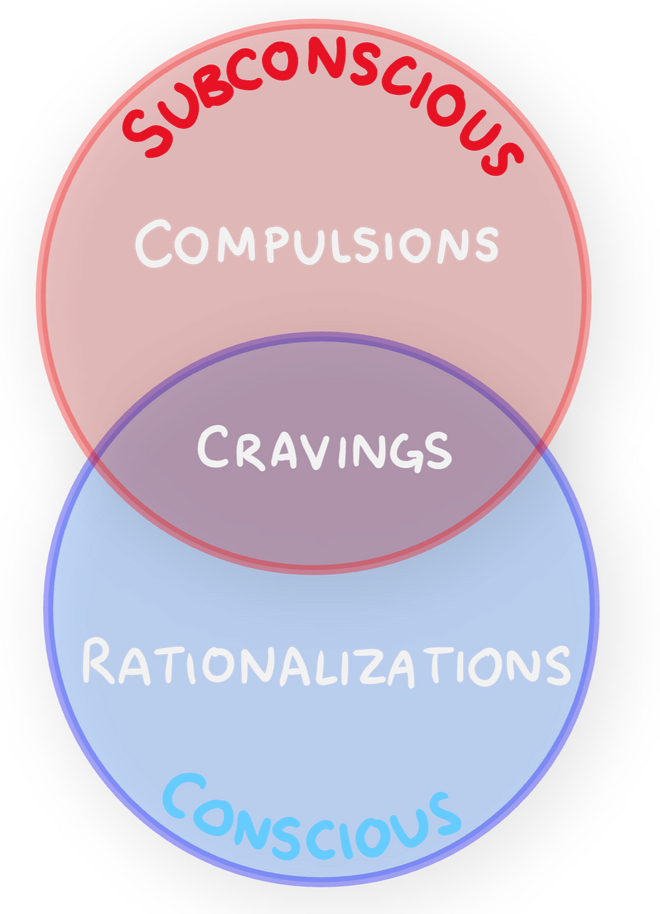
When that hits, you need to stop.You need to sit there and do what you can to observe the impulse. Observe the craving. You need to “there is a goat in my yard” the shit out of both the thoughts and the physical sensations. Get mindful of it all—until you're just watching, without judgment.Next, shine the 10,000-watt lightbulb of awareness on it. Scrutinize the urge. Question it from every angle.Ask yourself,
Is this actually going to help me feel better… or just temporarily relieve discomfort, only for it to bounce back worse?
Am I being manipulated by outdated programming?
What are the longer-term benefits of not indulging? What am I avoiding (increased VIDS?); what am I gaining (more motivation and well-being?)
The goal is to consciously reject the impulse—not out of sacrifice or deprivation, but because you know too much now. You know where these urges come from. You know they’re just misdirected primitive instincts. You know how it ends: the craving doesn’t go away after one hit—it gets more intense. The Doomscroll Feedback Loop spirals out. The VIDS symptoms inflate back up. The Expectation Gap widens towards infinity.You know that for every unit of gratification, there are a hundred units of consequences and regret.It’s just not fucking worth it. Not even close.
Still, making that conscious decision won’t make the craving vanish on the spot. It won’t silence the mental justifications. It takes time for Hot Cognition to run its course.So keep observing. Keep holding space. Stay mindful of the tension, the physical sensations, the thought loops—until they pass. If it gets tedious, unplug and go for a walk or grab a Tier-3 vice.Eventually, the wave will recede. Eventually, you’ll have made the better choice. Eventually, you’ll have responded rather than reacted. You’ll have exercised your freedom.So, going ahead, do your best to remember Covey’s words:
Between stimulus and response, there is a space. In that space is our power to choose our response. In our response lies our growth and our freedom.
With time and repetition, you’ll learn not to trust your cravings. You’ll learn to be skeptical. You’ll hear your rationalizations and call them what they are: lies. Manipulations. Misinformation. Nonsense. Fake fucking news.And also—with time—the cravings themselves will shrink. Their intensity and frequency will drop. As you progress with the method, as your brain finds other ways to experience real reward, and as what Feels Right starts to curve back toward what Is Right…You’ll just want it less.That’s the promised land we talked about earlier. Where Hot Cognition is pointing in the right direction: up and toward your North Star.
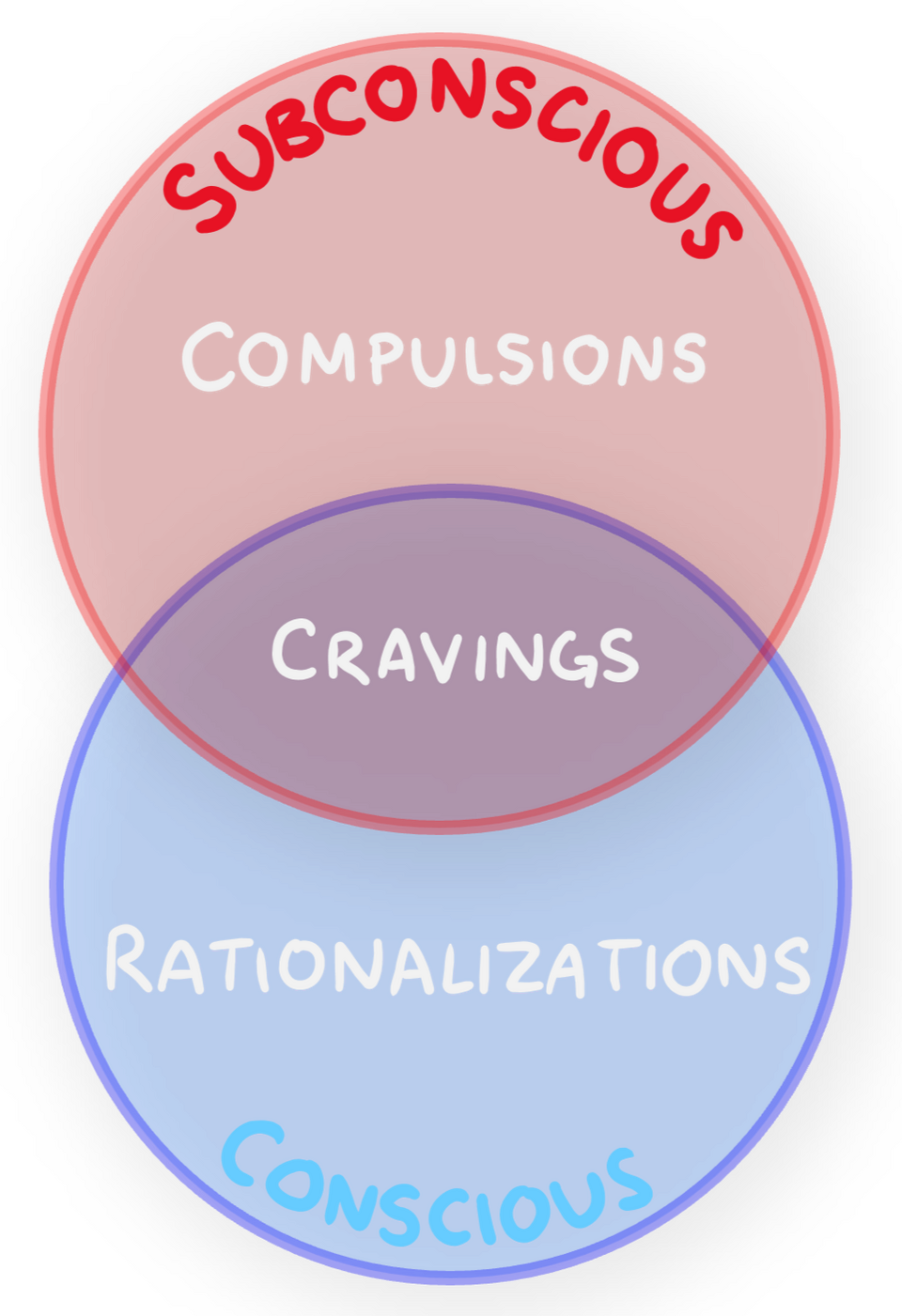
You will get there.But until then, keep using mindfulness to deal with your cravings.
Increasing motivation
The Ghost-House Technique can be effective in overcoming instances of resistance toward your work. But it’s totally normal to want to reduce both the frequency and intensity of that resistance over time. It’s normal to want to reach a point where you genuinely and consistently just Feel Like engaging with your work—without needing a slow-going technique.Full recovery from VIDS symptoms—now that you're blocking your vices—typically takes two or three weeks. Maybe more. While you do need to be patient with this healing process, you don’t have to just passively wait it out. You can actively strengthen your internal motivation during this time.You do this by 'pinning' your work to positive feelings.James Clear talks about this in Atomic Habits. His fourth law, “Make it Satisfying,” asserts that the key to forming good habits is to make sure your brain associates them with a reward. This makes you more likely to want to do it.
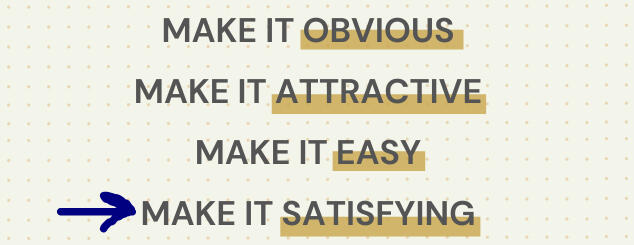
But, there’s a problem with this. As Clear explains, with good habits, rewards aren’t guaranteed. And when they do show up, they’re usually indirect, require lots of repeated effort, and take a long time to arrive.Unlike vices—where the reward is obvious and immediate.As Clear writes:
"In a perfect world, the reward for a good habit is the habit itself. In the real world, good habits tend to feel worthwhile only after they have provided you with something. Early on, it’s all sacrifice."
Take, for example, a young pianist at her first recital. Receiving a standing ovation—if she happens to be talented enough to earn one—is a supremely gratifying reward. But that reward comes at the cost of thousands of hours of solitary and praiseless practice, which most people just can't seem to do. This is a classic case of delayed gratification.
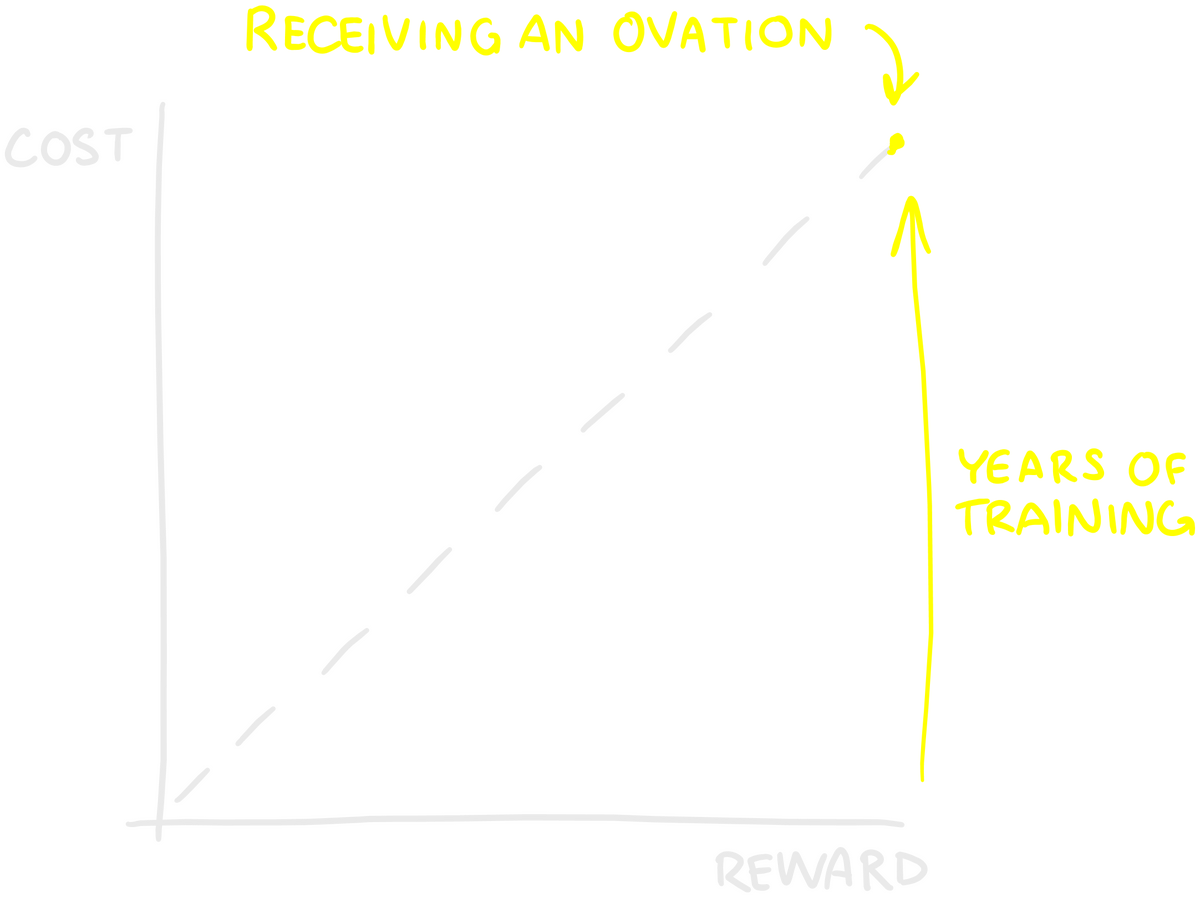
Clear’s solution to this dilemma is to proactively attach an immediate reward to the habit—something separate, but directly tied to the action. He calls these incentives.For example, people didn’t adopt the habit of brushing their teeth until toothpaste companies added a foaming agent and peppermint flavoring. It was the immediate reward—the taste and mouthfeel—that led to widespread adoption of the habit, long before anyone cared about plaque or gum disease.Clear gives a few more examples of using incentives:
To curb impulse spending: Every time you resist the urge to buy something, move the money into a savings account for something big—like a trip.
To establish an exercise habit: Reward yourself with a massage after a successful workout.
To get your daughter to stay consistent practicing piano: take her out for ice cream after.
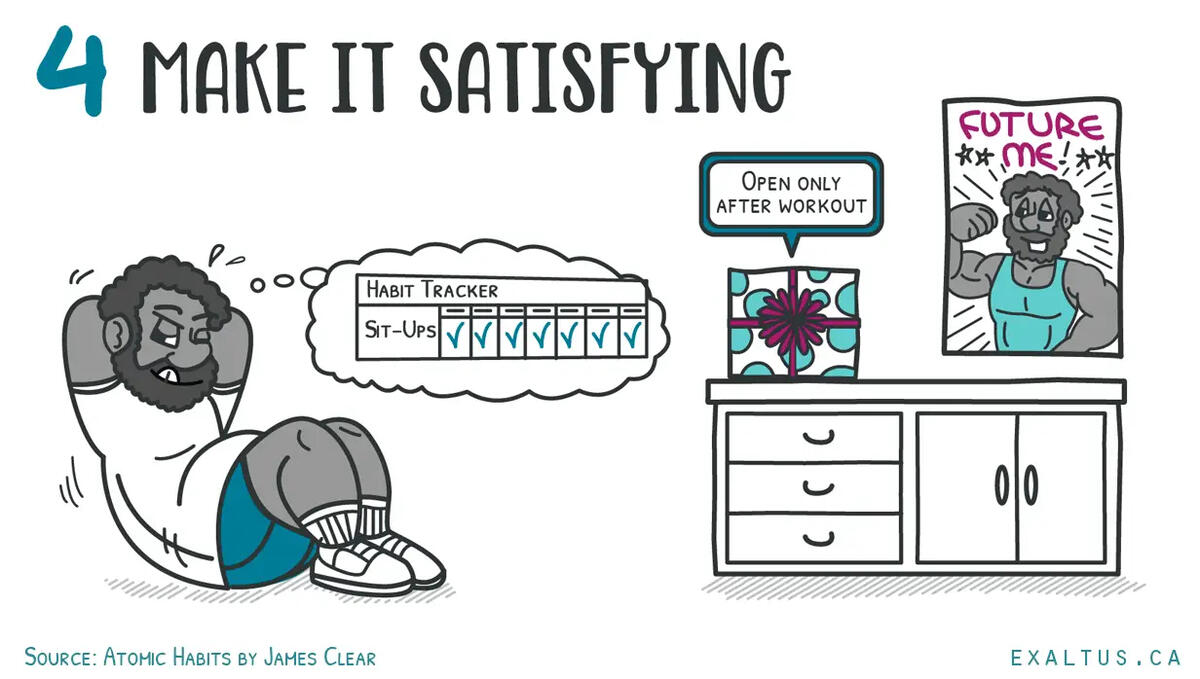
When I first read this, I agreed with the concept. But on reflection, I found the practical application lacking. I was like,
"Wait, am I supposed to book a $100 massage after each time I go for a jog?Should I keep a bag of gummy bears at my desk to reward myself each time I complete a work task?And do I need to launch a playlist of hyper-stimulating MrBeast videos while folding laundry?"
The problem is, as established by a ton of life experience, "rewarding" myself doesn’t work.It’s either too cumbersome—requiring extra steps that I’ll do once or twice before abandoning (like Clear’s impulse-buying example)... Or it just reinforces the idea that the work is tedious—which makes the resistance worse.I don’t know about you, but the idea of forever needing a carrot on a stick to entice me to do what I already know is best? Not appealing. I don’t want to treat myself like a stubborn donkey. At least, not over the long term.And let’s be honest: it’s never long before my brain decides to skip the middleman and go straight for the sugary bait. If the gummies are in my desk drawer, I’ll eat them before doing the work (while watching MrBeast). Rewards just don’t work.But there is a way out. There’s a way to make what Is Right begin to also Feel Right.It starts by realizing that what Is Right can also feel good.Because Clear got it wrong when he wrote:
"Good habits tend to feel worthwhile only after they have provided you with something. Early on, it's all sacrifice."
Just because an act requires effort—or even discomfort—doesn’t mean it can’t be satisfying or rewarding.On the contrary: doing something good for yourself, however small or inconsequential, does feel good. Maybe not the first time. Maybe not every time. But the potential for immediate reward is there.The problem is that we hardly pay attention to it.You just need to train your brain to:
Take notice—using mindfulness
Systematically associate the good feeling with the action that preceded it (aka 'pinning')
Repeat the process a bunch of times
With good habits, gratification doesn’t have to come only after years of effort. It can be both immediate and delayed.
Using mindfulness to generate motivation
Imagine—and this may be hard for you—that you woke up early, started your work or school day feeling inspired and energized, and managed to make it through the entire day with solid concentration and productivity.At the end of that day, how would you feel?Good, right? Amazing, maybe? You might even be inclined to let loose with a heel click or a little fist pump.

And what if in that short moment, you stopped? What if you zeroed in on the sensation—really took it in with your full awareness? What if you then did your best to mentally associate the good feeling with the action—working hard—that preceded it?Wouldn’t that be exactly the kind of experience you’d want to repeat, over and over and over again? Wouldn’t that start to increase your subconscious desire and motivation to do that sort of work? Wouldn’t that slowly bend what Feels Right toward what Is Right?Yes, for sure—but there’s a problem.It takes a lot of fist pumps—and many heel clicks—to actually rewire your brain. Right now, working hard—burning a ton of precious calories for some distant, abstract reward—isn’t all that enticing. Not when compared to the instant gratification of your vices.And let’s be real: having that kind of “perfect day” is extremely rare. Even on a good day, you probably still waste time here and there. So when the day ends, it doesn’t feel that great.It’s a Catch-22:You can’t have a super productive day because you lack motivation… And you lack motivation because you haven’t had enough super productive days to cultivate your motivation.There is, however, a solution to this.And it lies in the breaks of the Pomodoro Technique.
The Modified Pomodoro Technique
Forget, for a moment, being productive for an entire day.Imagine if you just managed to work successfully for a single 20-minute time block. (Or recall what just happened if you got some work done during the previous Ghost-House Technique exercise.)Maybe you won’t feel like doing a heel click—but chances are, you’d feel good.

One of these moments won’t do much. But imagine four, eight, or even sixteen of them every day. That’s the kind of repetition that actually starts rewiring your brain. That’s what you need to build habits.
I encourage anyone to use the Pomodoro Technique for work or study—if only for ergonomic reasons. If you’re unfamiliar, it’s nothing too fancy. You simply break your session into work/break intervals: 25 minutes of work, followed by a 5-minute break. Repeat. That’s it.What’s key though—what can take the Pomodoro Method to the next level—is what you do during those breaks.Let’s imagine you just finished your first 25-minute work block of the day. The timer chimes. Time for a five-minute break.Here’s what to do:
Step 1: Stop.
Mindfully observe what’s happening inside. Notice your thoughts, emotions, and sensations. See if there’s even a hint of a good feeling to center your awareness on.
Step 2: If you find the good feeling, focus on it.
Give it your full attention. Really feel it.
Step 3: Mindfully 'pin' the sensation to the work that caused it.
Then, mentally associate—pin—that feeling to the work you just did.
Here’s what I tend to do for Step 3: I stand up. I focus intently on the sensation. I point to the screen while saying to myself:“That right there. That work is the cause of this good sensation!”From there—if I feel the urge—I let my body take over. Fist pumps are standard. Raising the roof? Also approved. Silly dance? Go for it.

There’s no best way to do this. No right or wrong—anything goes. Just be sure to always point back at the screen and link the celebration to the work.
A half-minute or so later, the feeling might fade. That’s okay.Use the rest of your break for some ergonomic resets:
Look at something distant to rest your eyes.
Walk around.
Shake out your arms and legs, get the blood flowing.
Do some quick stretches (back bends, squats, lunges, wrists, shoulders)
If you’ve still got time, relax into a breath-focused mini meditation.And when the timer chimes again, get back to it. Run through the Ghost-House Technique again if needed—observe, accept resistance, move forward.Repeat this process with every Pomodoro cycle. And when you get to the final chime—when your work session is done—make sure to pin the good feeling of that last unit of effort and to the even greater satisfaction of having completed the whole session.Never let a good feeling go to waste.
Pinning your way to better habits
This Pinning practice isn’t limited to work or study.Start applying it after a morning run, a meditation session, or cooking a healthy meal. After completing these activities, savor any positive feelings that emerge—satisfaction, well-being, a "runner's high", or even just the relief of having followed through or checking an item off a list.
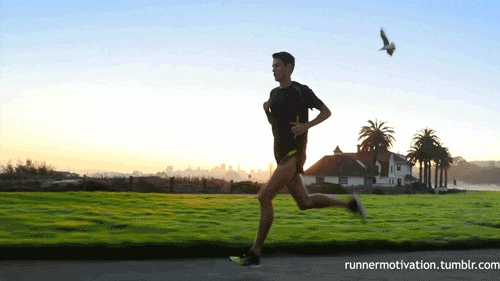
Then, mentally link those emotions to the activity. Reinforce the connection between positive actions and positive outcomes. And yes—augment the effect with fist pumps, goofy dances, or whatever body movement helps drive it home.With enough repetition, you’ll find that resistance toward these habits gradually softens—sometimes even replaced by a subtle desire for them.More broadly, with each act of pinning, you start to turn self-improvement into what it needs to be: A sustainable journey of small victories, subtle joy, satisfaction, and micro-boosts in self-worth, trust, and confidence.And it’s those feelings that pull you back toward healthy actions. It becomes a positive feedback loop—a kind of recursive growth in your overall well-being.

So once again: Never let a good feeling go to waste.
Limitations of Mindfulness
Sorry to state the obvious, but for mindfulness to work, we actually have to do it.The problem is, we often forget. In the heat of the moment, it either slips our mind entirely, or our good intentions and promises to apply it simply can’t compete with the intensity of acute emotions.In other words, one of the biggest limitations of mindfulness is that there’s no built-in enforcement. It’s purely voluntary—and entirely dependent on you remembering at exactly the right time.There’s a solution to this: adding structure to our lives. We need to get systematic, putting routines in place that serve as reminders and reinforcers of key insights. We need structure to influence ourselves so that, in those crucial moments, we’re prompted to actively practice mindfulness.We need rituals, prompts, cues… we need systems.
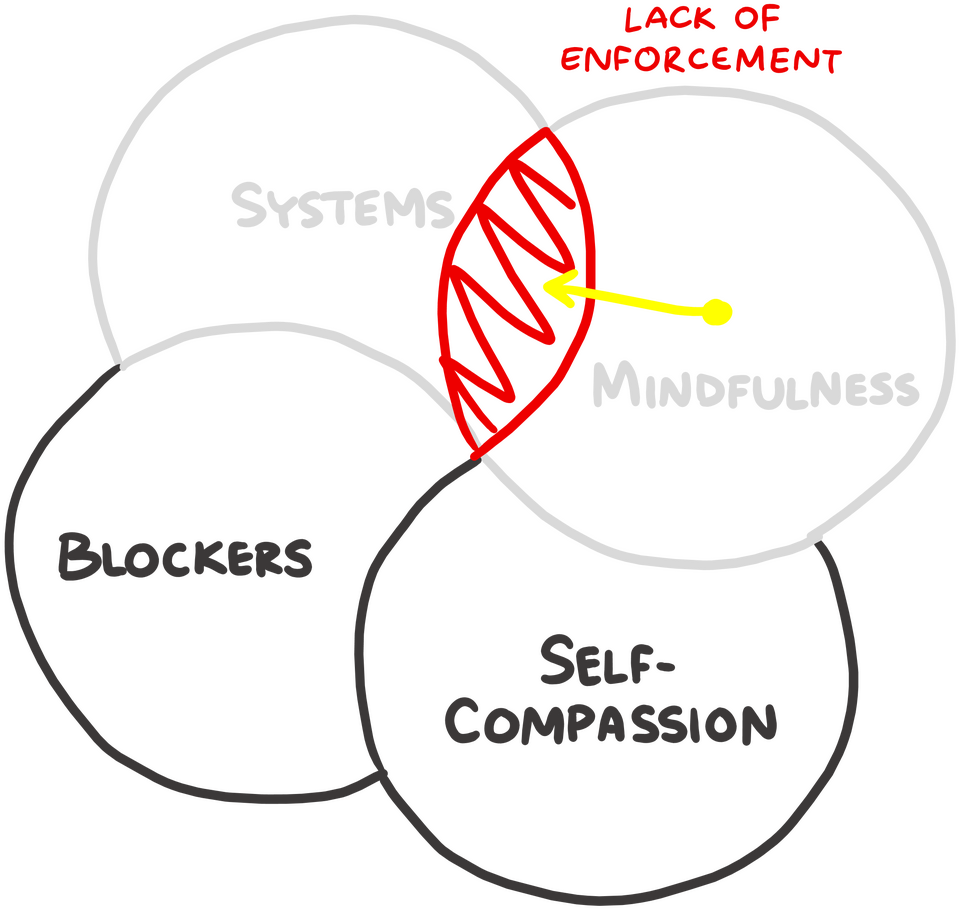
And with that, we’ve come full circle. We’ve placed the last leaky bucket right over the first.The Habit Reframe Method is now complete.
Part Three - Turning The Method into a Lifetime Practice
The Meditation Model
We have within us a force that makes it possible to focus for long stretches and enjoy it, and it will make us happier and healthier, if only we create the right circumstances to let it flow.
— JOHANN HARI
You made it. You’ve reached the end—but one big question remains:How do you actually make all this stick?How do you turn these ideas into a lifelong practice that fuels momentum, produces results, and reshapes your day-to-day experience?Well, there’s nothing I can write here that will force you to implement the method. It’s 100% up to you to do the (simple) setup work, pace yourself through the uncomfortable parts, and apply the principles of unconditional self-love, compassion, and mindfulness at every sticking point.But what I can offer is a model. A way to visualize how the Habit Reframe Method looks in practice—not just in theory.
From this point forward, I want you to think of your workday as analogous to a meditation session. Each session begins the moment you sit at your workstation and ends when you wrap up for the day.The structure, mindset, and even the challenges of meditation... that’s the Habit Reframe Method, applied to real life.Let’s walk through it. We’ll alternate between the familiar structure of a guided meditation and your daily routine in applying the method.
Meditation
You enter a quiet space, close the door, and settle in. You open your meditation app and press play.
Real Life
You turn on your computer, quieted from distractions through friction blockers, and settle in. You open the North Star Prompt and begin reading.
The guide reminds you why you’re doing this. They revisit the intention behind the practice and give you the instructions: do your best to focus on your breath, observe your thoughts, and return gently when you drift.
The Daily Prompt reconnects you to your North Star—why you’re doing this. It reminds you of your rules and commitments, and accepted exceptions. Then it gets practical: you plan your day, pick your time-management tools, and clarify what you’ll do and when.
You begin focusing on the breath. The guide walks you through the rhythm, helping you lock in.
You begin focusing on your work. If needed, you use the Ghost-House Technique to enter a rhythm, slowly settling in, anchoring your attention on the work.
Eventually, the guide goes quiet. Now it’s just you and your breath. The trick is to notice distractions—thoughts, urges, reveries—and gently set them aside, returning to the breath.
Once you’ve built momentum, you release the scaffolding. Now it’s just you and your work. When distractions hit—the itch to check the news, scroll, escape—you pause, notice it, and gently return to the task at hand.
You get distracted. A thought about how easy it is not to think.But this is what brains do. They think. So you don’t scold yourself. You don't get frustrated. You revert: you note what just happened, then gently return focus to the breath.This is the practice.
You get distracted. A compulsion to check the news.But this is what brains do. They act on what feels right, and in that moment, seeking out information felt right. So you don’t scold yourself. You don't get frustrated. You revert: you note what just happened, then gently return focus to your work.This is the practice.
A few minutes later, you find that your mind just won’t cooperate anymore. The breath feels boring. Your thoughts are loud and demanding that you pay attention and sort things out right then.It becomes too much... so you hit pause.You get up to go for a short walk, letting your brain reset and resettle.
A few hours later, you find that your mind just won’t cooperate anymore. The resistance resurfaces and becomes all encompassing. You just can't seem to muster the drive to do anything.It becomes too much... and that’s your cue to stop. To unplug and get up from your workstation.You allow yourself to downshift into a “tiered-down” vice—an audiobook you started last night. 20 minutes later, feeling a little better, you decide to sit with the discomfort and demotivation; to mindfully process any emotions.Your brain resets and resettles.
You return. You take a breath, making sure to not force it and that you’re adequately primed for the “work” of meditation.You hit unpause, folding back into the practice.
You come back to your desk. You take a breath, making sure you’re not forcing it and adequately primed for your work. You do this by checking your expectations, ensuring they aren’t higher than your motivation levels.You reset the Pomodoro timer and gently begin the work.
A chime rings—your cue to check in. Are you still focused on the breath?You weren't—you were fussing over a nostril itch—but you note the deviation and gently revert your focus.
Your Pomodoro timer goes off—your cue to check in. Are you still focused on the work?You weren't—I mean, you were "working", just not on something of high priority and importance—but you let it go with self-compassion, reflecting on what it was that had you distracted.You let it go, getting up for a proper ergonomic break.
You're good for a while before you "catch yourself" midway through a random thought.You note that it happened, apply some self-compassion, and revert your focus back.
You're good for a while before you "catch yourself", phone in hand, scrolling through Instagram.You note that it happened, apply some self-compassion, and revert your focus back.
The meditation progresses. More chimes follow. Each one a chance to come back—to gently reset and reconnect.Yet for many of them, it's not really needed. Your attention is pairing decently well with your breath.
Your workday progresses. More Pomodoro chimes follow. Each one a chance to come back—to gently reset and reconnect.Yet for many of them, you're actually quite focused and productive. So, you take a moment to feel any satisfaction—to mindfully take it in and really feel it. You then pin such good feelings to the work that caused them.
As the session approaches its end, the guide invites you to let your mind wander—to release any fixed objective and simply let your mind do its thing.
As the session approaches its end, you check in with yourself, noticing whether there’s something pleasant there—something you can pin to the mental concept of an honest day’s work.Then you let yourself check your phone or browse a website—but only if you actually feel like it, and if you can be bothered to disable your friction block. In this case, you do, and fifteen minutes in, you close it up, feeling motivated to go for a quick run, then cook something healthy and delicious for dinner.
The practice ends.You feel good and satisfied, both from your commitment to show up and do your best, and from your honest efforts.
The day ends.You feel good and satisfied, both from your commitment to show up and do your best, and from your honest efforts.
This, dear reader, is how you win the long game. It all happens day by day, compassionate reversion by compassionate reversion, productive flow state by productive flow state.Your transformation from who you are now into who you want to be won’t happen by force, nor through some overnight miracle intervention. It’s a journey of a thousand steps. It’s a process. A process of gently realigning your instincts—shifting what Feels Right toward what Is Right.Toward your North Star.
Your turn: Creating Your Wisdom Bank
Alright, so we’re pretty close to the end.At this stage, it’s time to look back and reflect on the key points you’ve learned—the takeaways you want echoed back to you on your journey ahead.In this next and final exercise, you’ll jot these down. They’ll become the reminders that fill your Wisdom Bank, which appears halfway through your North Star Prompt.Once that’s done, you’ll have everything you need for the initial setup of your North Star Prompt. You’ll be able to click through it all and make sure it’s ready for daily use.
Exercise time 🙄
Open your workbook (the duplicated version stored in your private Notion workspace).
Scroll down and click the "Exercise 3 - Setting your Wisdom Bank" button.
Next steps
You’ve reached the end of the webbook. 💪If you’re now asking yourself What’s next? What do I do? How can I help? — then you can follow these steps.
1. Actually Apply the Method
I’ve done pretty much all I can to convince you that change in habits doesn’t come from willpower alone. It comes from a gradual realignment. From slowly teaching your instincts that what Is Right can—and should—be what Feels Right.That’s the “Habit Reframe.”But this being a method and all, none of it matters if it just sits dormant in your psyche somewhere, next to the other brilliant insight you got at that last self-help seminar.No, you need to apply it. To take it seriously and see it through—despite the challenges, setbacks, sticking points, and giant what-the-eff-do-I-do-now question marks.When you get stuck—when you don’t know what to do—that’s when you reach out. Hashing out a mini game plan for specific situations is kind of my thing (I’ve confronted a million of them). I’m here for that—and for you.So yeah. You’re at the point where it’s time to really implement what you’ve learned. To change into the person you’re meant to be. And that change won’t come from seminar-induced "breakthroughs." It’ll come from small, repeated choices.Choices that begin now.
Here's your recap-and-go game plan
1. Activate your first bucket: Systems
By now, you'll have your North Star Prompt ready, setting it to auto-open when you launch your work session (right? right). You'll spend 2–5 minutes clicking through it each morning. This simple habit anchors your day in meaning and purpose—before the pull of vices kicks in.
2. Activate your second bucket: Lock down your tech vices
Social media, YouTube, Reddit. You need time away from these vices to let your VIDS symptoms fade. Install Cold Turkey. Activate screen-time limits on your phone. Make it unchangeable without friction.
3. Activate your third bucket: Self-Compassion
Let time pass, all while offering yourself kindness and self-compassion.This is what sets the method apart.Do what you can to lower the expectations you put on yourself—down well-below your actual capacity to do work. Otherwise, you’ll get frustrated with yourself and reach for a vice.
4. Activate your fourth bucket: Mindfulness
Be mindful of the discomfort during your Vice Flu and any Emotional State Crashes. Take breaks using your tiered-down vices. Remind yourself about Emotional State Permanence Bias. You will feel different. Things will improve if you just wait, let go, and let time pass.And remember: never force yourself to work. Doing so only reinforces negativity toward your work. You want to be “pinning” good vibes to it, not bad. Use the Ghost-House Technique if you absolutely need to get work done.From there: Pin every win.After each Pomodoro, mini-task, workout, or self-care act, pause to feel the satisfaction. Act it out—fist pumps, dance moves, self high-fives—and mentally link that good feeling back to the action. Over time, these moments retrain your brain, increasing your motivation toward them.It’s how you reconnect what Feels Right with what Is Right.
Throughout: Offer yourself Instant and Unconditional Forgiveness when you slip up
You deserve compassion. And forgiveness. And the space to process what happened—to take in the data and calm your nerves.Guilt, shame, self-reprimand, negative self-talk... none of that ever helps. Compassion and calm, objective reflection does.
Daily: Repeat and iterate
Think of this method—and life, really—as a series of meditation sessions.You make a quiet commitment to some rules. You do your best for the day. You celebrate when you're good. You forgive and revert when you're less good, perhaps altering your system if needed.That’s all you can do. But that's plenty. That's more than enough to succeed with the Habit Reframe Method.
So those are the steps. You won’t master them all in a day—but you will get better each time you show up.Stick with it this week. Track how it feels. Adjust as needed.The Habit Reframe Method only works when you make it your own. Time now to begin.
2. Reach out
I know I've repeated this 100 times, but seriously, I want to hear from you.Shoot me some feedback, comments, suggestions, criticism... or let me know how your progress is going. Small wins, big wins, tiny slip-ups, colossal failures, how your cat is reacting to your personal transformation... I want to hear about it all.My aim is to make this thing better and better—and to eventually expand it to address specific needs and scenarios. And that takes lots and lots of feedback.
3. Support This Mission
If you've found this thing at all useful, there are three simple ways for to support this mission and have it help others like you:
1. Leave a review
Please take a second to leave a review or provide some feedback.If you’ve found value in this webbook, I’d be beyond grateful if you’d consider sharing your experience through a review. Your honest feedback helps others who are struggling just as you once were before discovering the Habit Reframe Method.When someone sees themselves in your story, they find hope that change is possible for them too.When writing your review, consider touching on what led you here—the specific struggle or pattern you were stuck in. You might share what made you skeptical at first, or what clicked for you—the particular insight or technique that helped you see things differently.Even just a few honest sentences can be the thing that helps someone else finally take that first step.
2. Help spread the word
I also ask you to do what you can to share the method.You’ve experienced firsthand how the Habit Reframe Method can transform daily struggles into opportunities for growth.I mean, I hope that’s been happening.Now, you have the chance to extend that transformation to others who might be stuck in the same cycles you once were.Ask yourself, who in your life needs this method right now? Who’d listen if you told them, "This helped me, and I think it might help you too."Think about the friend who's stuck in a rut of inaction, the colleague who constantly battles procrastination, and the family member caught in self-sabotaging patterns. Think of your group chats or the online communities that would do well with a recommendation that wasn’t Atomic Habits for once.Like literally, right now, you can head over to r/GetDisciplined, and witness the daily stream of people just like you—like us—desperately asking for help and direction.All you need to do is encourage them to check out the 20-Minute Motivation Method with your invite code: (click the "Share the method" button ↗).The free PDF there—based on my best and all-time upvoted post—provides a ton of value and practical insights they can apply right away. Loads of people have experienced meaningful shifts just from the principles outlined there (here’s proof—scroll to the comments).Any recommendation helps. Like, a lot. Word of mouth truly trumps anything I could write in a sales page.So yeah, a huge thanks for doing all you can to help.Note: Want to recommend this webbook to more than a few people? Want to earn some income with each conversion? Write me a message letting me know—I'll get back to you about setting something up.
3. Stay Subscribed
As promised, letting the first payment go through after the 7-day free trial is all it takes for permanent access to this webbook.That said, if you have the means, I’d be incredibly grateful if you chose to stay subscribed for as long as you can. Your support goes a long way—it not only covers hosting costs, but also helps fuel the mission by funding paid promotions (which, in turn, support smaller content creators), helping more people discover and stick with the method.You’re also welcome to switch to annual billing for a 67% discount (make the switch in your account settings). Or, if you’d rather stay on monthly payments but at a lower rate, just reach out and let me know the amount you’re comfortable with—I’ll adjust it on my end, no questions asked.Every bit of support makes a bigger difference than you might realize. Thanks so much for being part of this.
4. Join the Group Accountability Program
For a few years now, I’ve hosted a Discord group where participants are simply tasked with submitting a weekly check-in. Failure to do so means you get charged $50, which goes to charity.What went well? What went wrong? What did I learn? What will I do this week? — that sort of thing.It’s also a place to ask questions and interact with a like-minded community. On request, I’ll even facilitate pairings for accountability buddy systems.I’m very selective about who’s allowed in, just to keep the quality of the community solid. So if this is something that interests you, and if you’re willing to chip in on a monthly basis (we’re operating on a pay-what-you-can model), then write me a message in the Q&A.
Final Thoughts
In Japan, they repair broken ceramic bowls with gold lacquer and consider it “more beautiful for having been broken”. That, to me, sums up the people I have met who are in recovery.
— CATHERINE GREY
From time to time, I find myself browsing personal development subreddits and other online forums. I’ve also had the privilege of speaking directly with hundreds of people, either in comment threads, DMs, or through the group programs I've come to host.Though it’s often initially hidden or masked, I invariably see a lot of pain and frustration. I also see a great deal of self-directed resentment and anger—or, just as often, shame and harsh self-reprimand.I see it in people’s desperate attempts to cope with their vices. I see it in the repeated cycles of making and breaking the same promises and resolutions. I see it manifest in a wide range of mental health struggles. I hear it in their agonized pleas for help.I truly believe that many people could benefit immensely from the core ideas and lessons in this webbook. And I believe you, dear reader, can and will benefit by doing all you can to apply the Habit Reframe Method in your daily life—and by choosing to make it a lifelong practice.But if I could ask you to carry forward just one message, it would be this: Love yourself.To love yourself means centering your self-improvement journey around self-understanding, kindness, compassion, patience, and mindfulness—instead of relying on self-control, willpower, force, expectations, pressure, or coercion.I use time management strategies and productivity apps like anyone else, but I’ve learned from experience that none of it truly works until you learn to love, accept, and be kind to yourself.And I speak of self-love and self-compassion not because I’m a positivity-obsessed hippie or because “it feels nice,” but because it’s practical. Self-love is deeply pragmatic.Loving yourself leads to more mental clarity and inner peace.More peace leads to more sustained motivation and drive.More motivation leads to more useful action.More action leads to a better life.Ergo, self-love equals a better life.In other words, loving yourself causes self-improvement—it’s not the other way around, as so many people mistakenly believe. The idea that “Only once I become better with my productivity and habits will I finally love myself” is all too common—and tragically flawed. I know, because I believed it myself for most of my life.To build good habits and leave the harmful ones behind… to make the world a better place… to live in peace and happiness… you must accept and love yourself first.Period.
So, with that final message, it’s time for me to wrap this up. Much love to all of you, and thanks so much for reading.Be well,— Simon ㋛
The Habit Reframe Method and all related materials are original works and protected under copyright.

